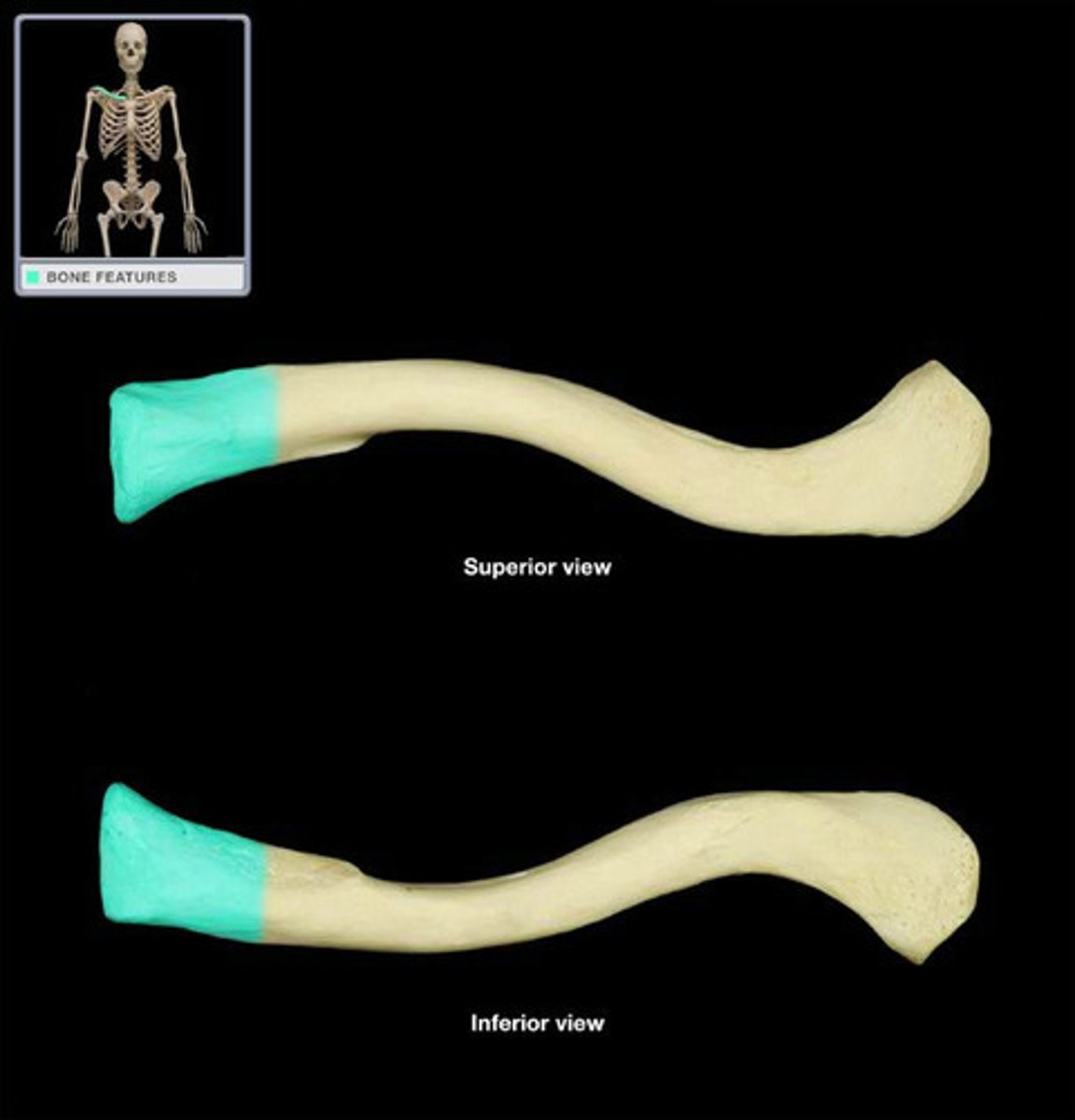ANTH 336: Scapula, Clavicle, Humerus, Radius, Ulna, Ribs, Sternum, Vertebrae, Skull, Sphenoid
1/172
There's no tags or description
Looks like no tags are added yet.
Name | Mastery | Learn | Test | Matching | Spaced |
|---|
No study sessions yet.
173 Terms
Body
The only part that lies on and immediately adjacent to the midline
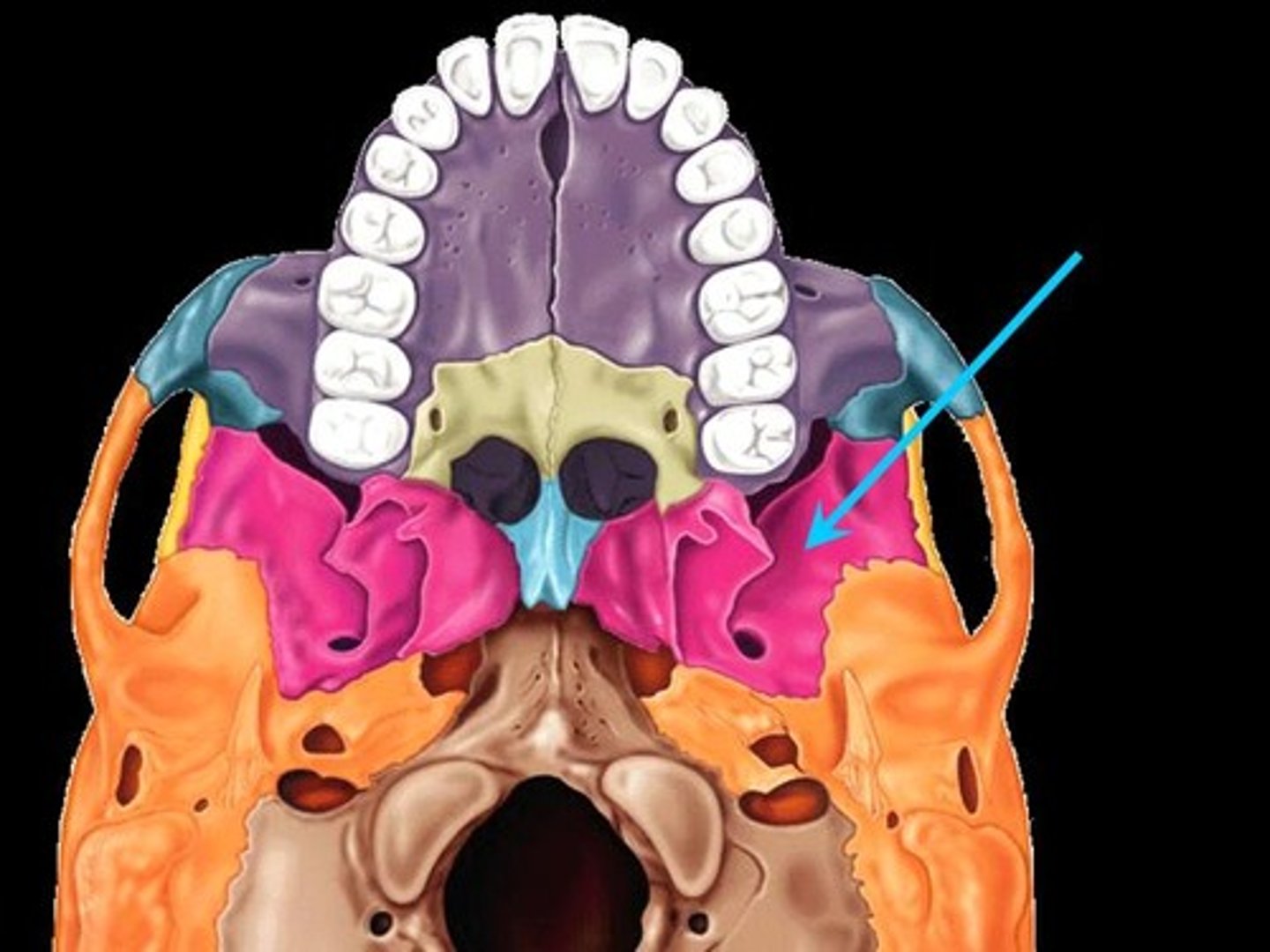
Optic Canals
Seen to either side of the body
They pass anteroinferior to the lesser wings, just medial and superior to the superior orbital fissure
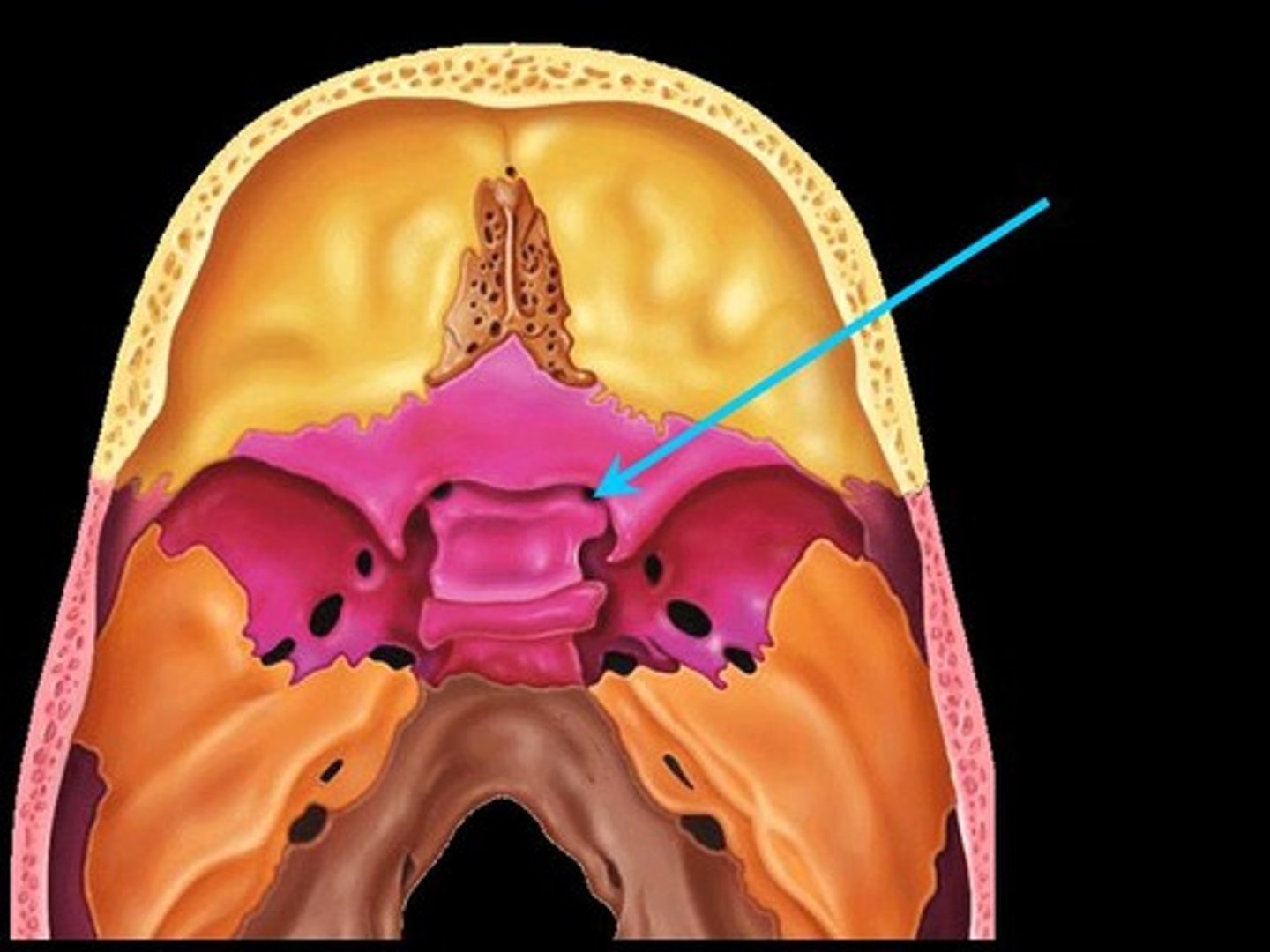
Sella Turcica
A saddle-shaped depression on the endocranial surface of the sphenoid
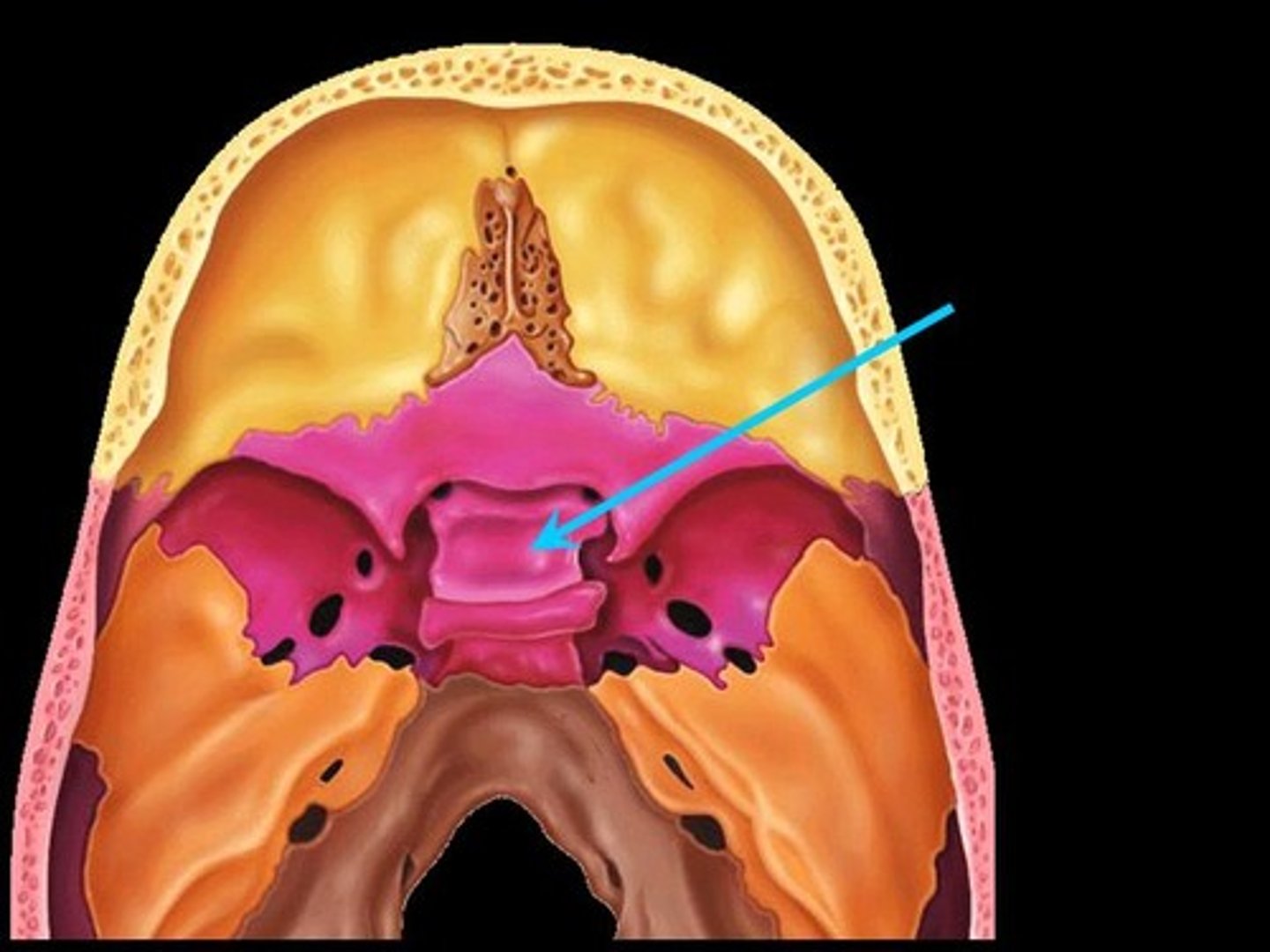
Hypophyseal Fossa
The deepest depression of the sella.
Holds the pituitary gland
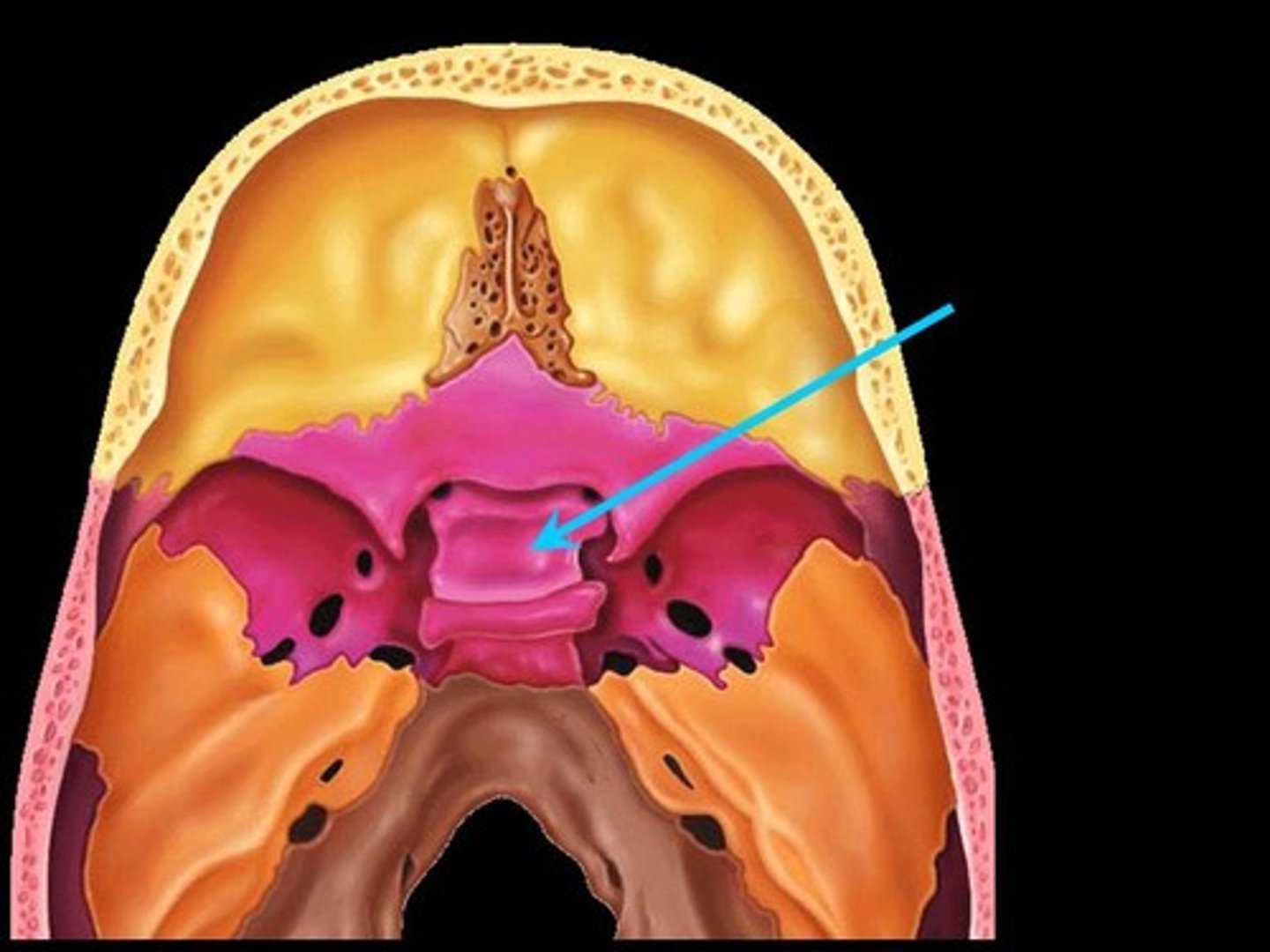
Dorsum Sellae
The square plate of bone that forms the posterior boundary of the sella turcica
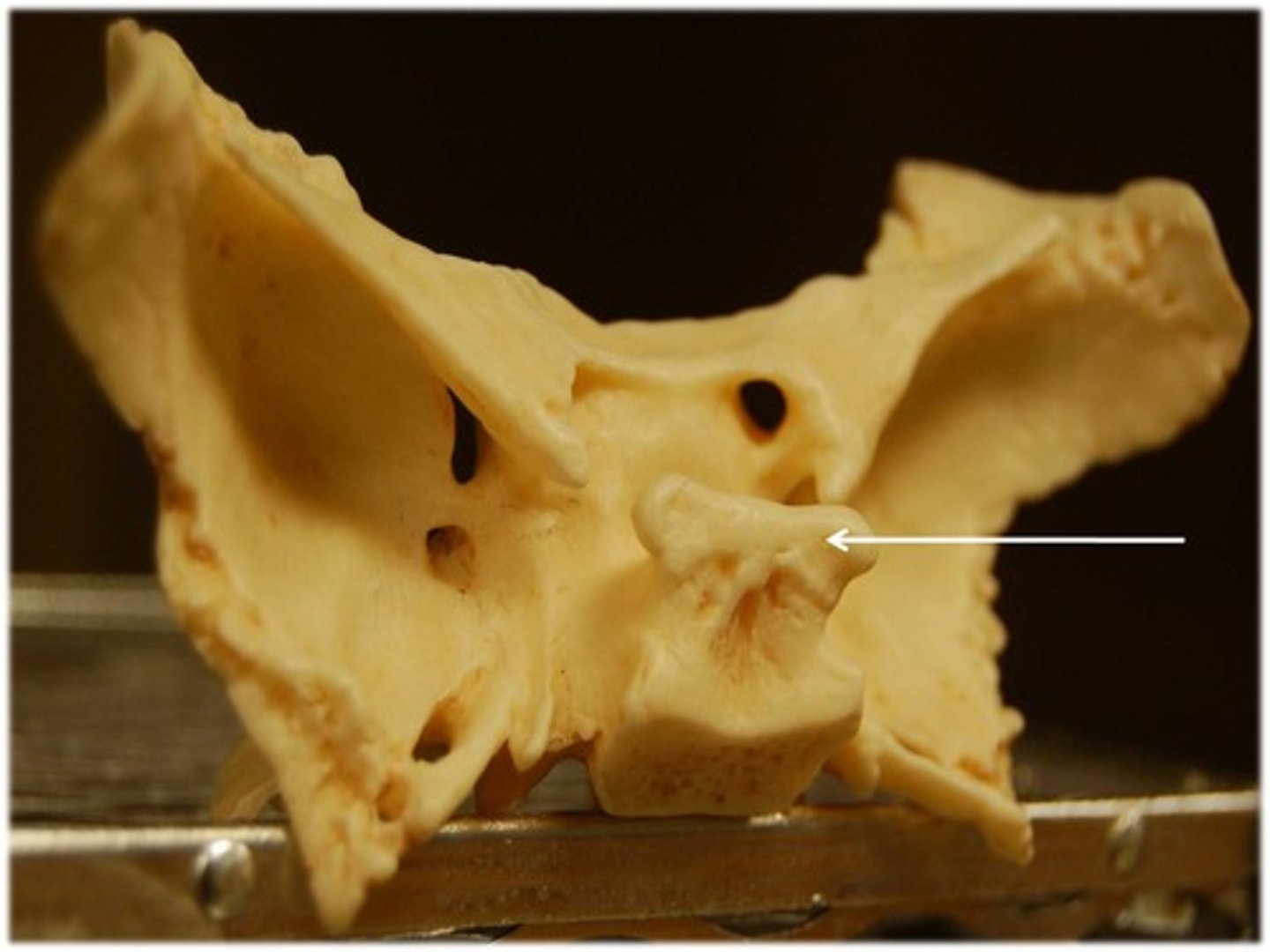
Posterior Clinoid Processes
The two highly variable tubercles located on the superolateral corners of the dorsum sellae

Clivus
The slight endocranial hollow that slopes posteriorly from the dorsum sellae toward the sphenoocipital suture
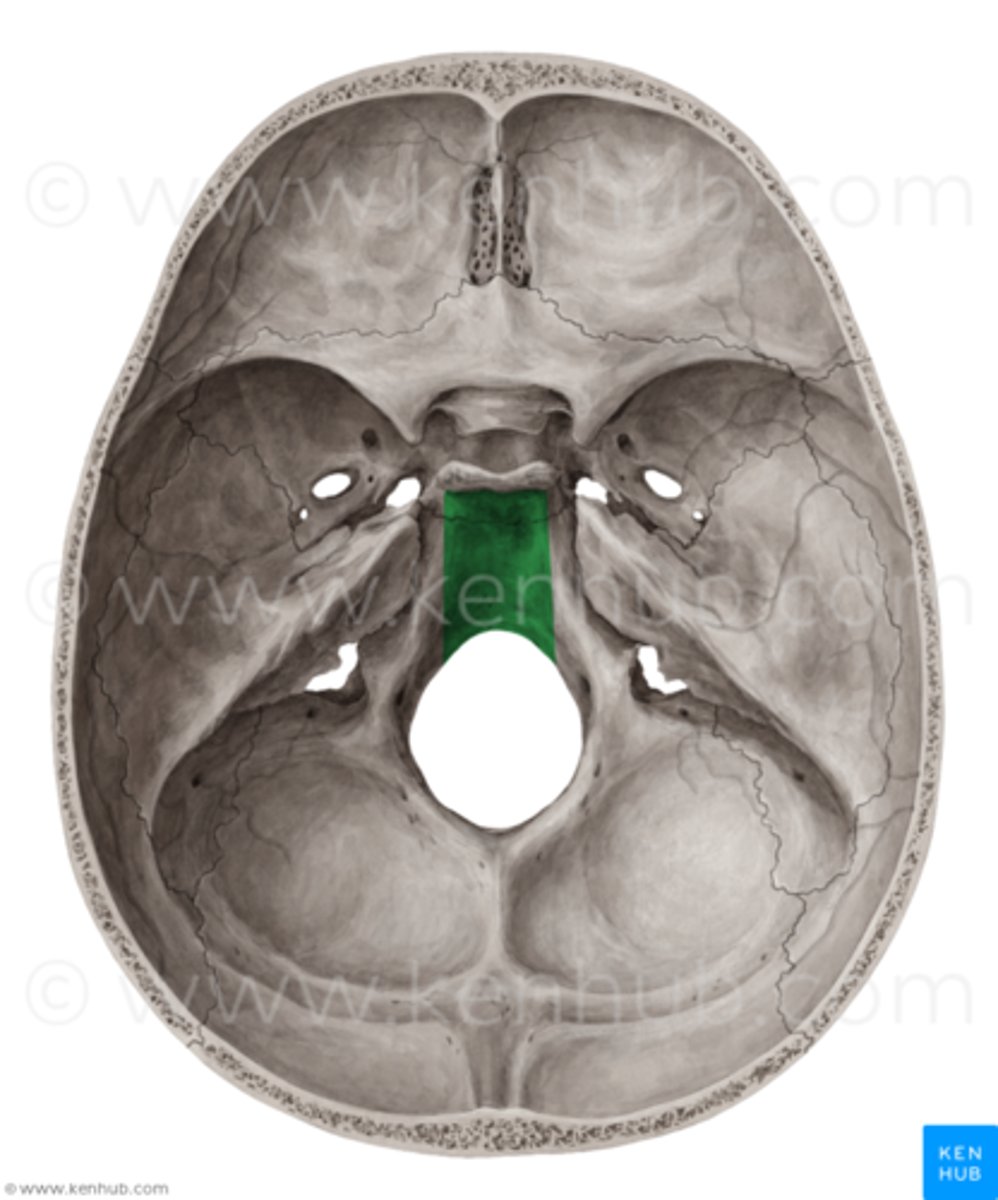
Sphenoidal Sinuses
Large, paired hollows within the body of the sphenoid
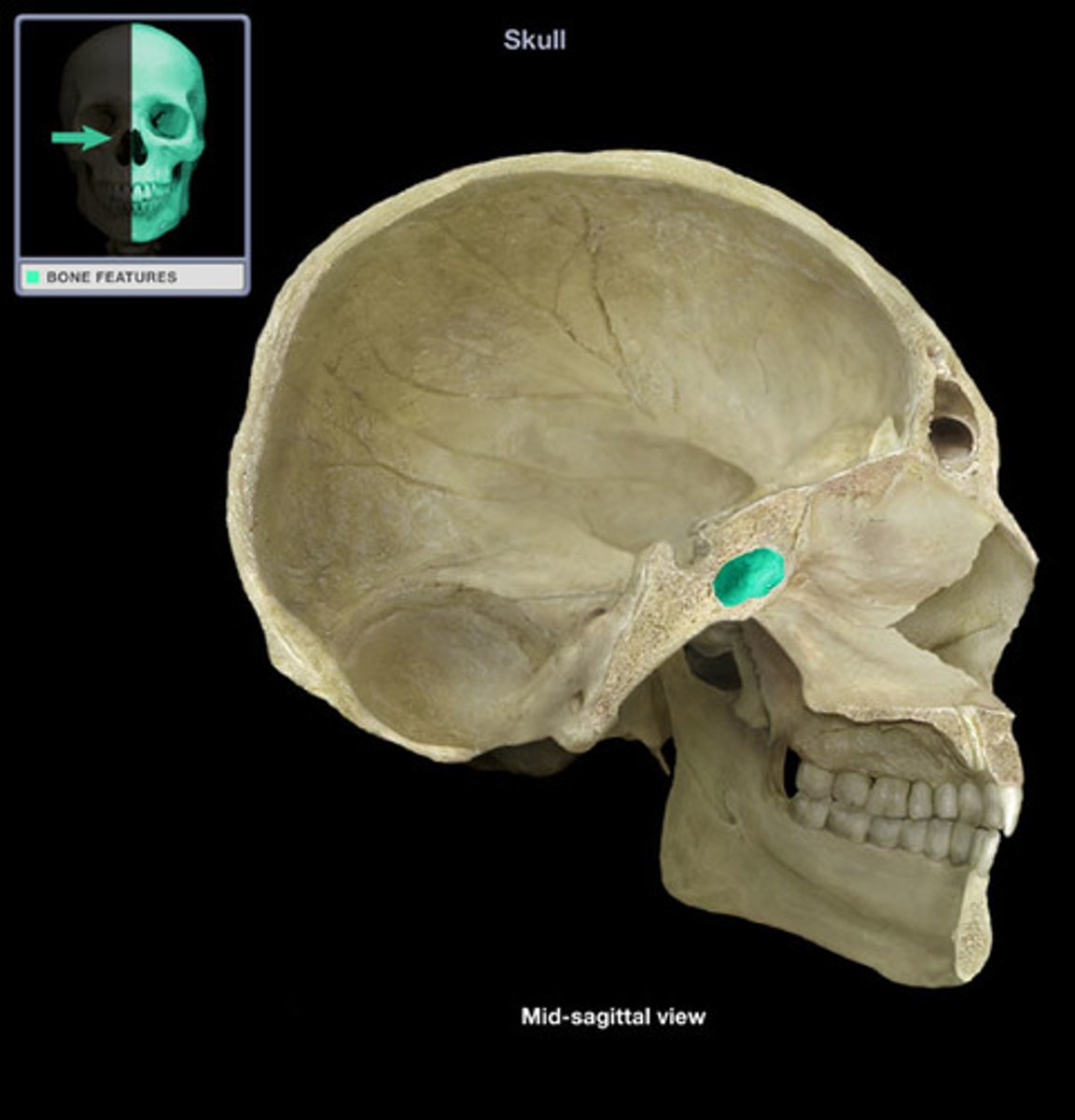
Sphenoidal Rostrum
A midline bony projection on the anteroinferior surface of the body of the sphenoid
Sphenoidal Crest
Continuous with the rostrum, extending superiorly from it on the anterior surface of the body of the sphenoid
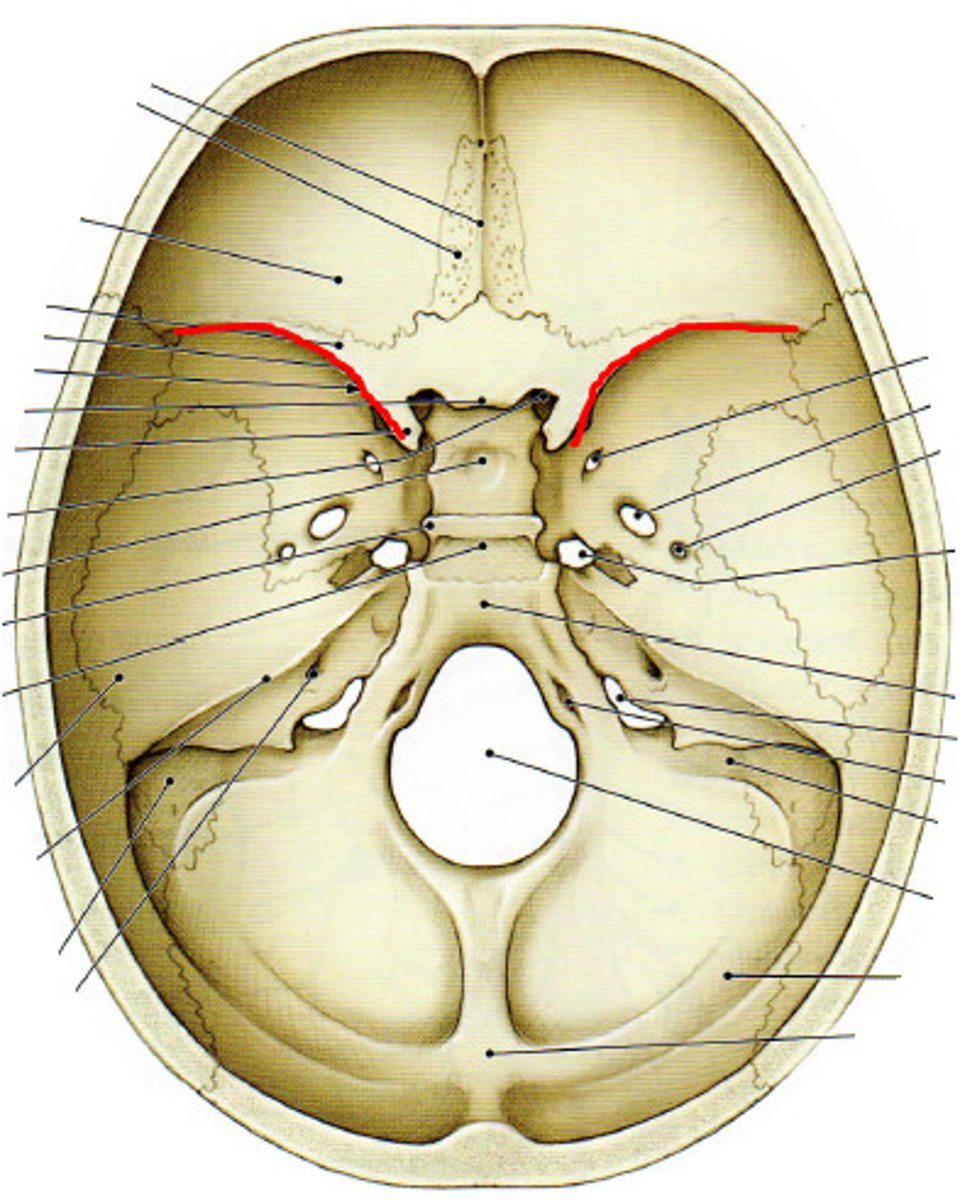
Greater Wings
Attached to the body
Segments that extend the farthest laterally from the body
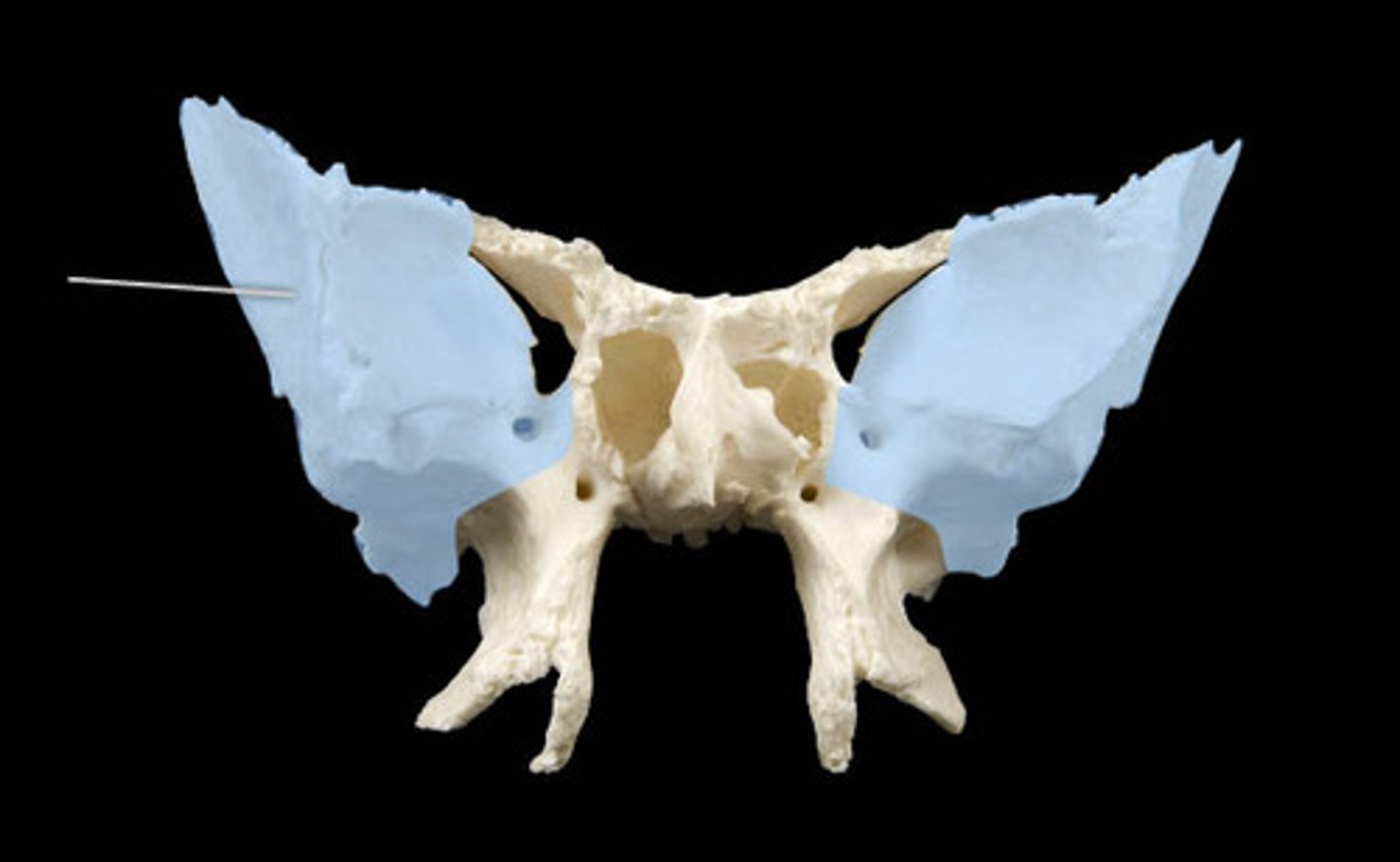
Superior Orbital Fisures
The open spaces between the inferior surfaces of the lesser wings and the anterior surfaces of the greater wings
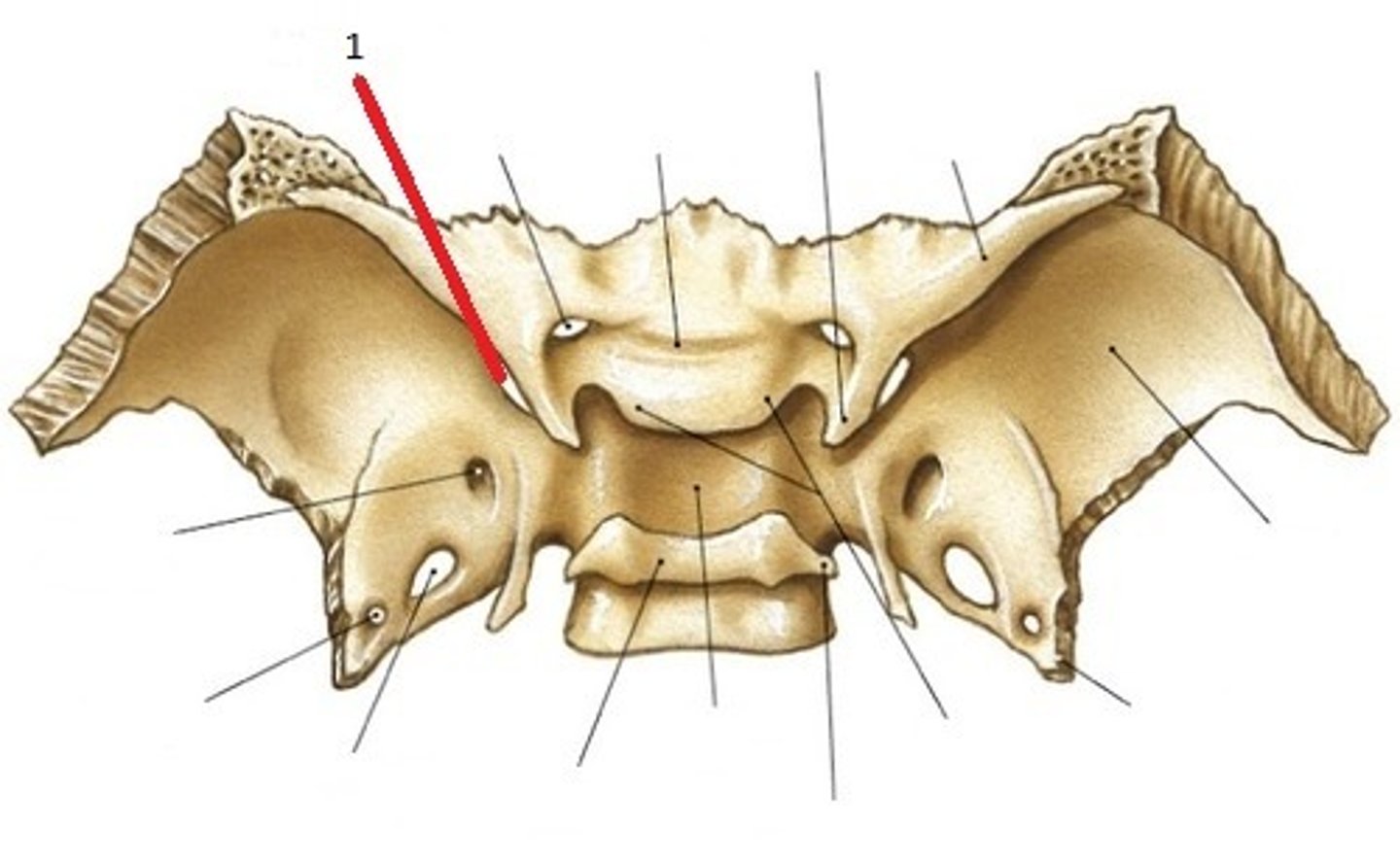
Foramen Rotundum
Situated in the most anterior and medial part of the middle cranial fossae at the junction of the greater wings and the body
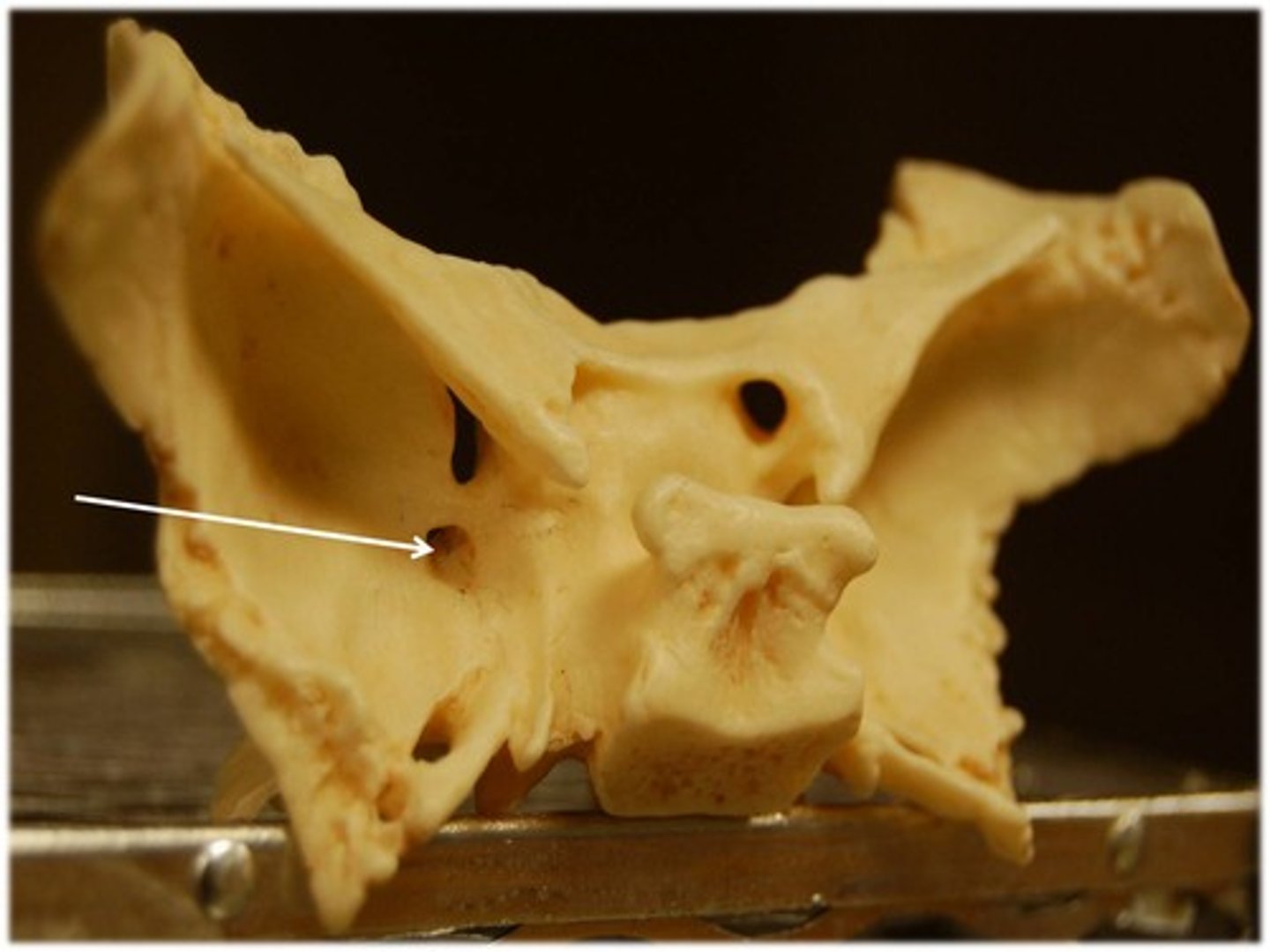
Foramen Ovale
Located posterior to the foramen rotundum on each side, approximately in line with the dorsum sellae in endocranial view
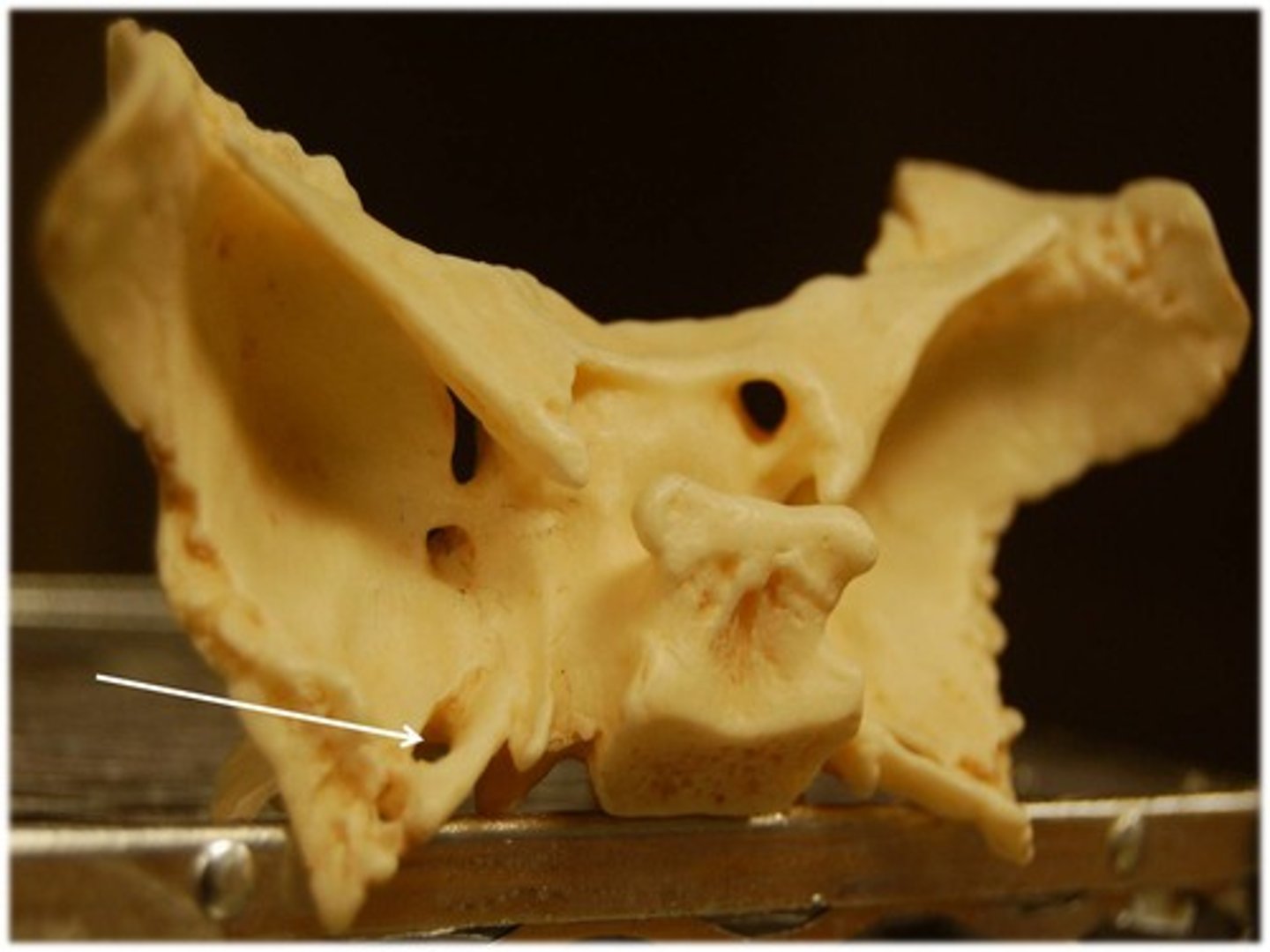
Foramen Spinosum
Located on each greater wing just posterolateral to the foramen ovale
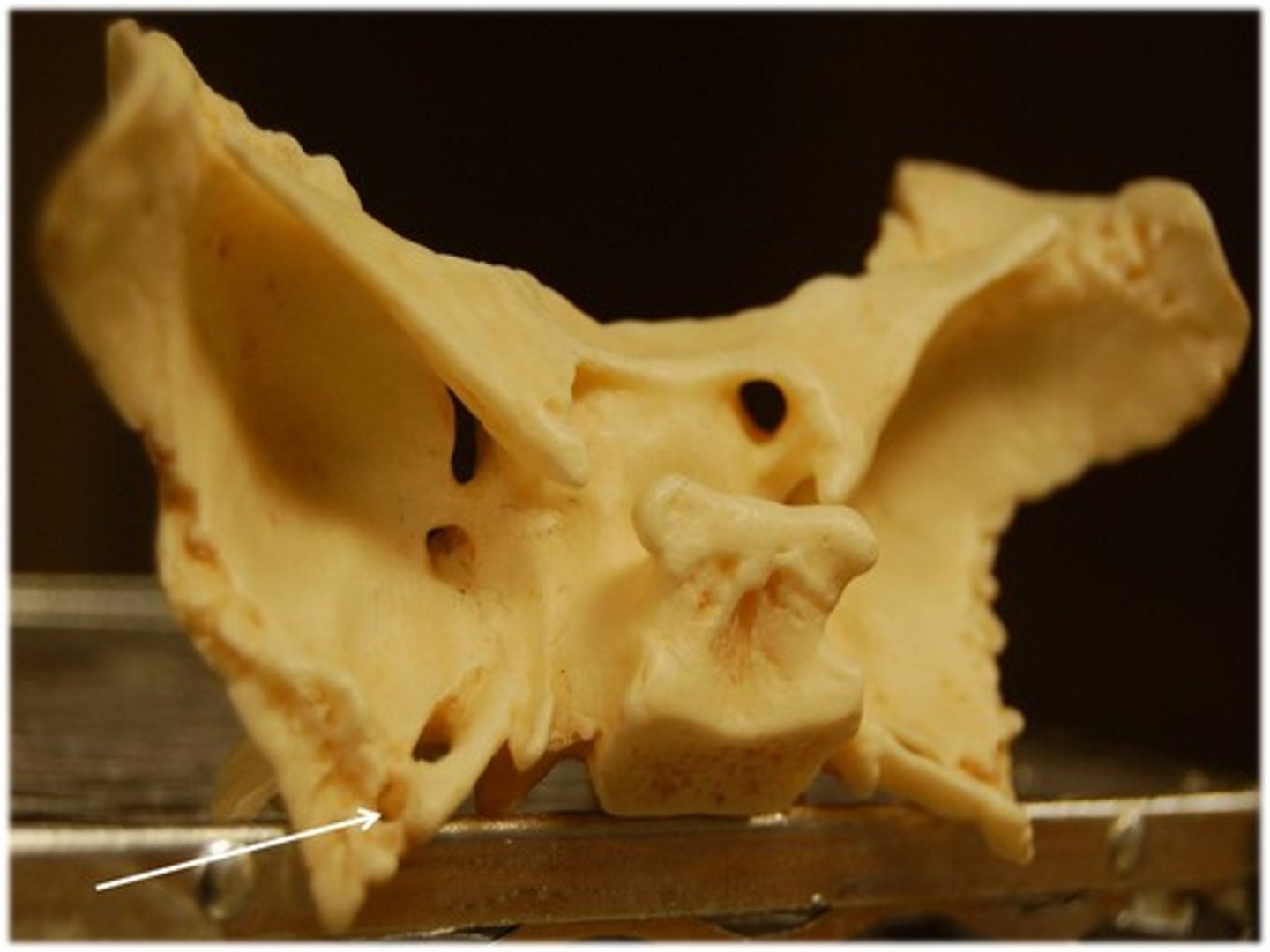
Infratemporal Crests
Mark the ectocranial surfaces of the greater wings
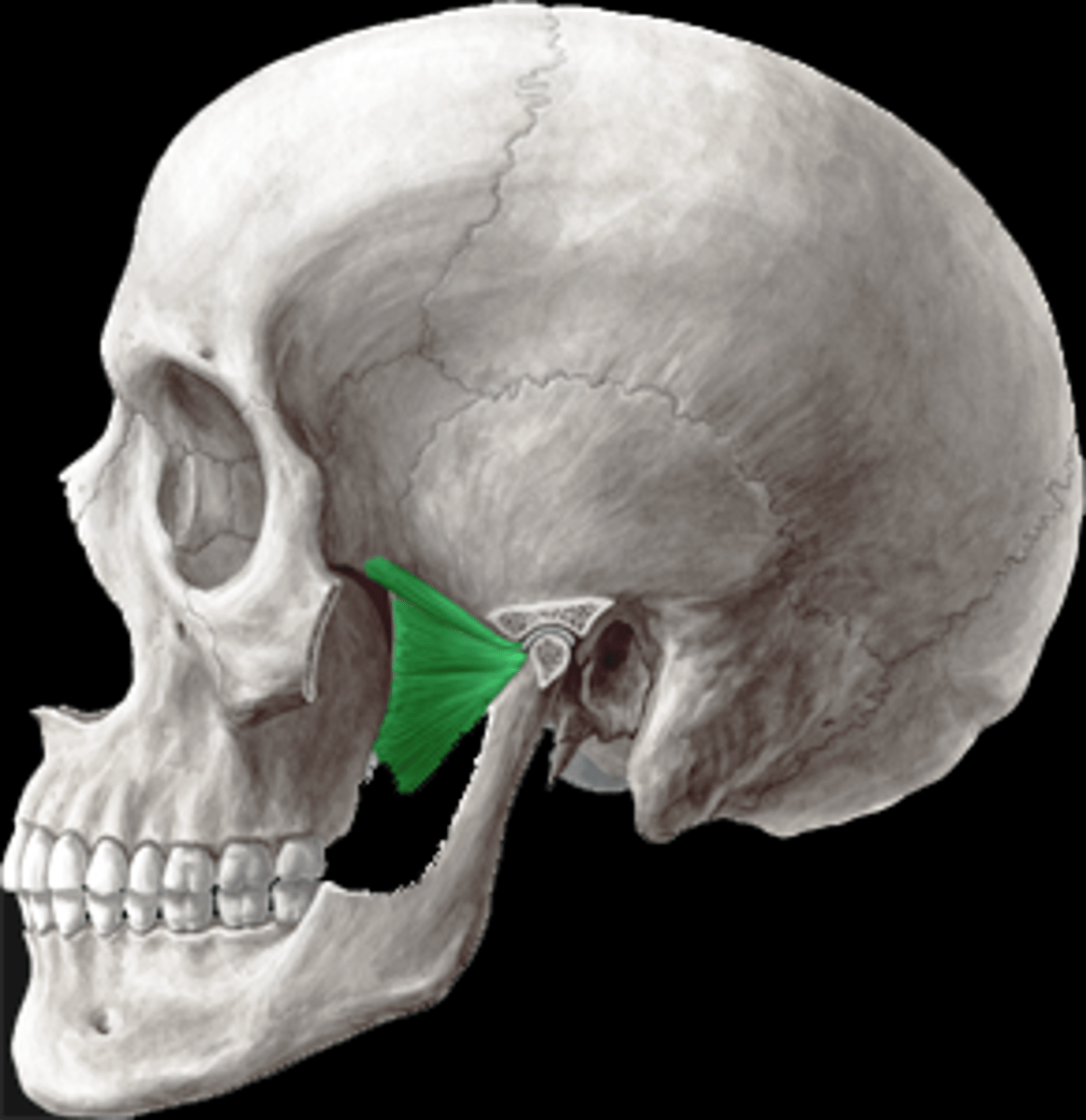
Orbital Surfaces
Form the lateral wall of each orbit, are very smooth and flat in comparison to the endocranial surfaces
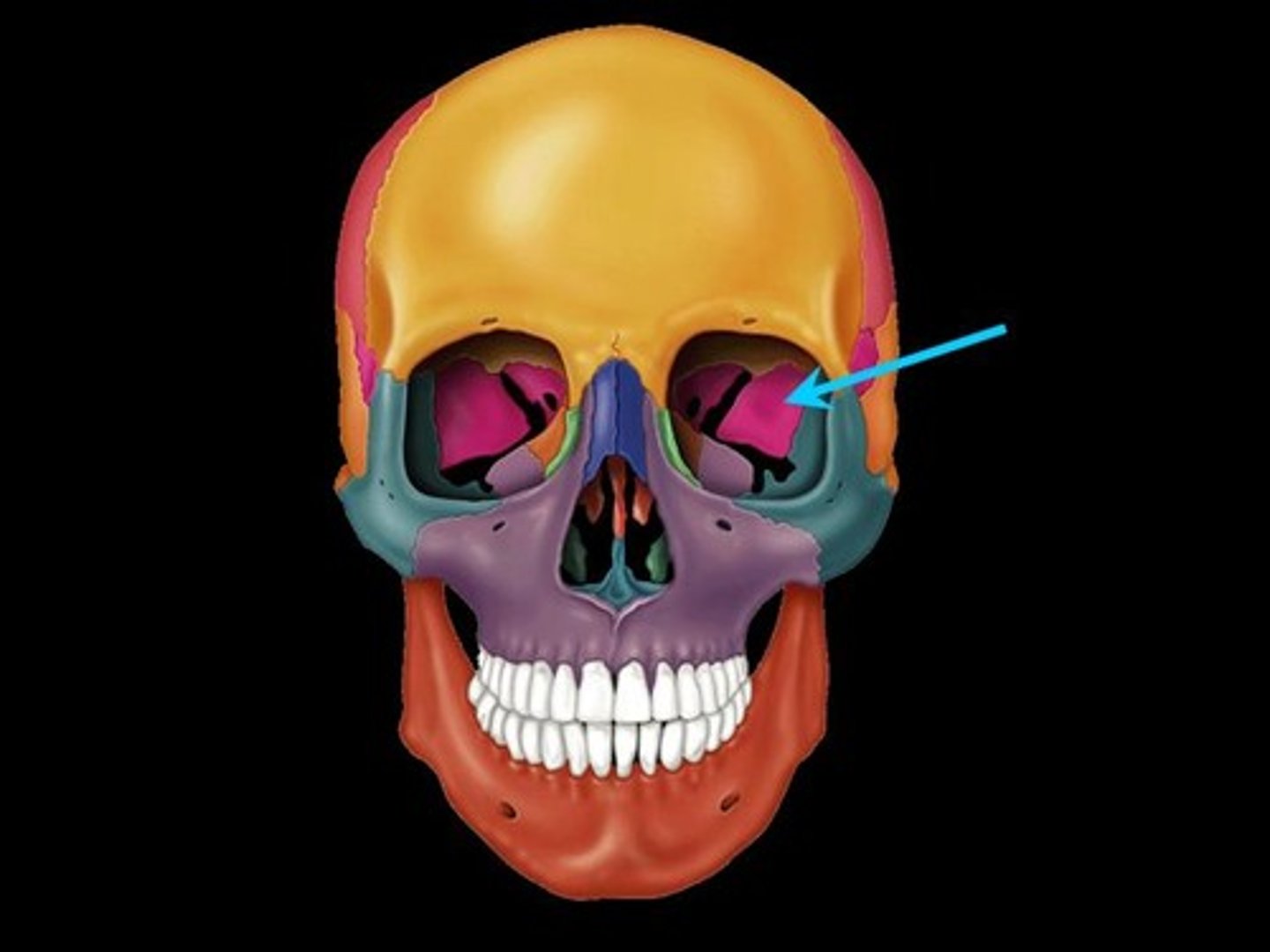
Lesser Wings
Much smaller than the greater, are thin, wing-shaped posterior projections of the endocranial surface
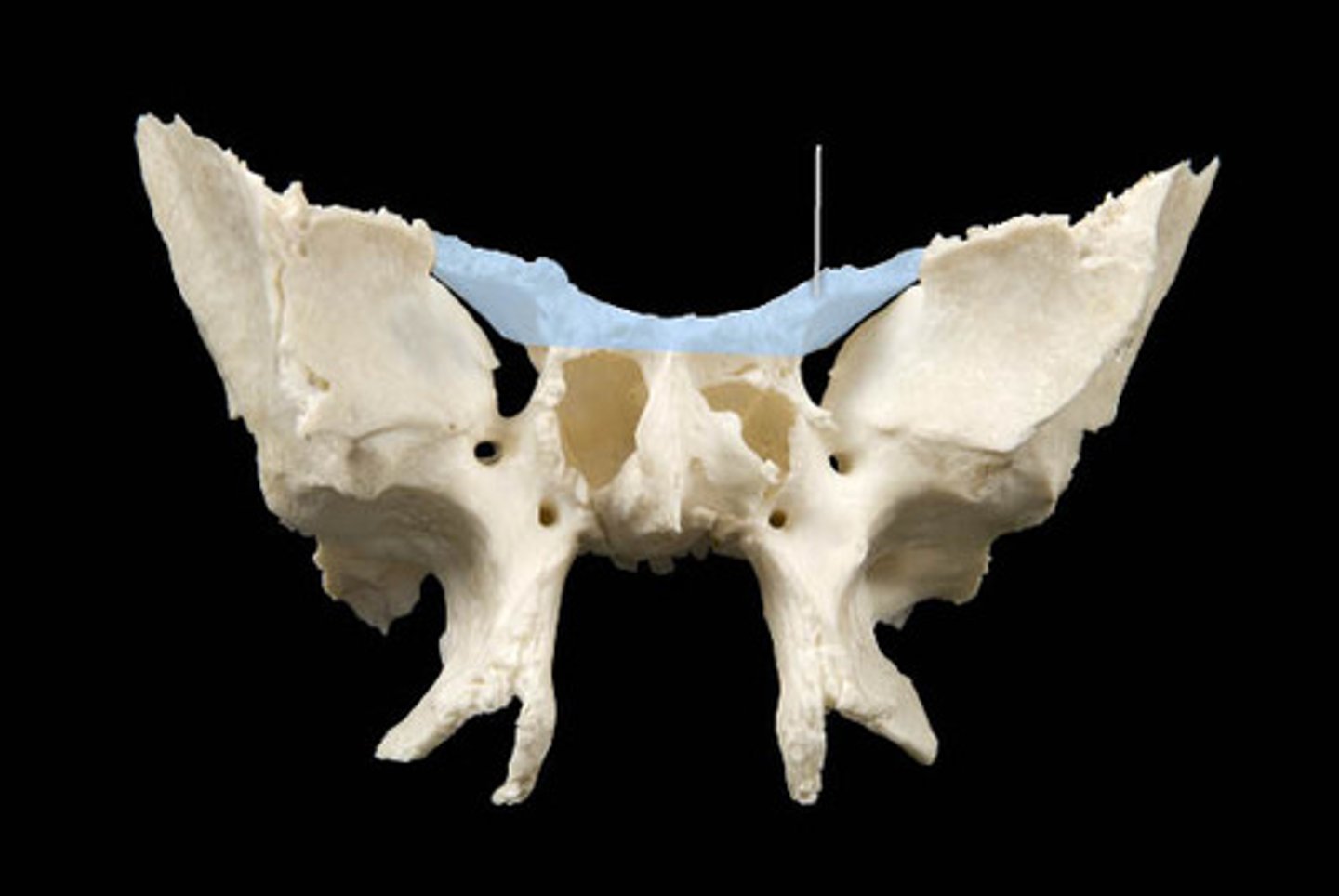
Anterior Clinoid Processes
The posteriormost projections of the lesser wings
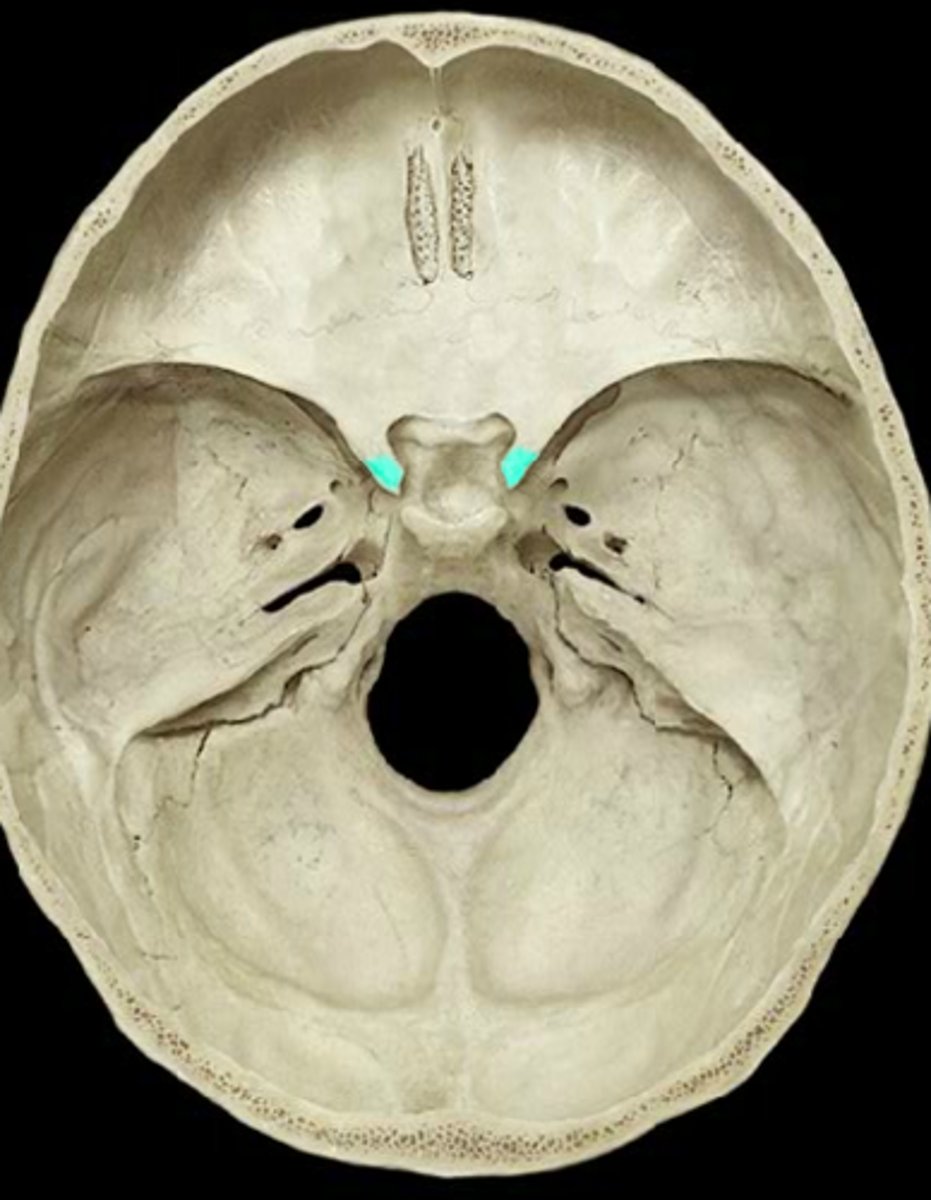
Pterygoid Processes
Visible only from below or to the side of the cranium
Divided into two thin plates
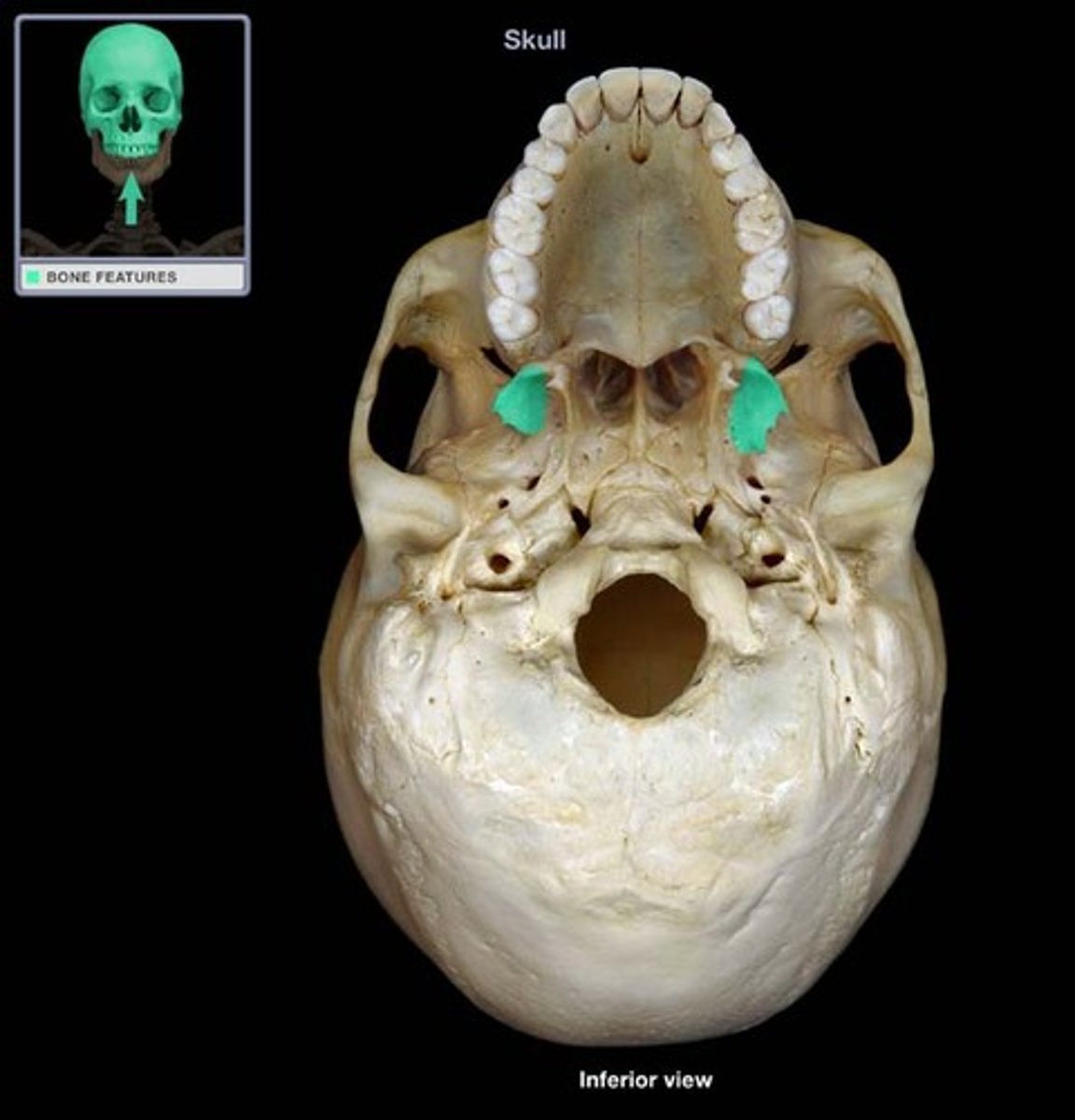
Lateral Pterygoid Plate
A thin vertical plate of bone seen in lateral view of the cranium
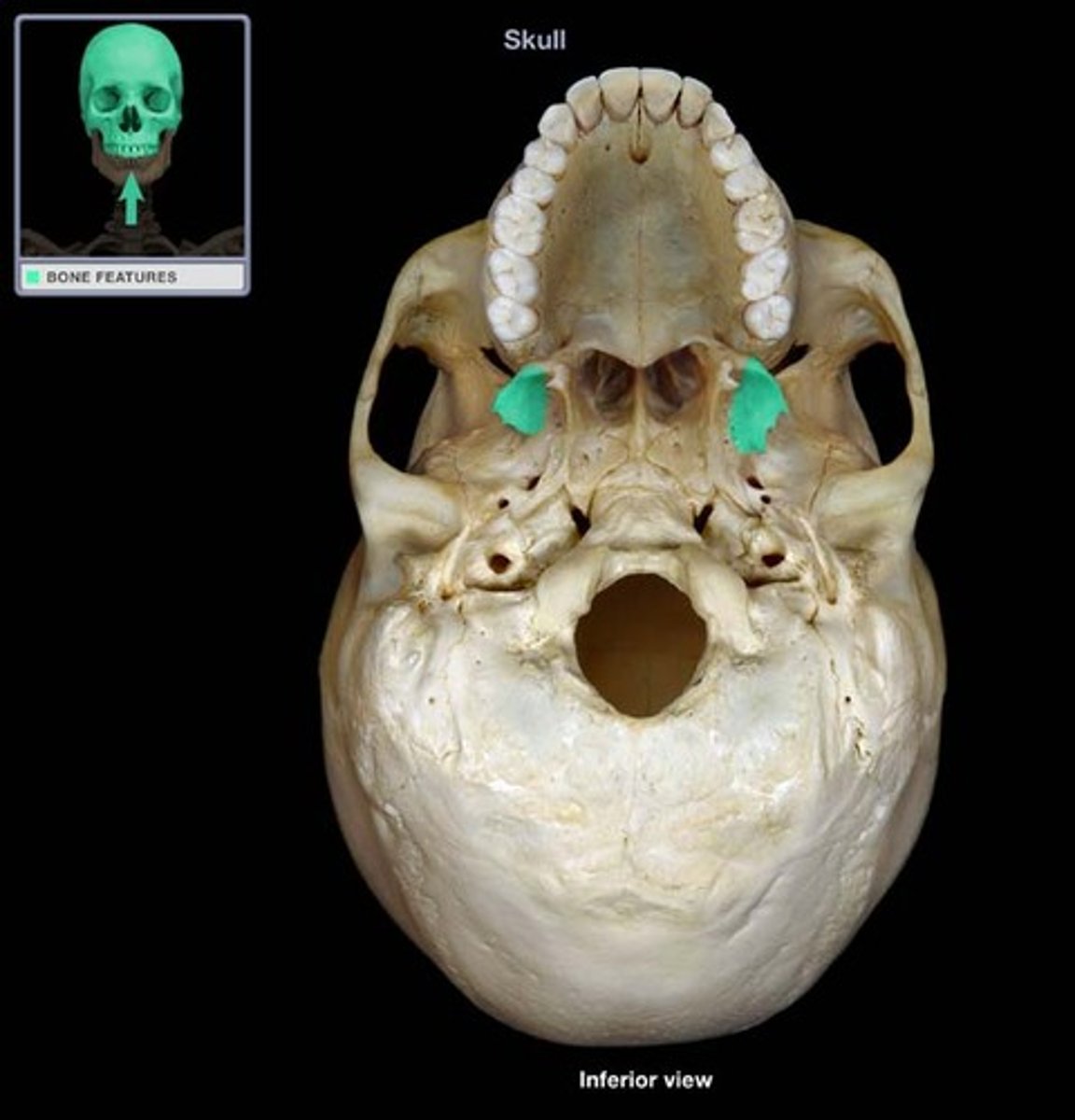
Medial Pterygoid Plate
A thin vertical plate of bone that roughly parallels the lateral plate in orientation but is set closer to the midline
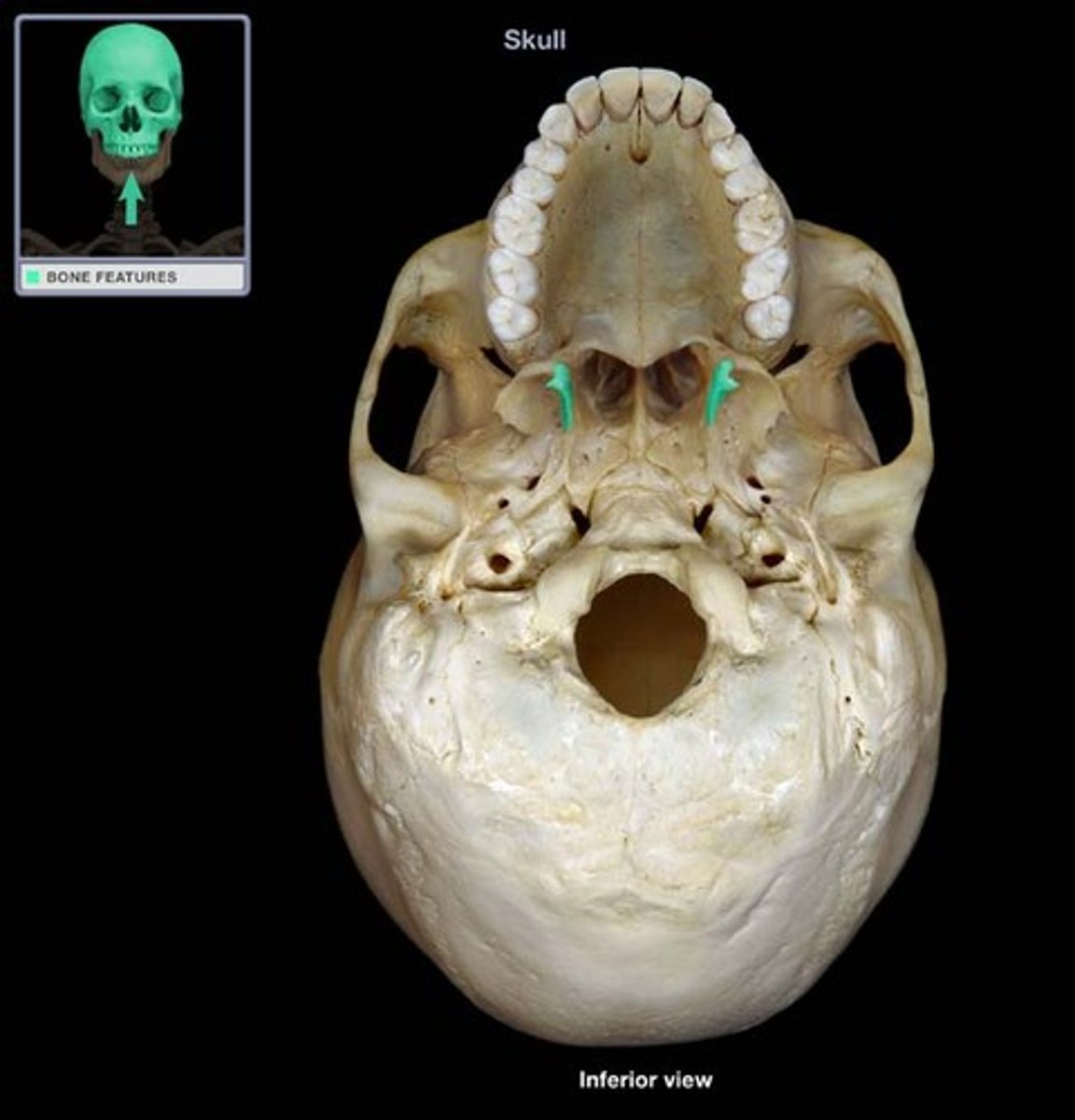
Pterygoid Fossae
Rough-floored hollows between the medial and lateral pterygoid plates
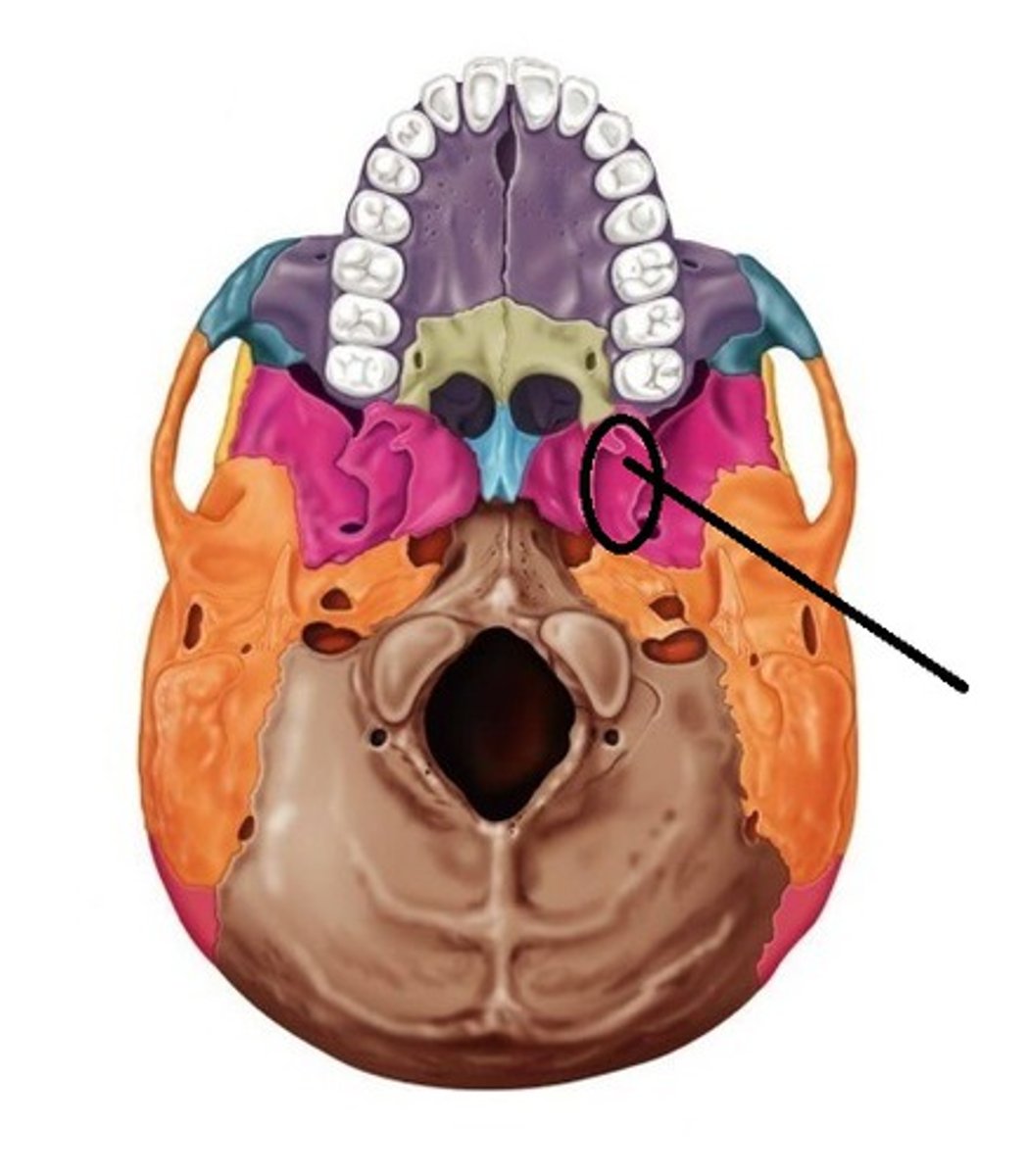
Pterygoid Hamulus
The hook-like process forming the posterolateral basal corner of each medial pterygoid plate
Pterygoid Canals
Perforate the bone above the pterygoid plates and run along the base of these plates
sagittal suture
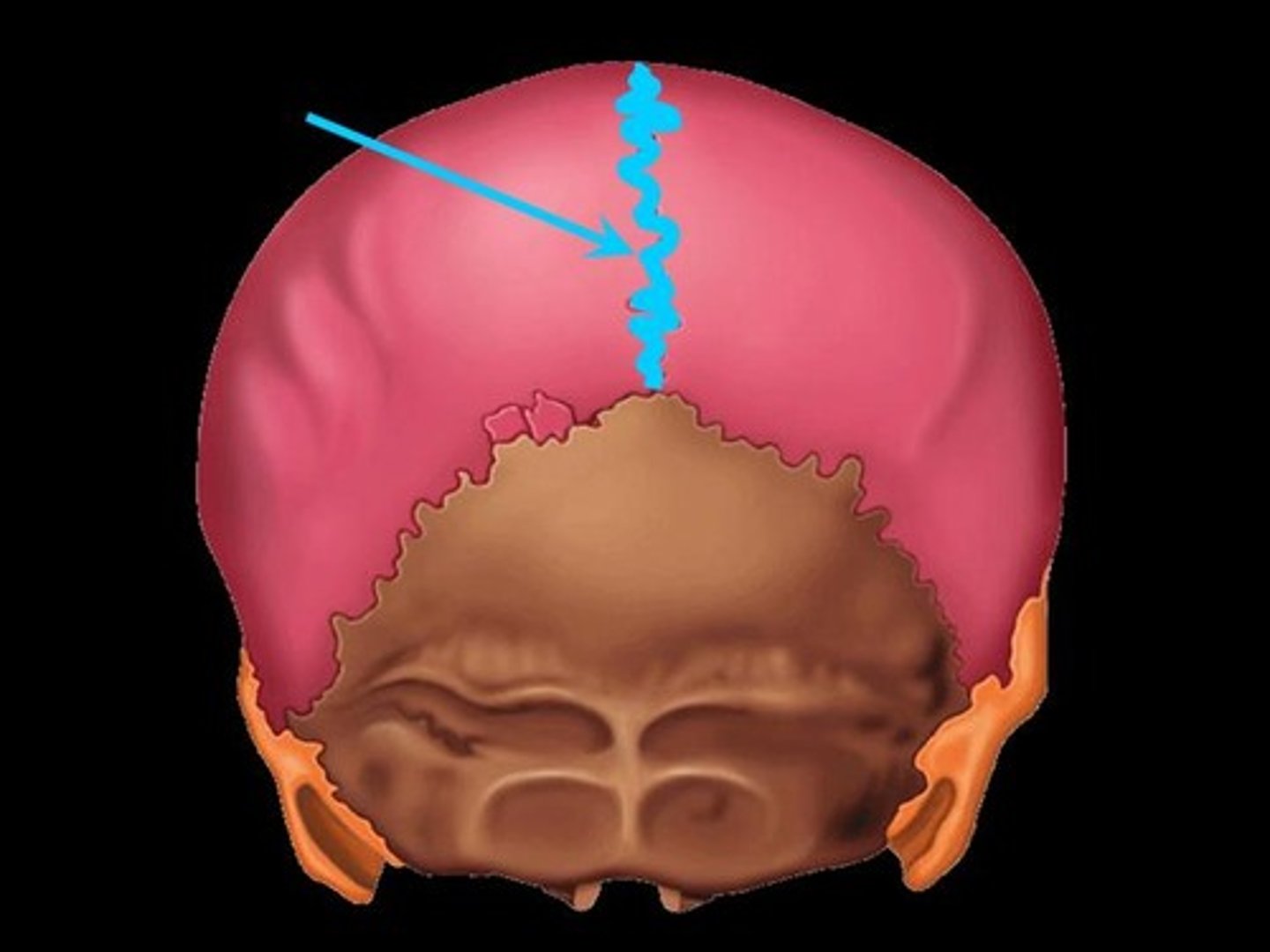
coronal suture
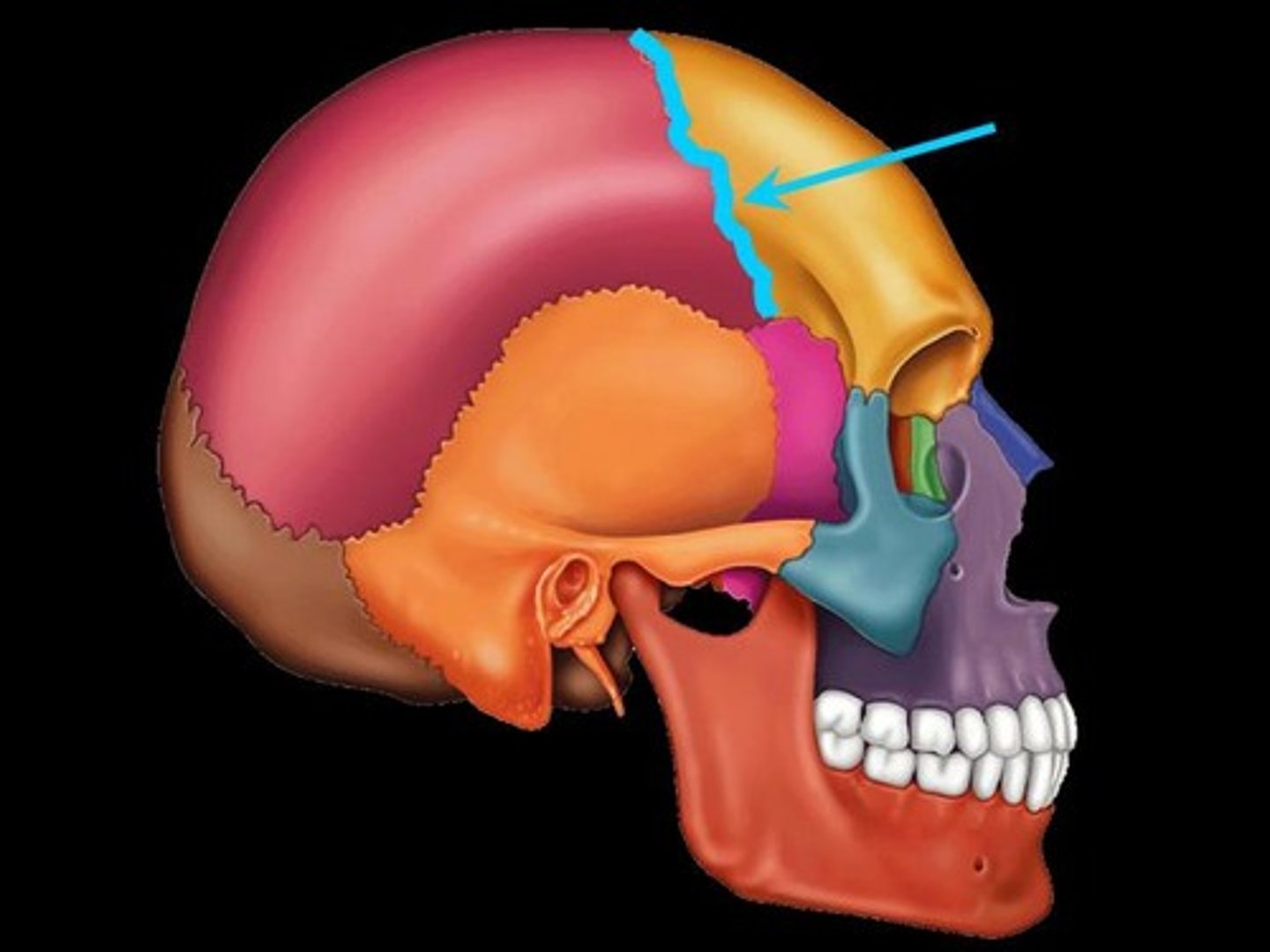
squamosal suture
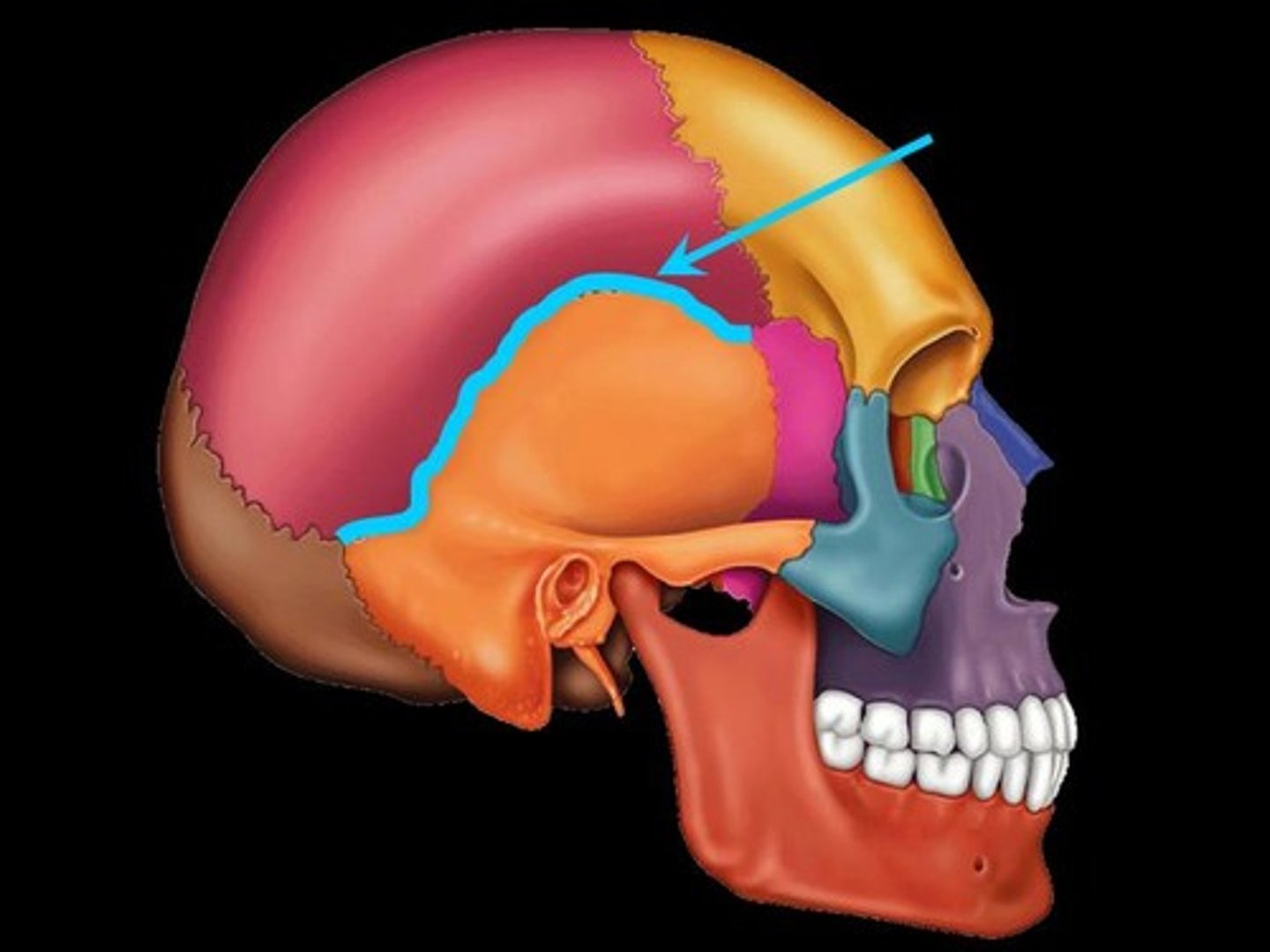
lambdoidal suture
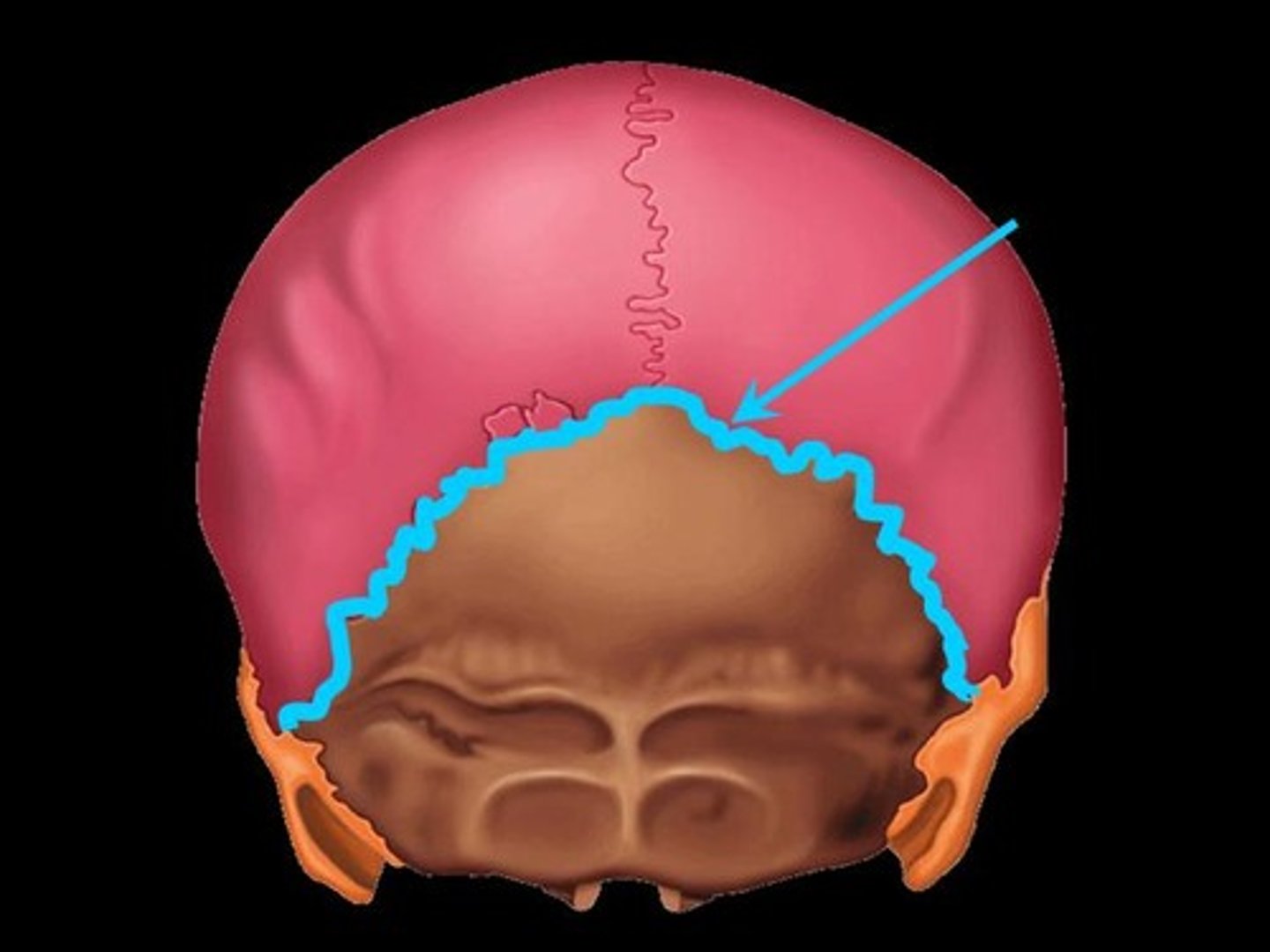
frontal bone
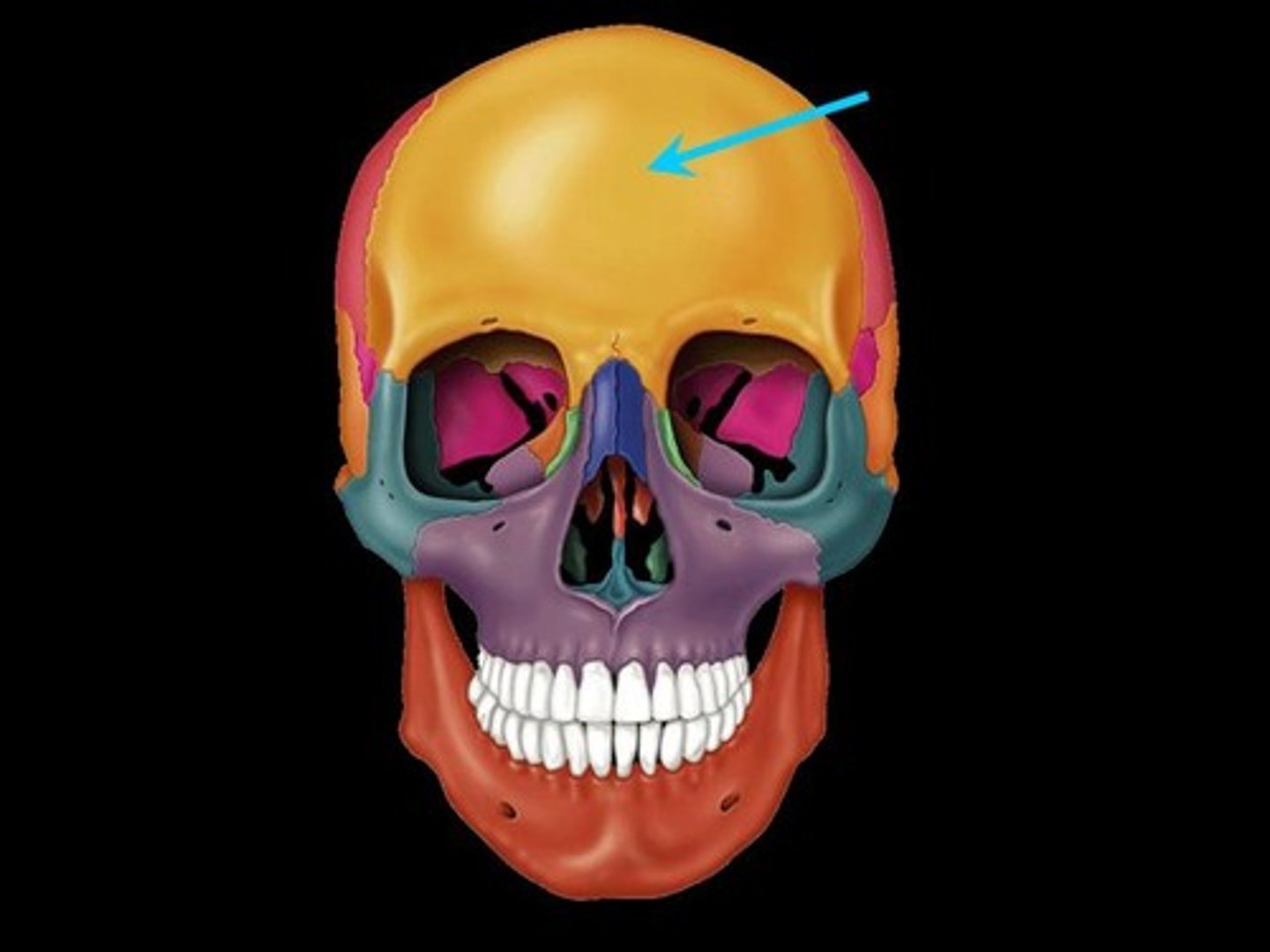
temporal bone
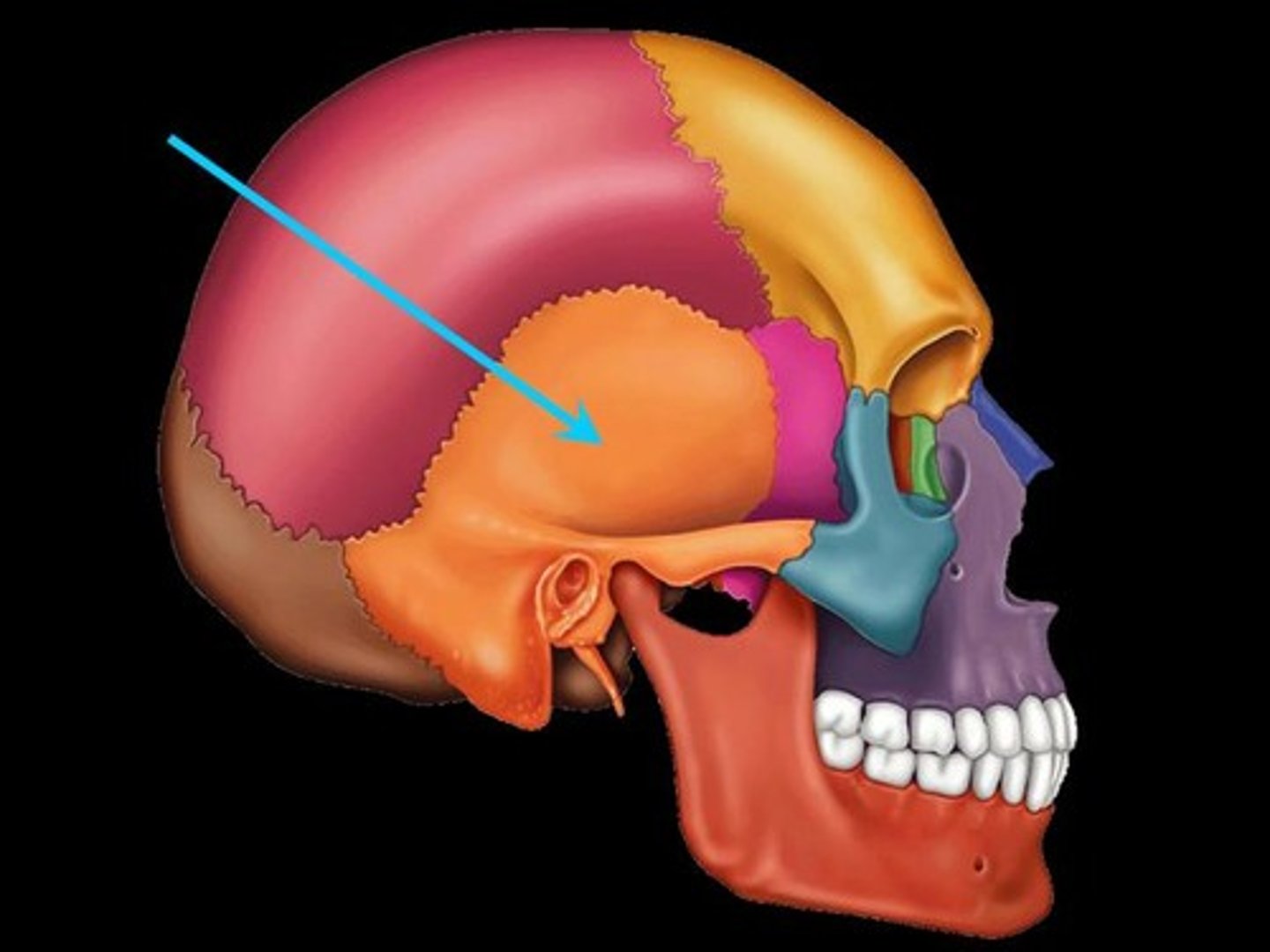
occipital bone
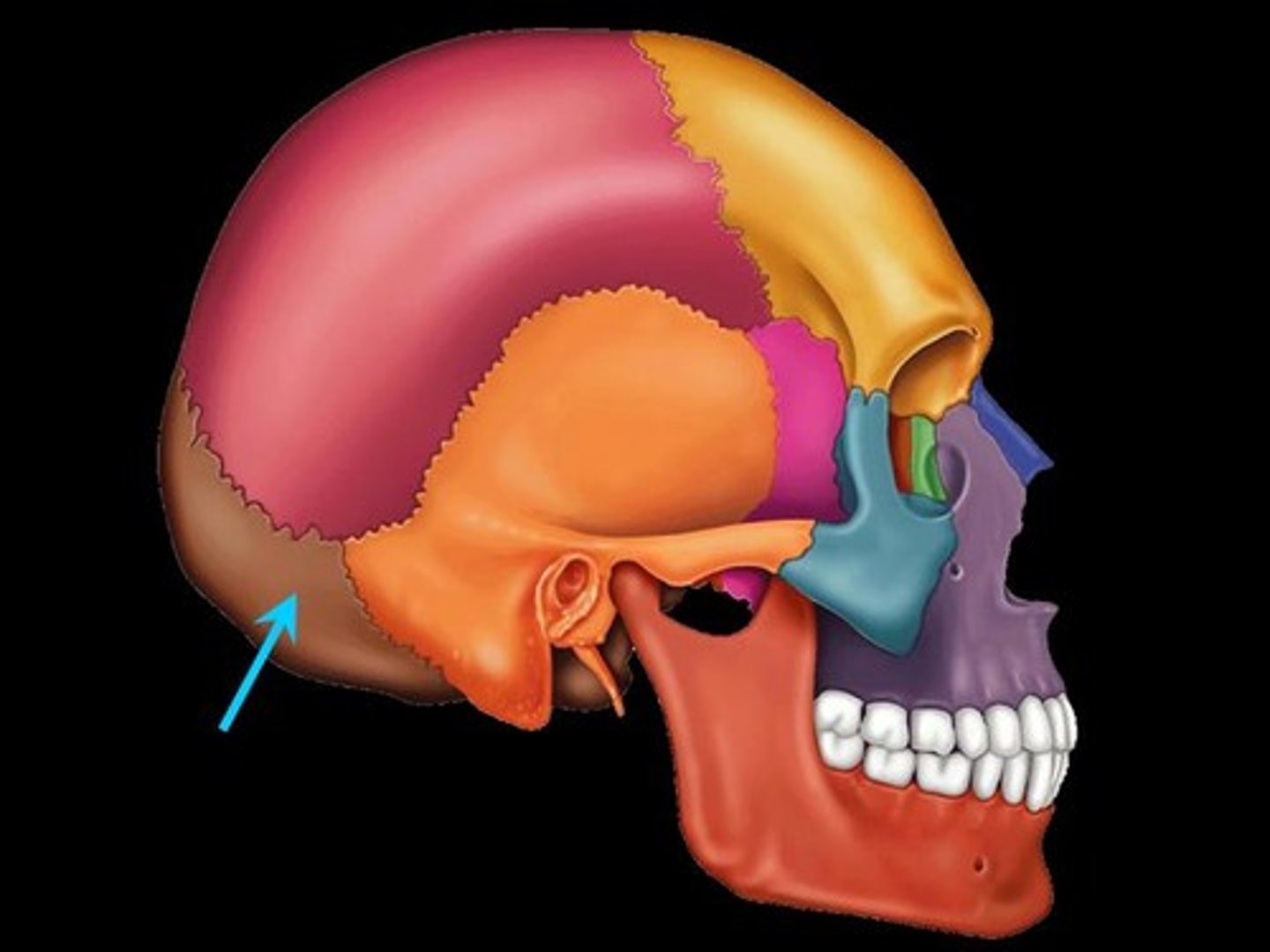
parietal bone
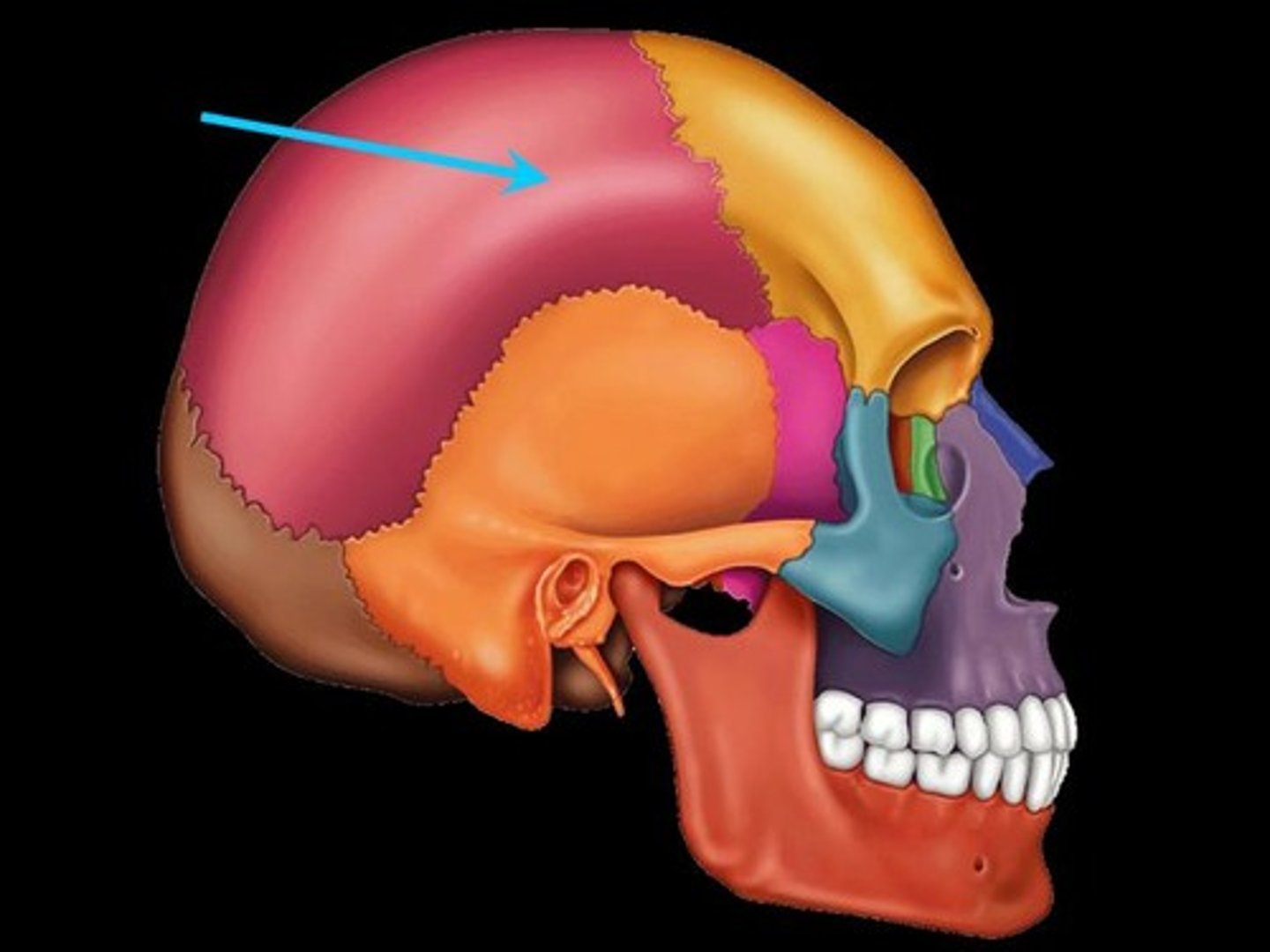
mandible
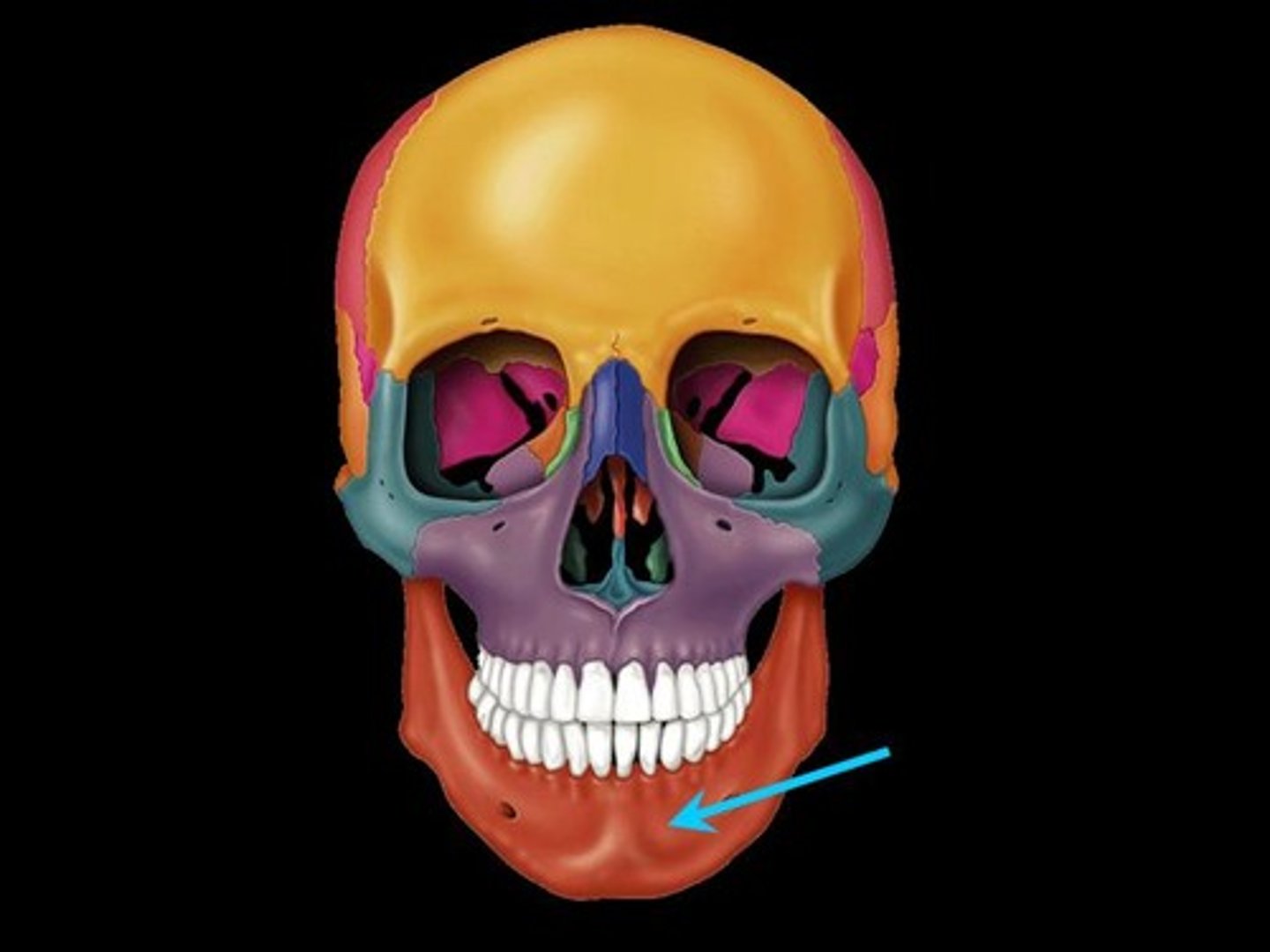
maxilla
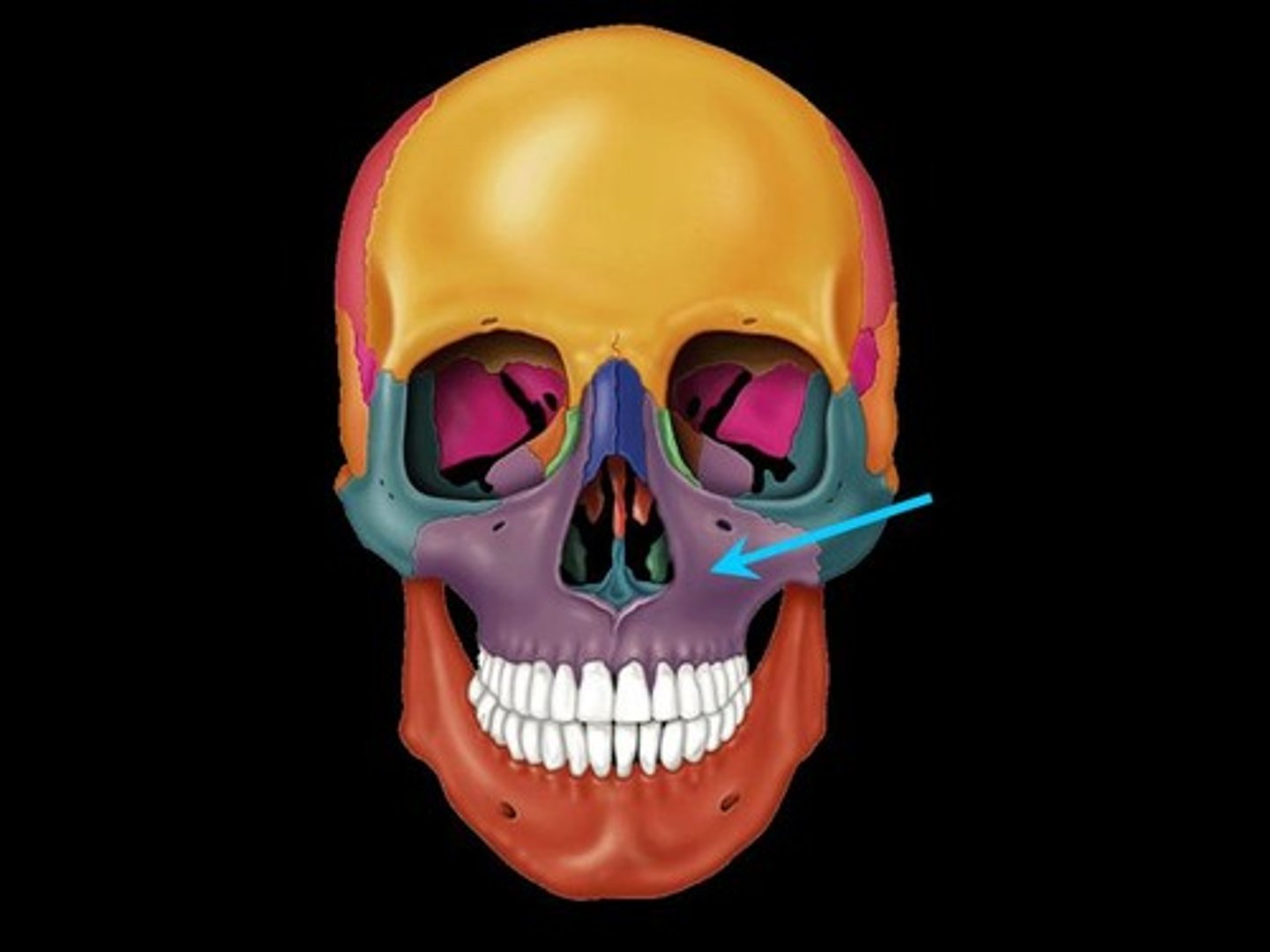
sphenoid
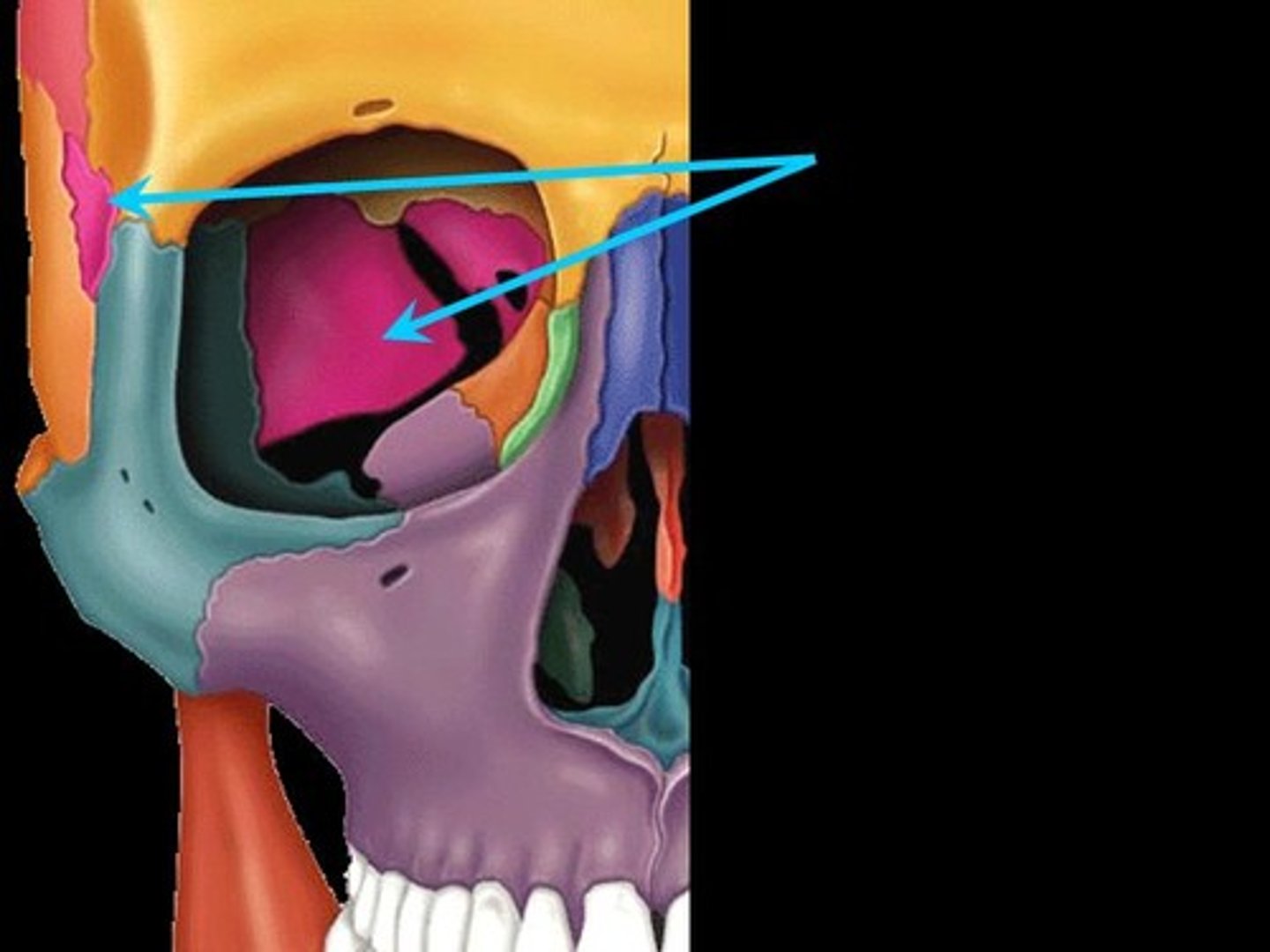
sphenoid
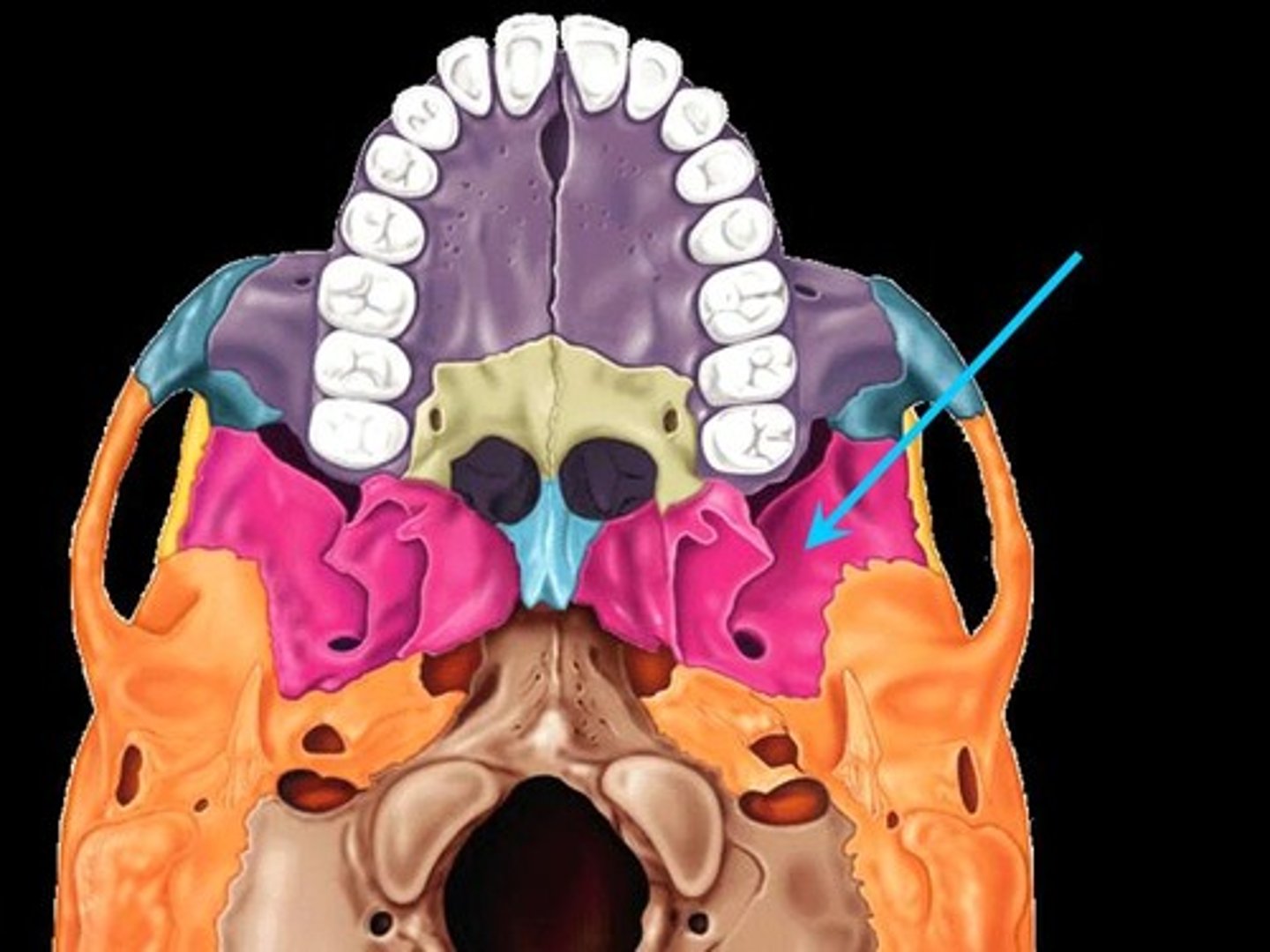
ethmoid
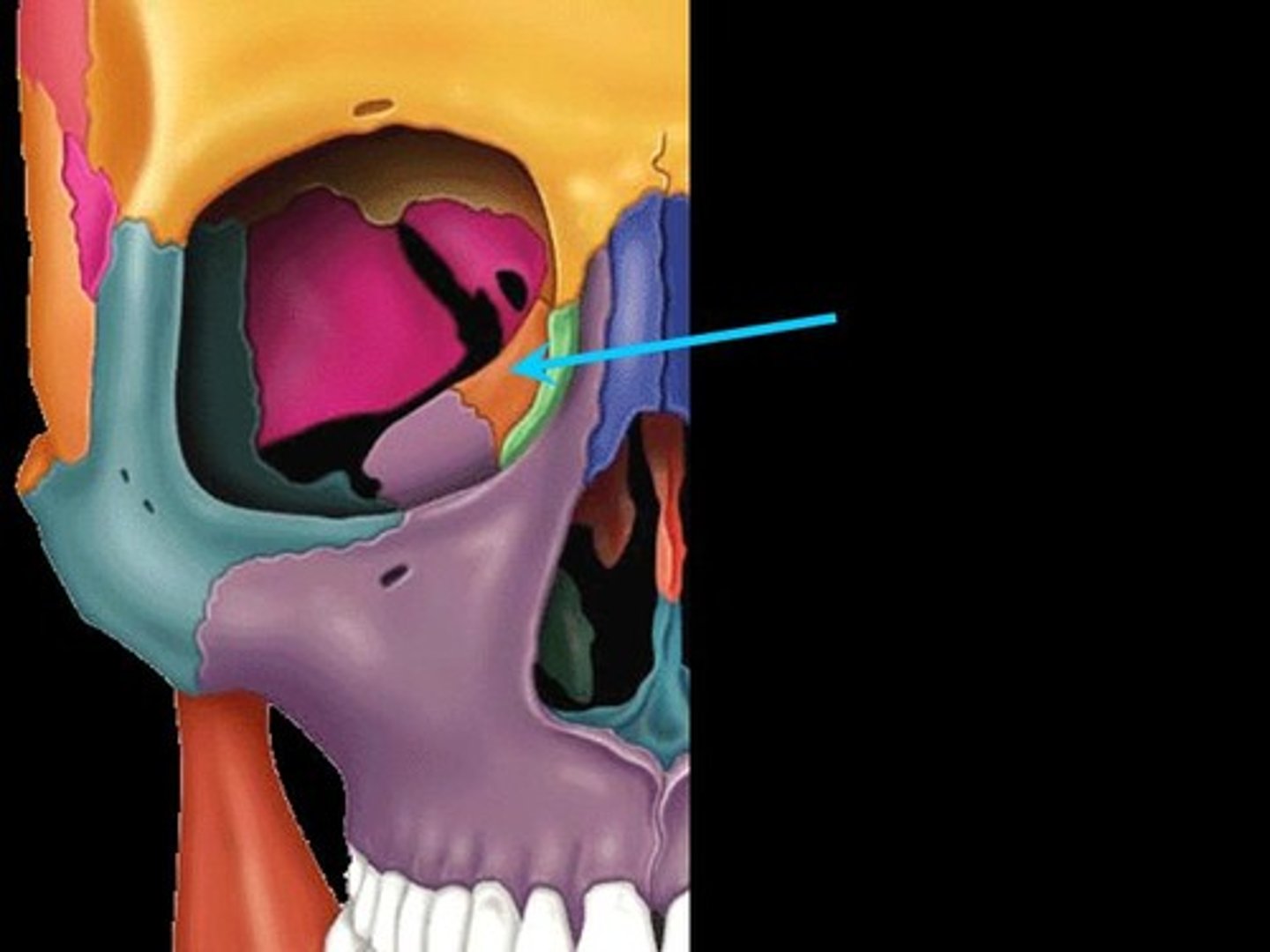
vomer
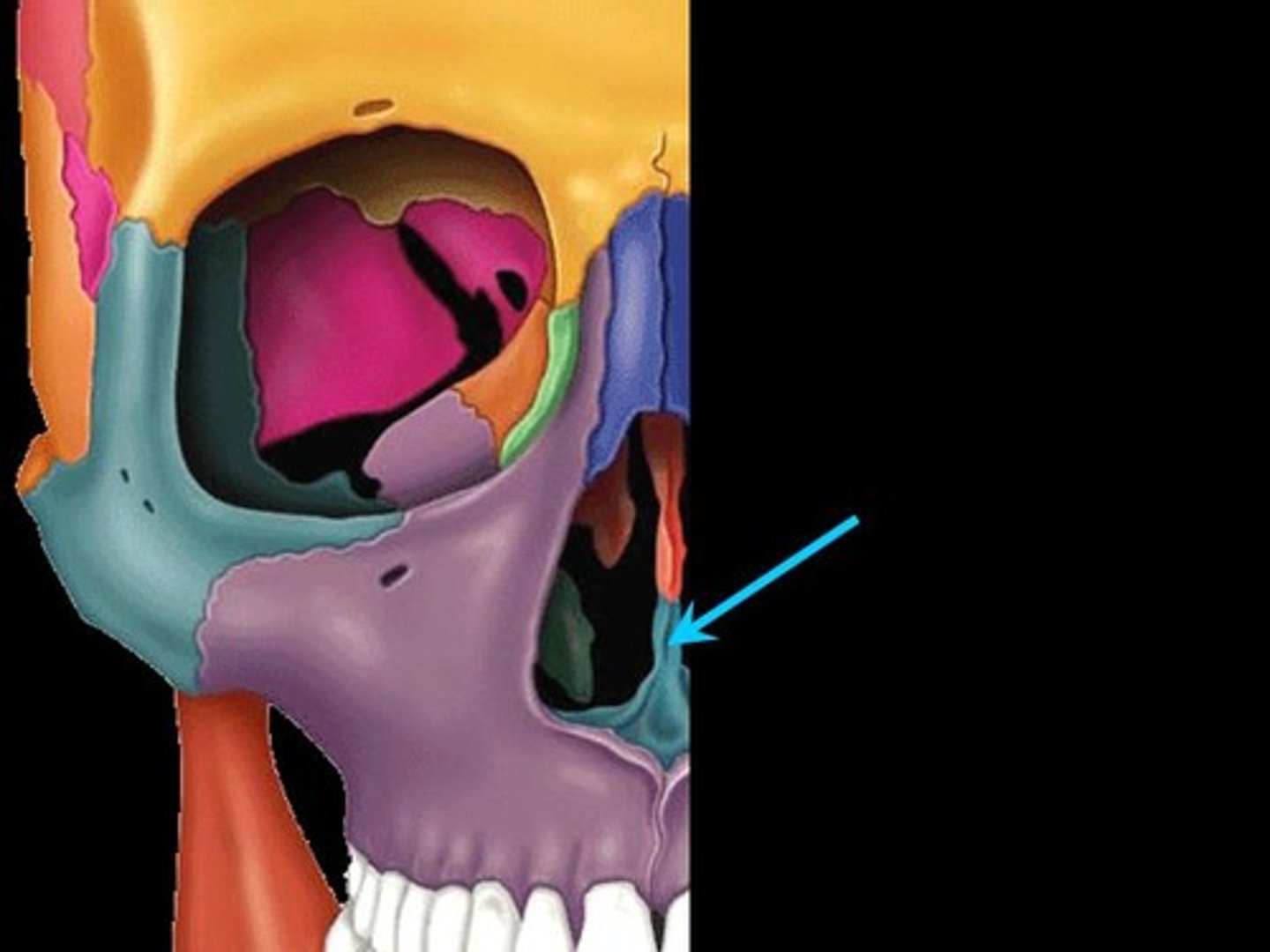
vomer
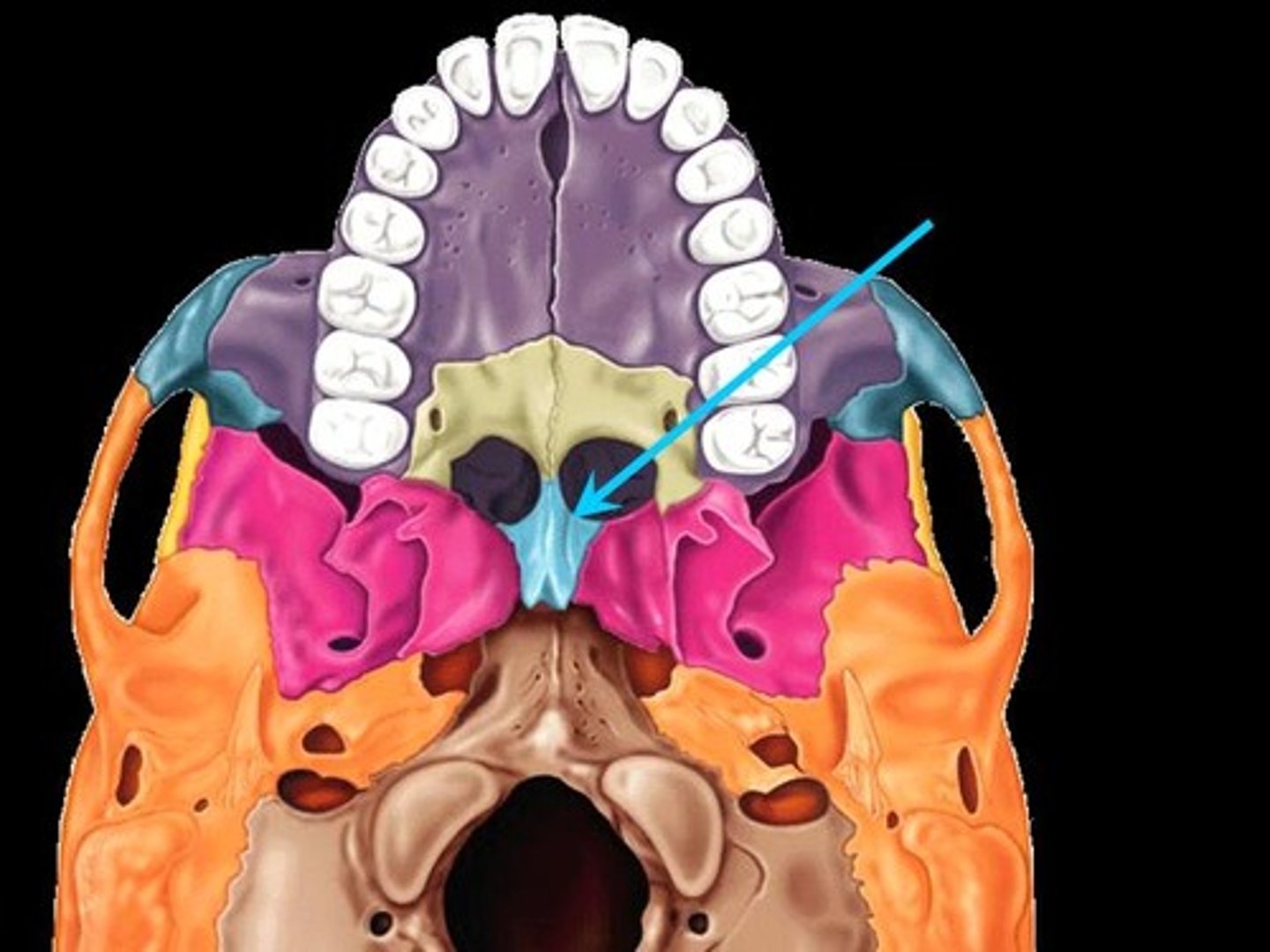
nasal
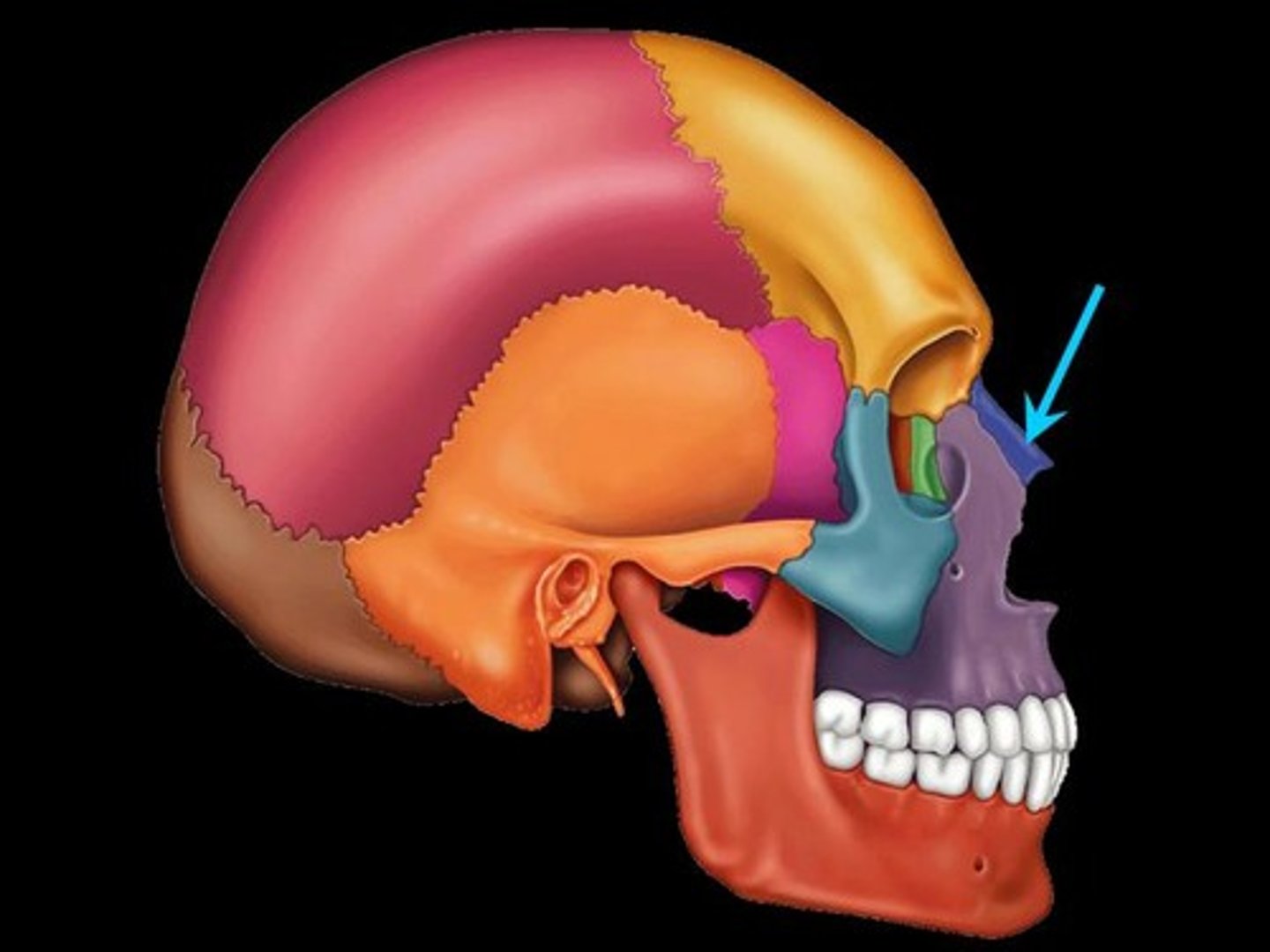
lacrimal
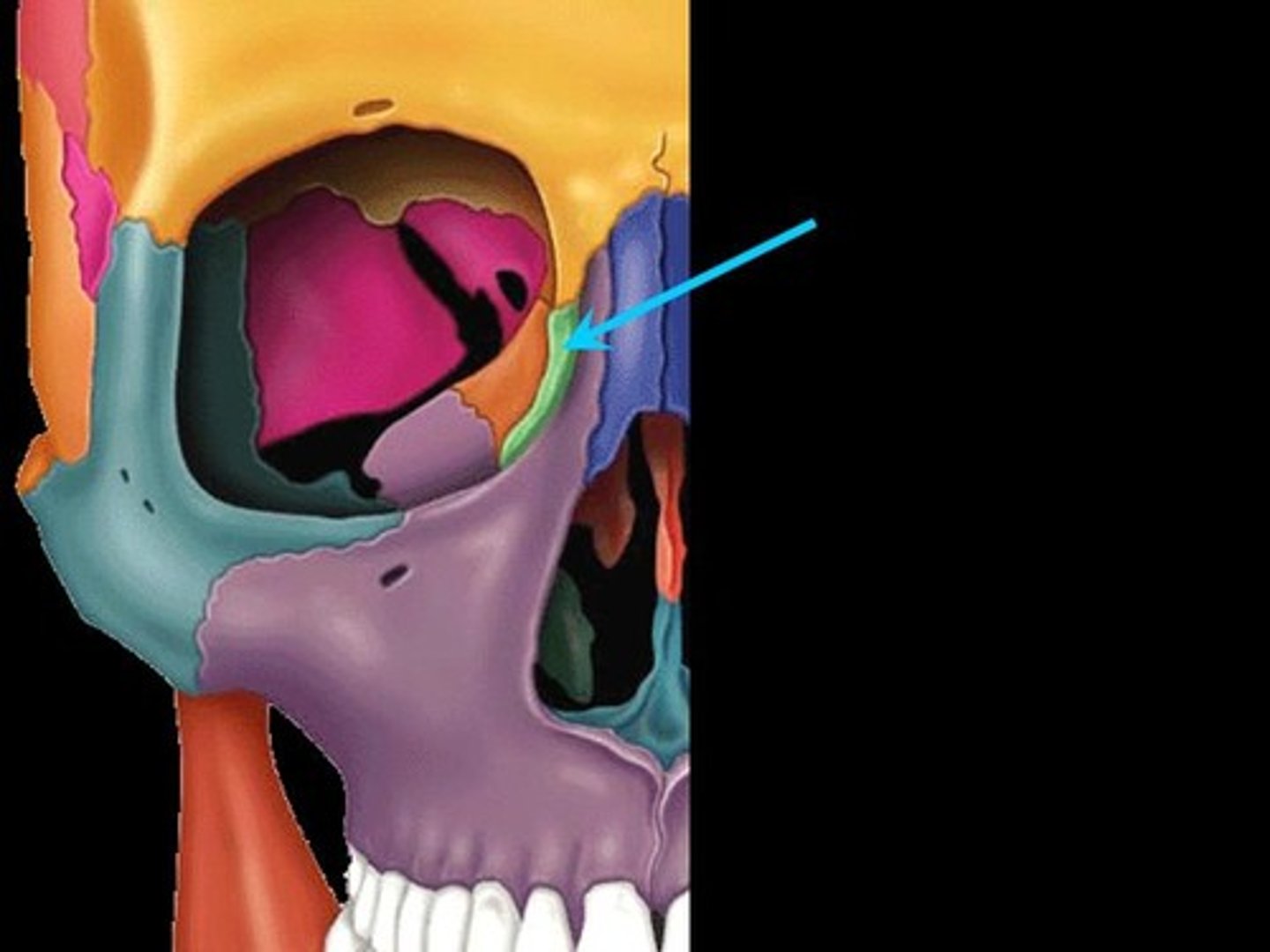
palatine
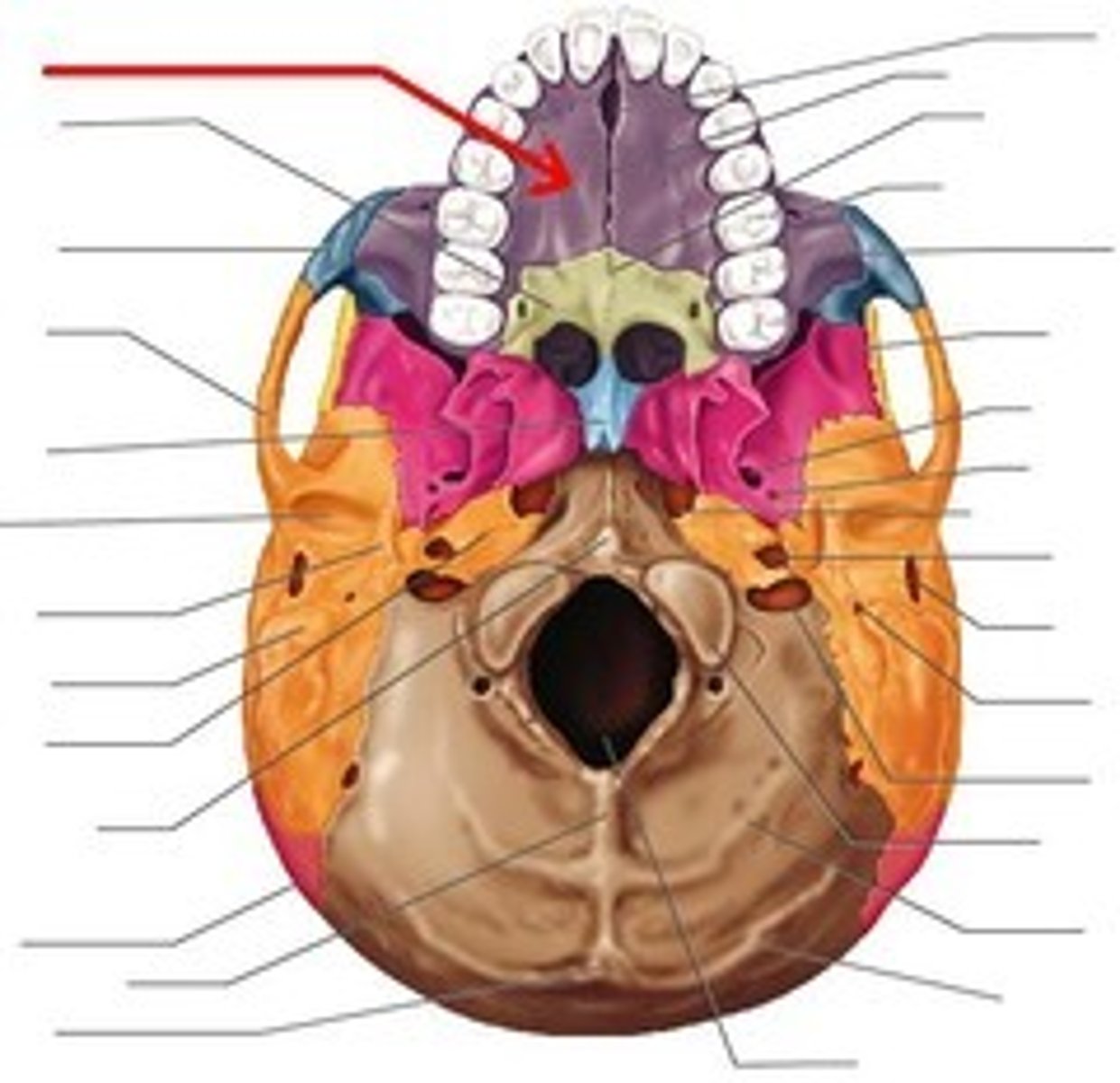
mastoid process
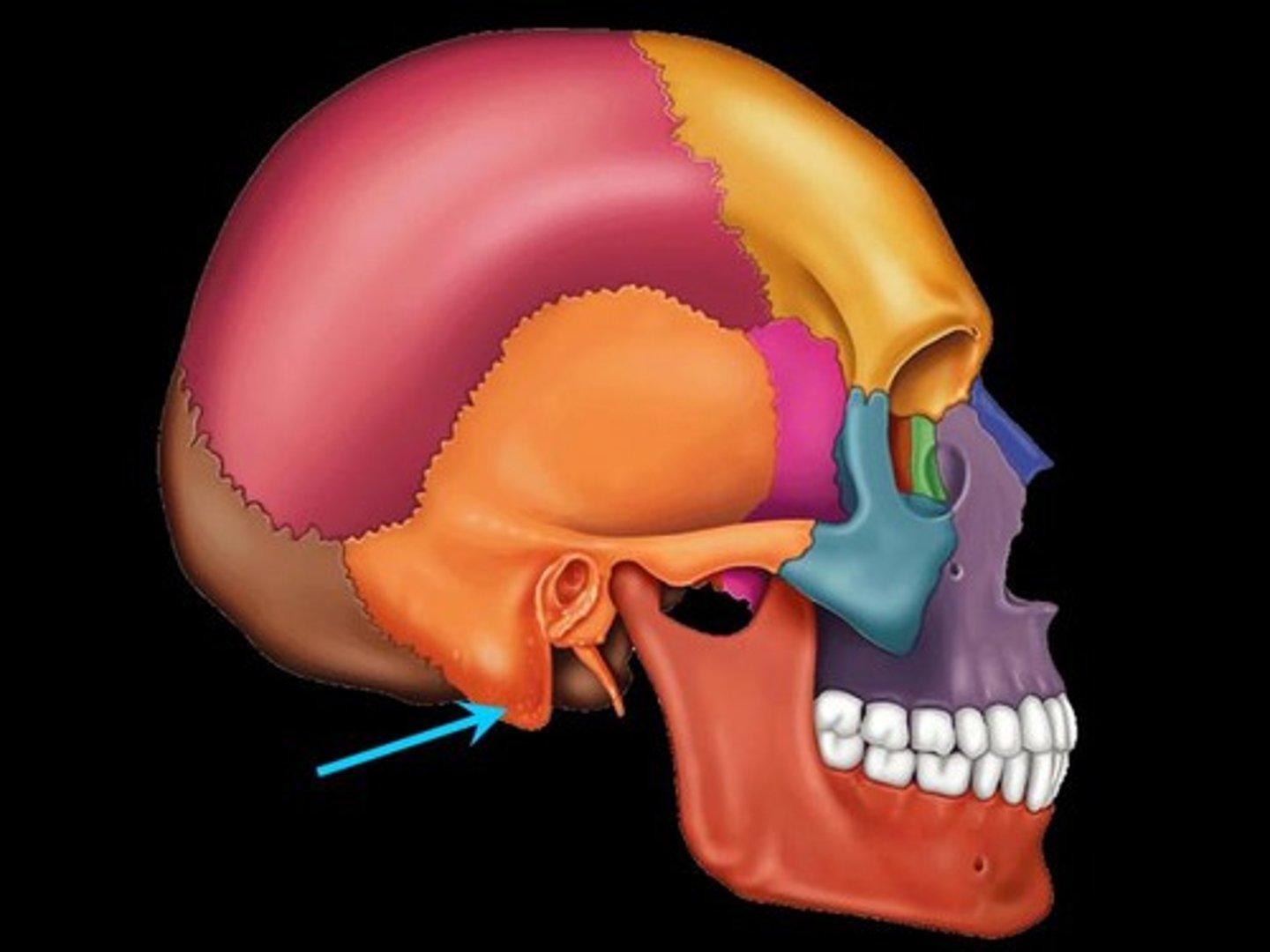
styloid process
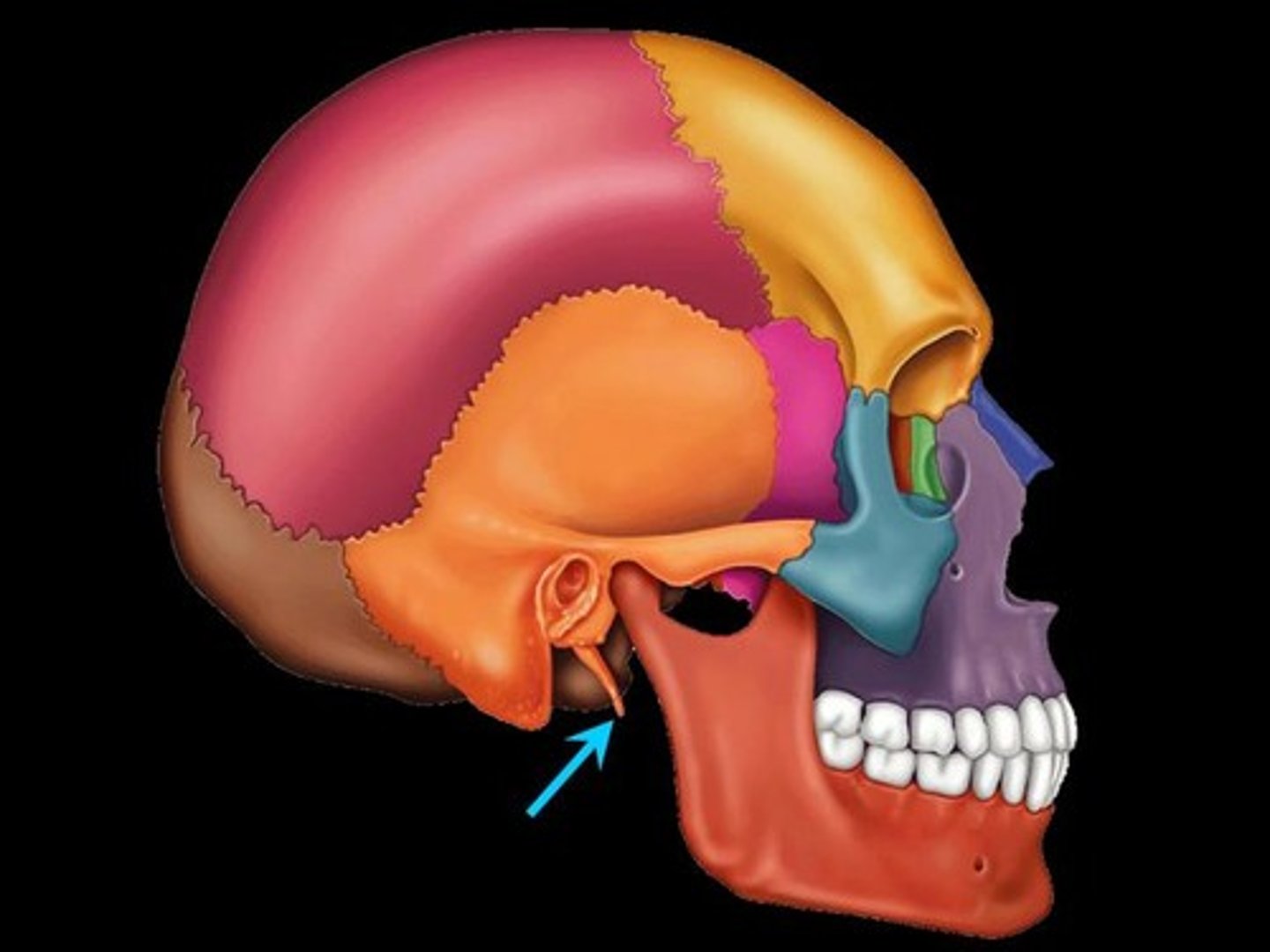
zygomatic arch
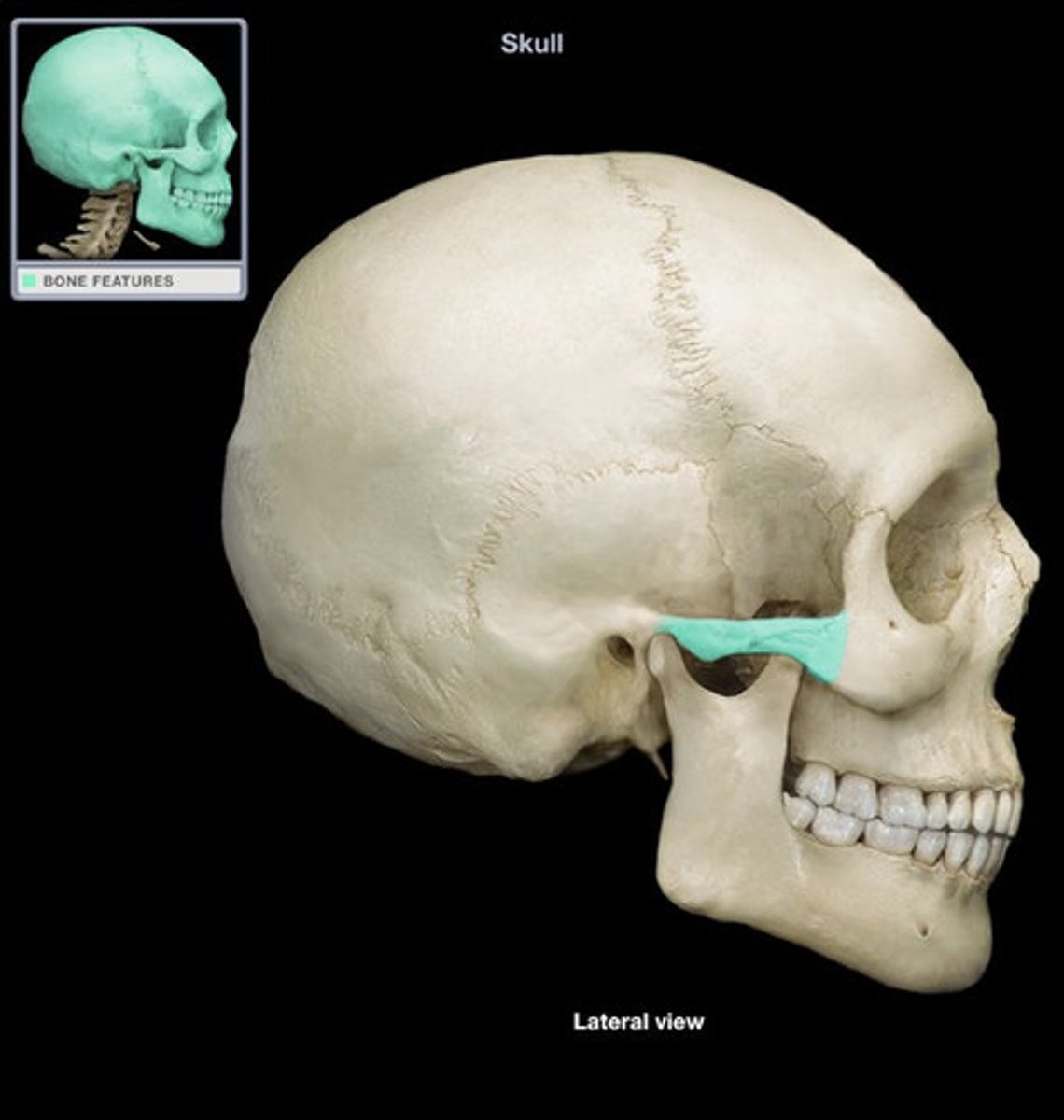
zygomatic arch
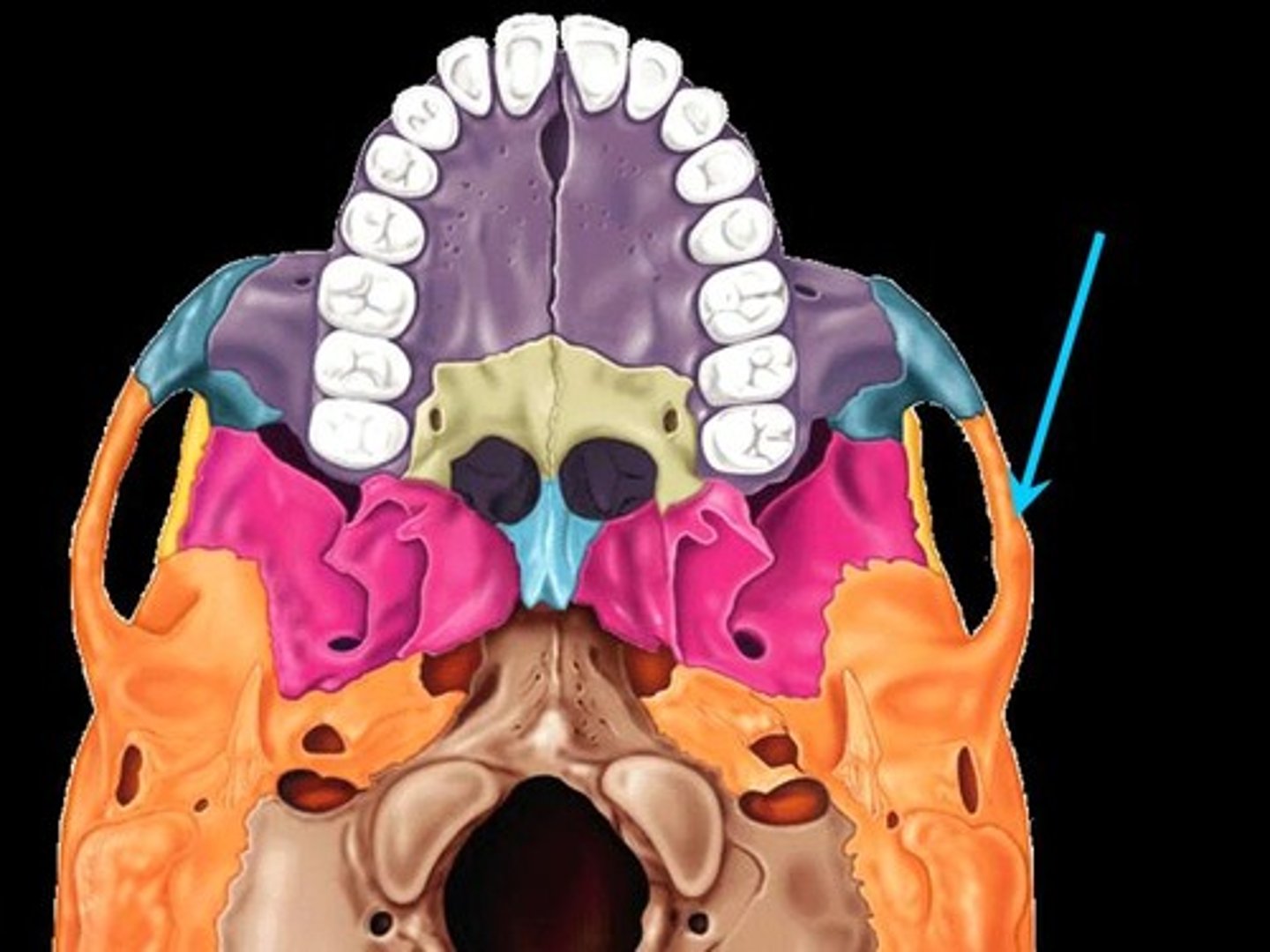
supraorbital foramen
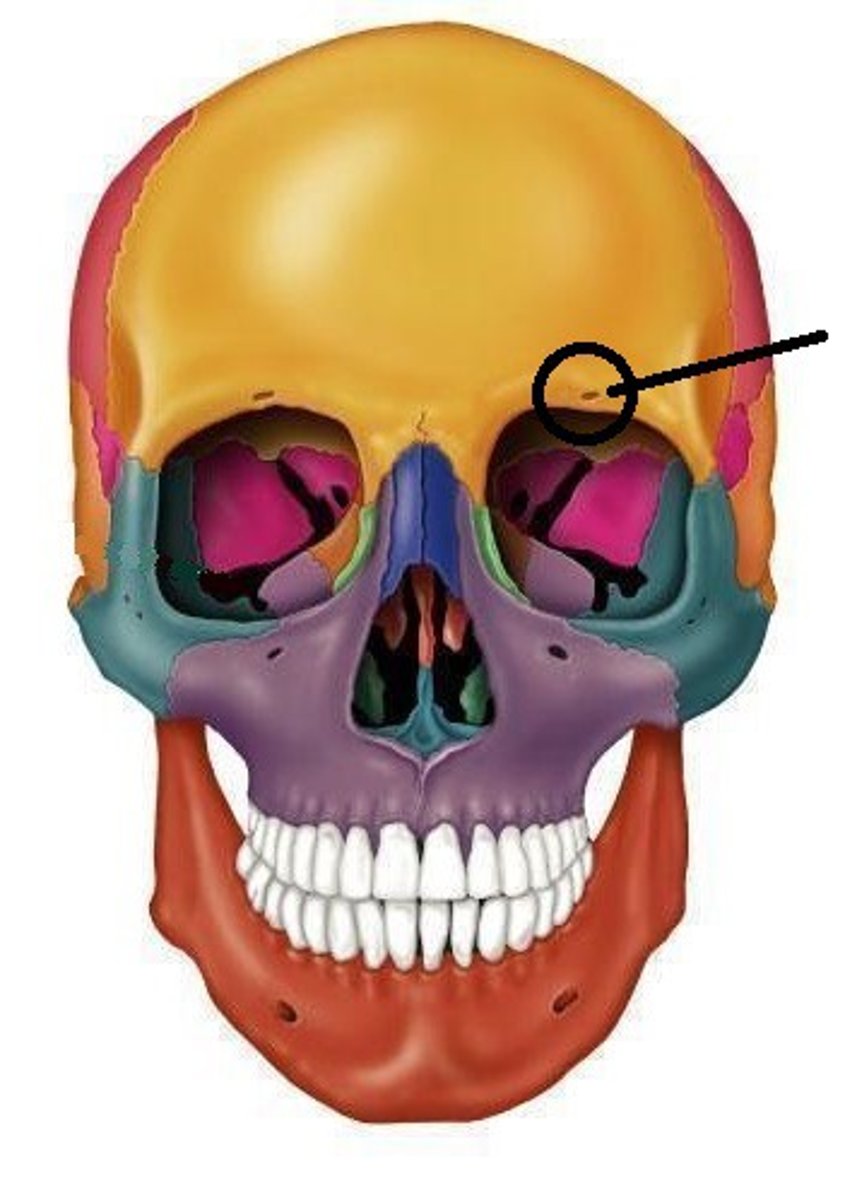
occipital protuberance
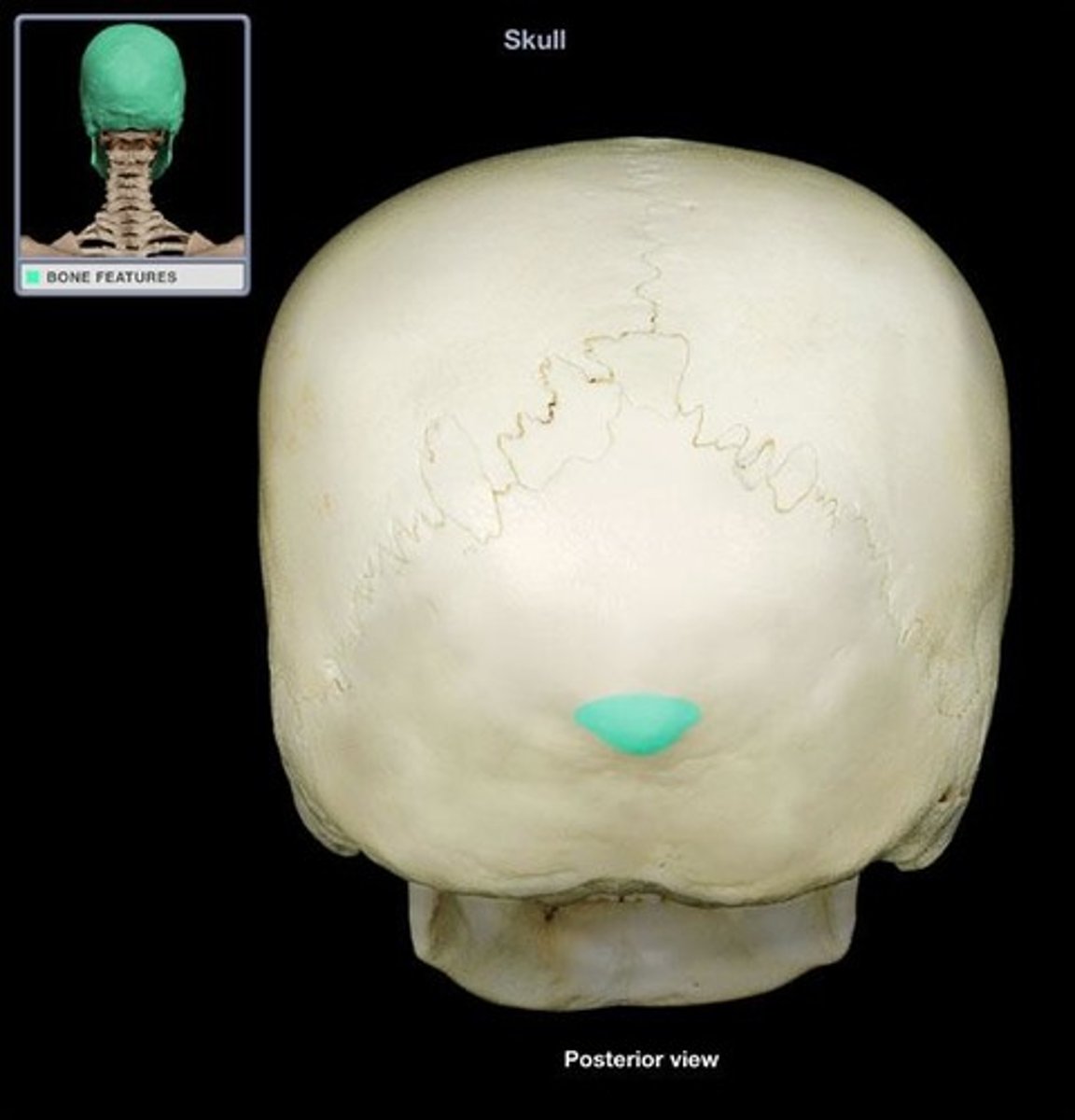
external acoustic meatus
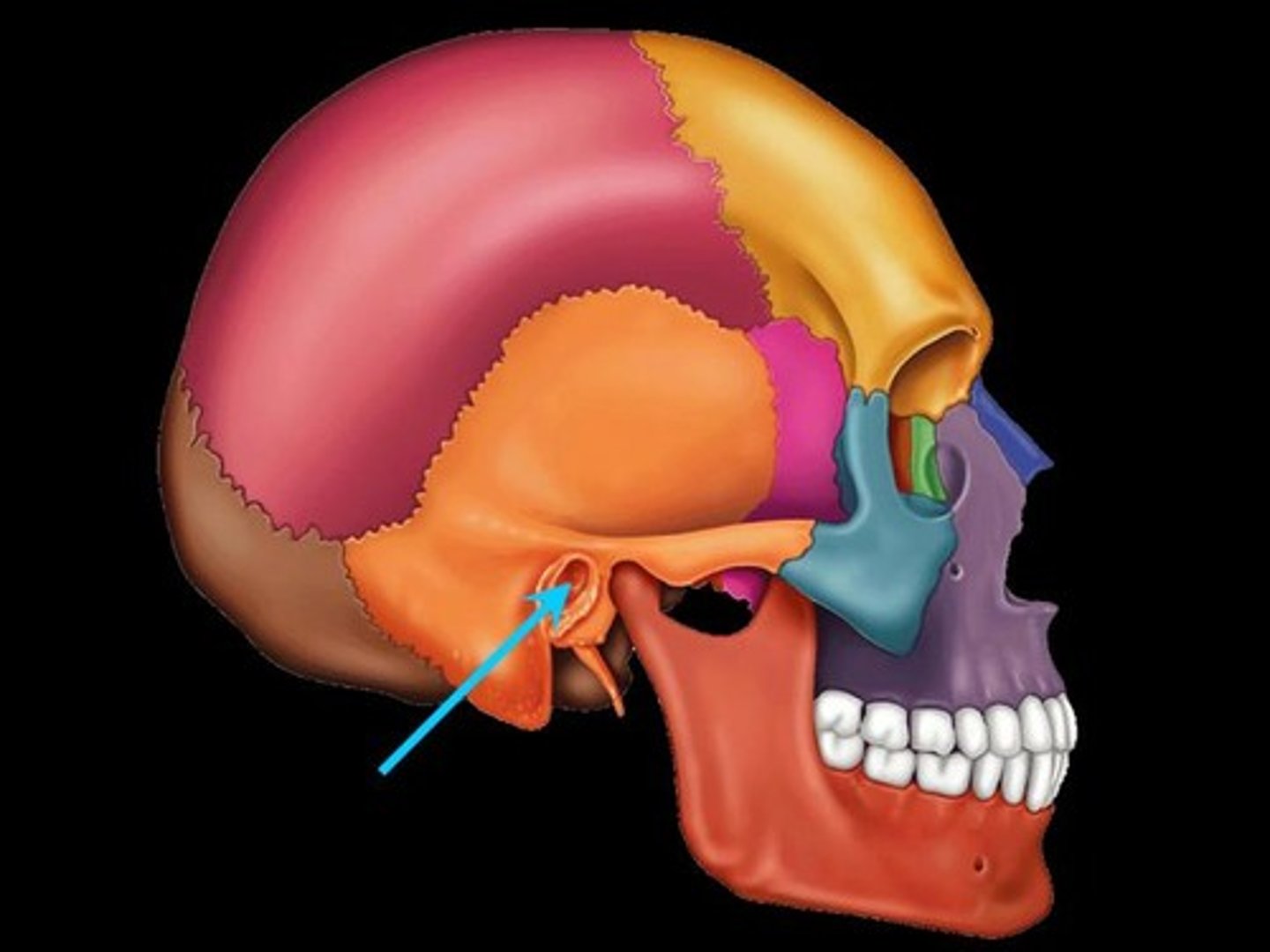
internal acoustic meatus
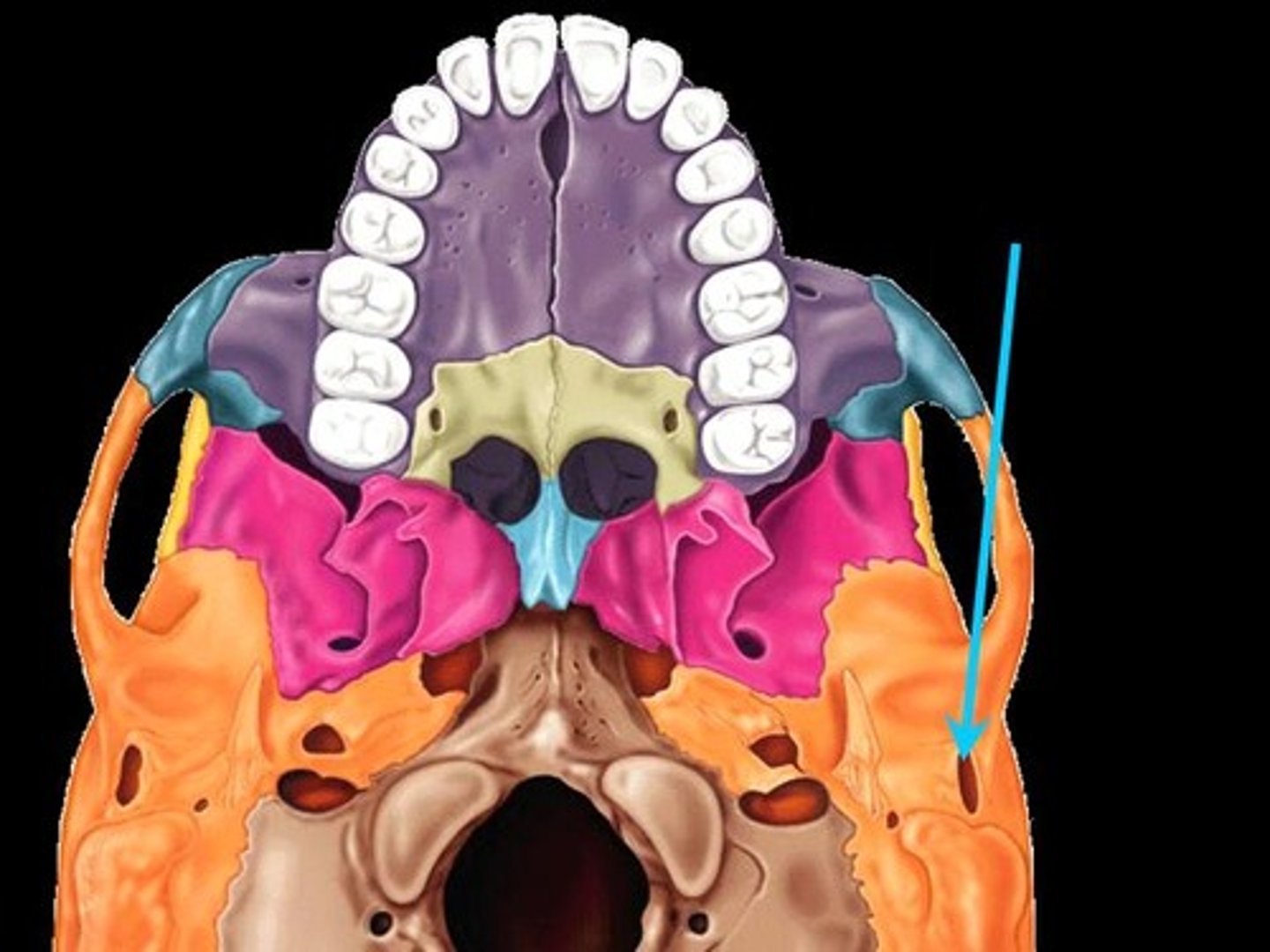
mandibular fossa
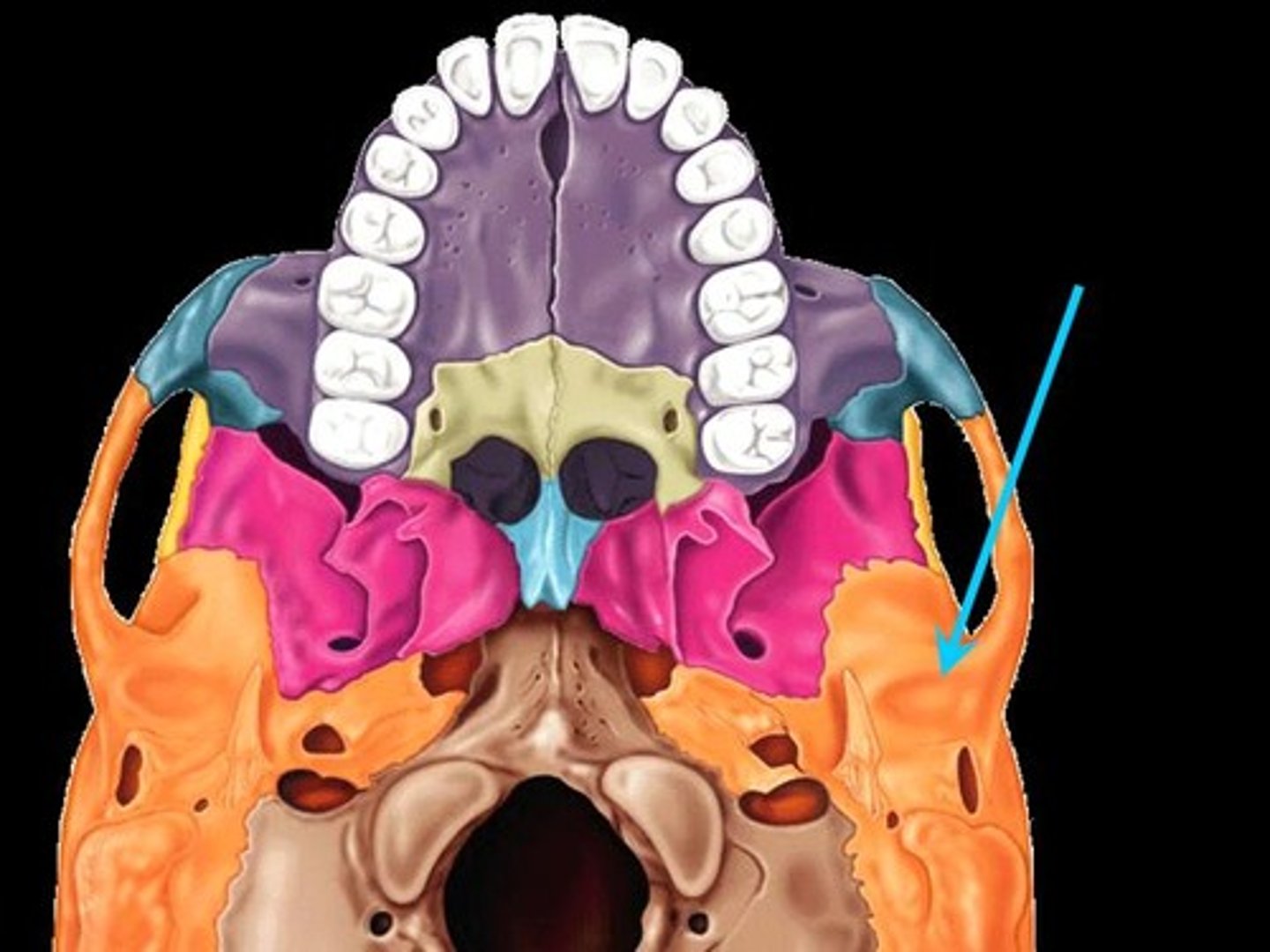
mandibular fossa
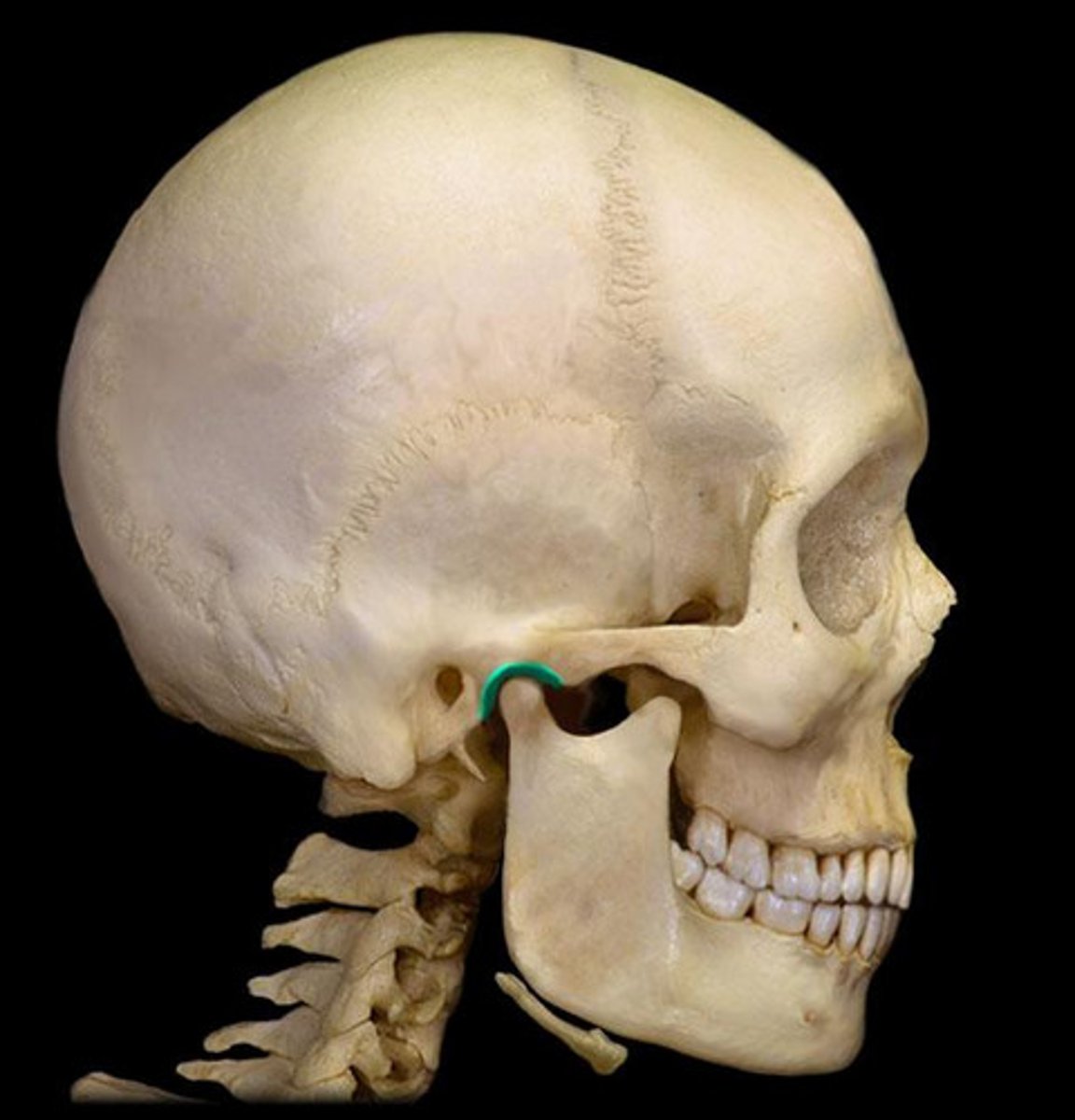
occipital condyles
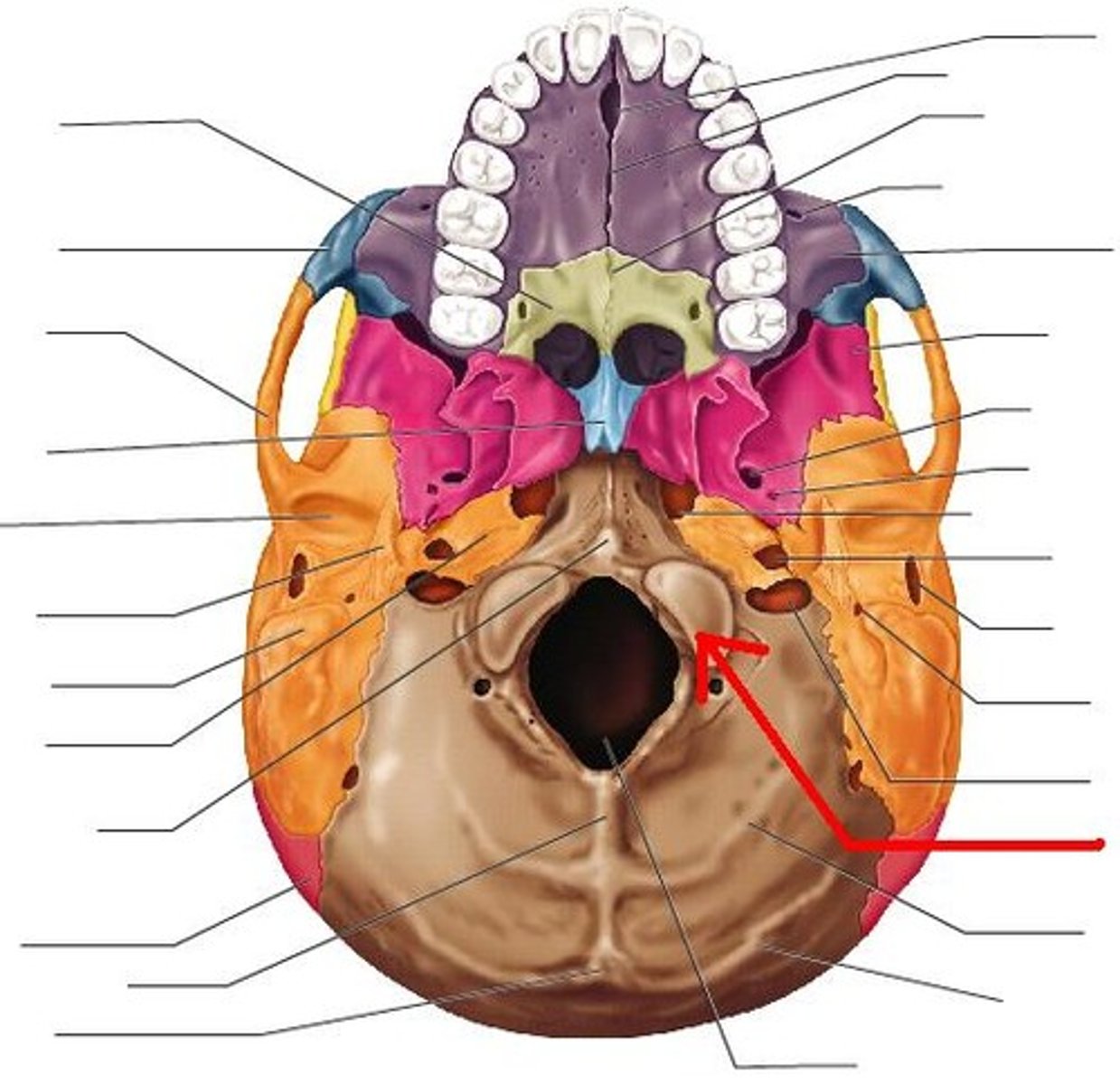
foramen magnum
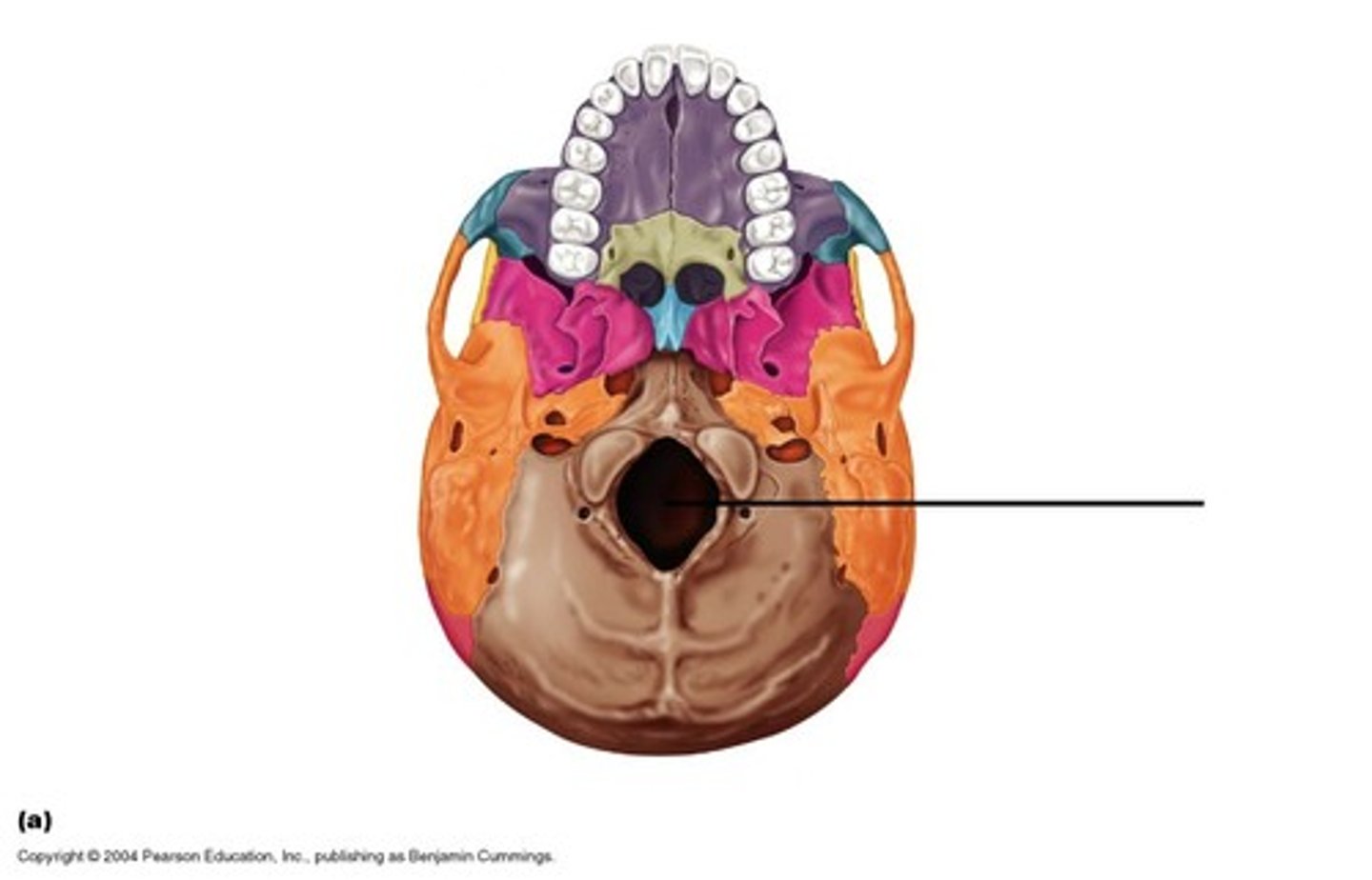
sella turcia

sella turcia
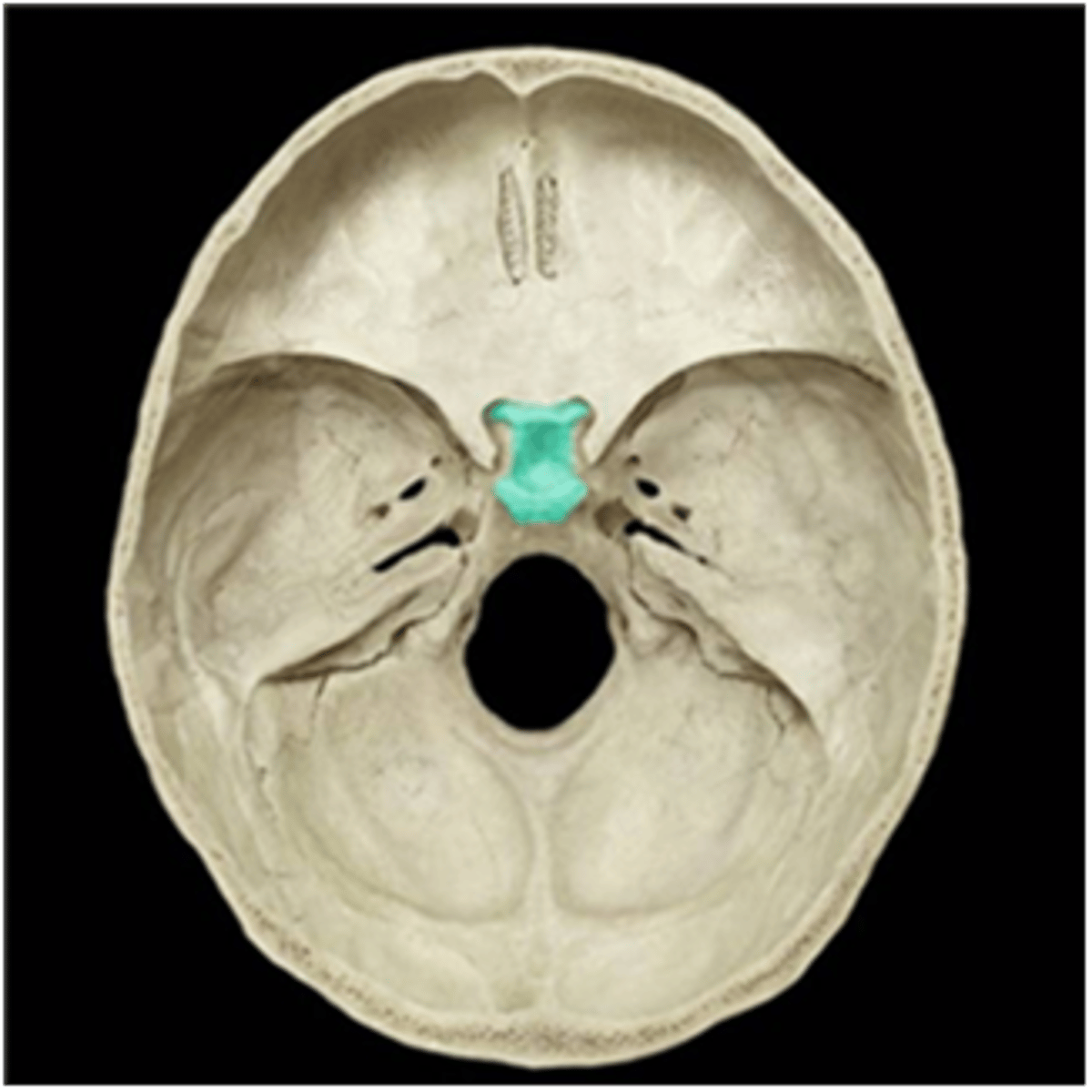
optic canal
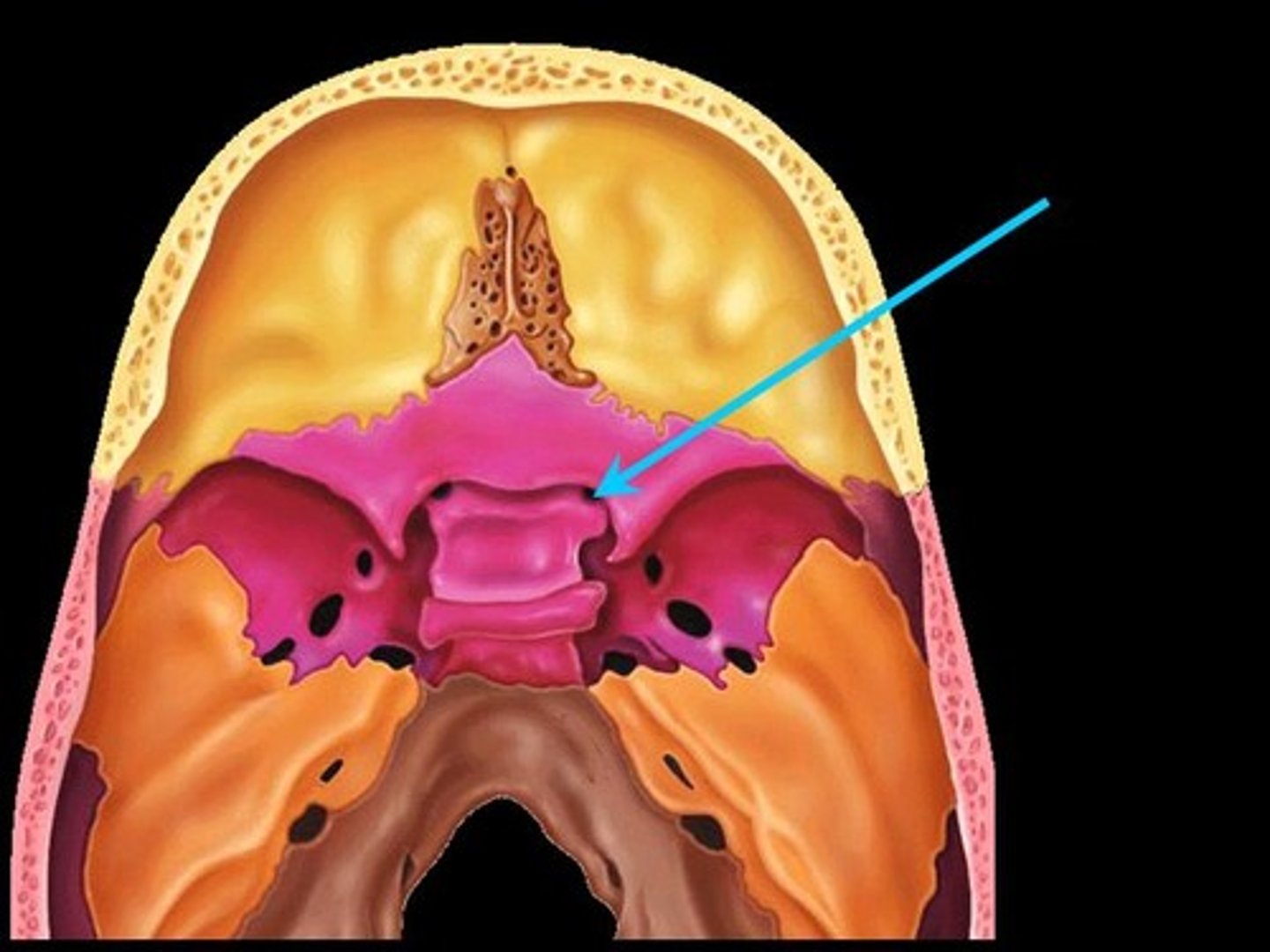
foramen ovale
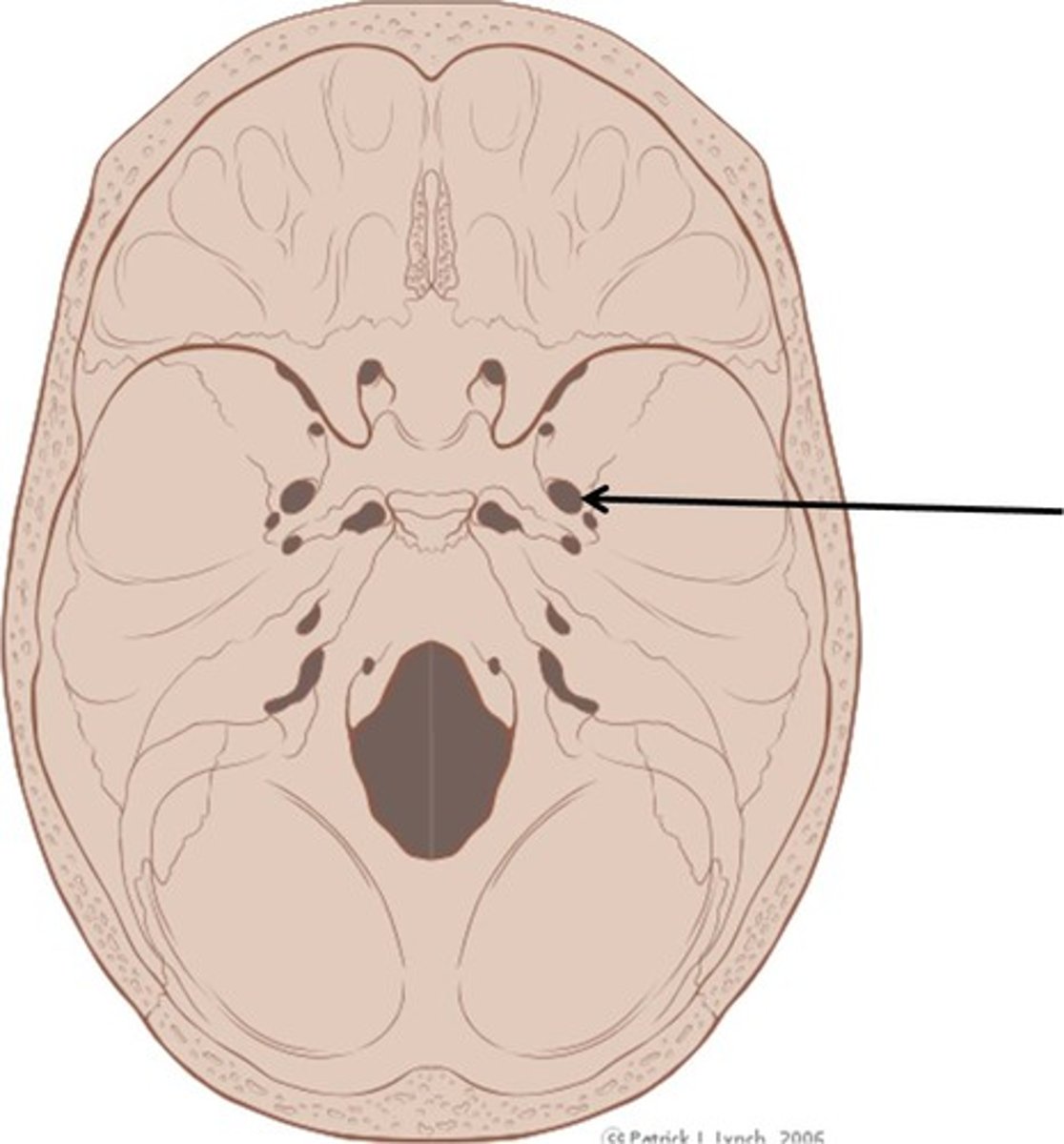
Supraorbital Fissure
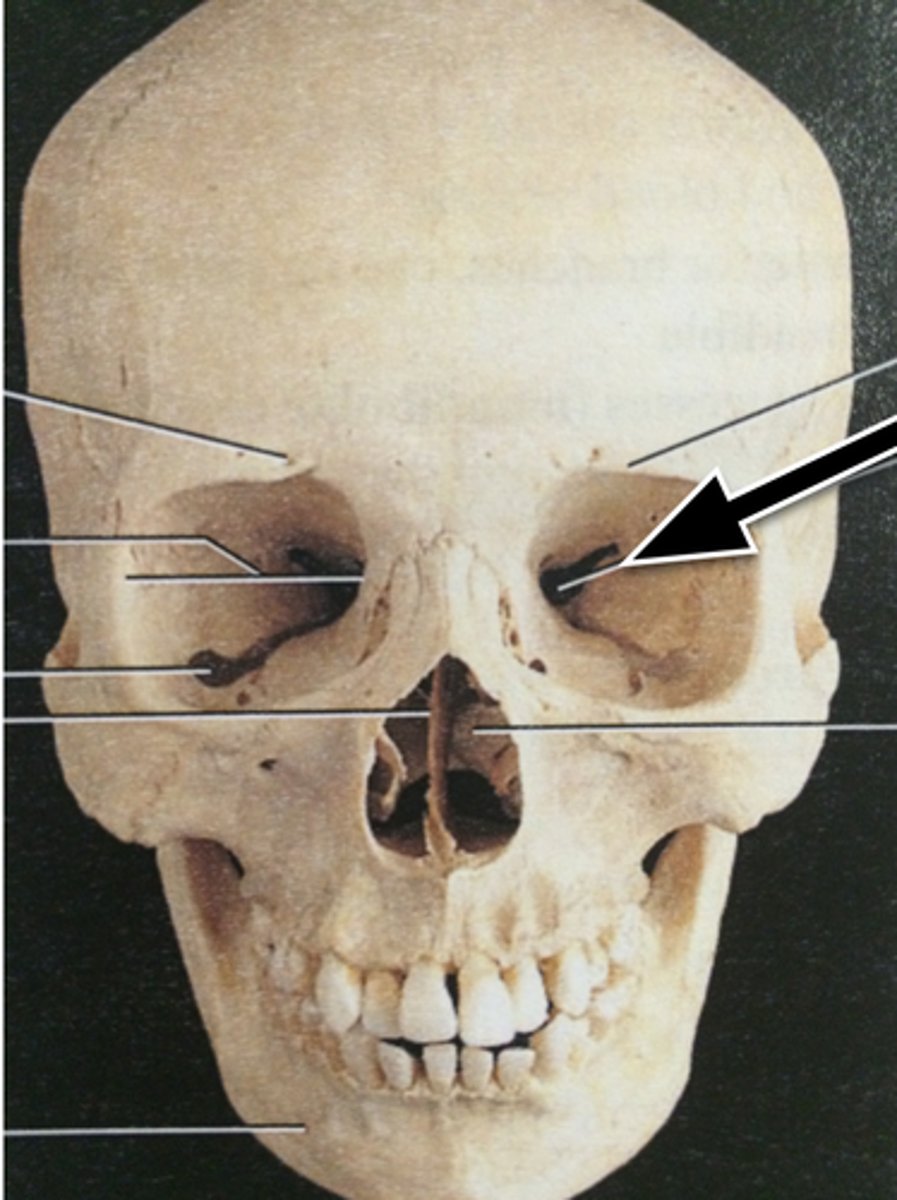
crista galli
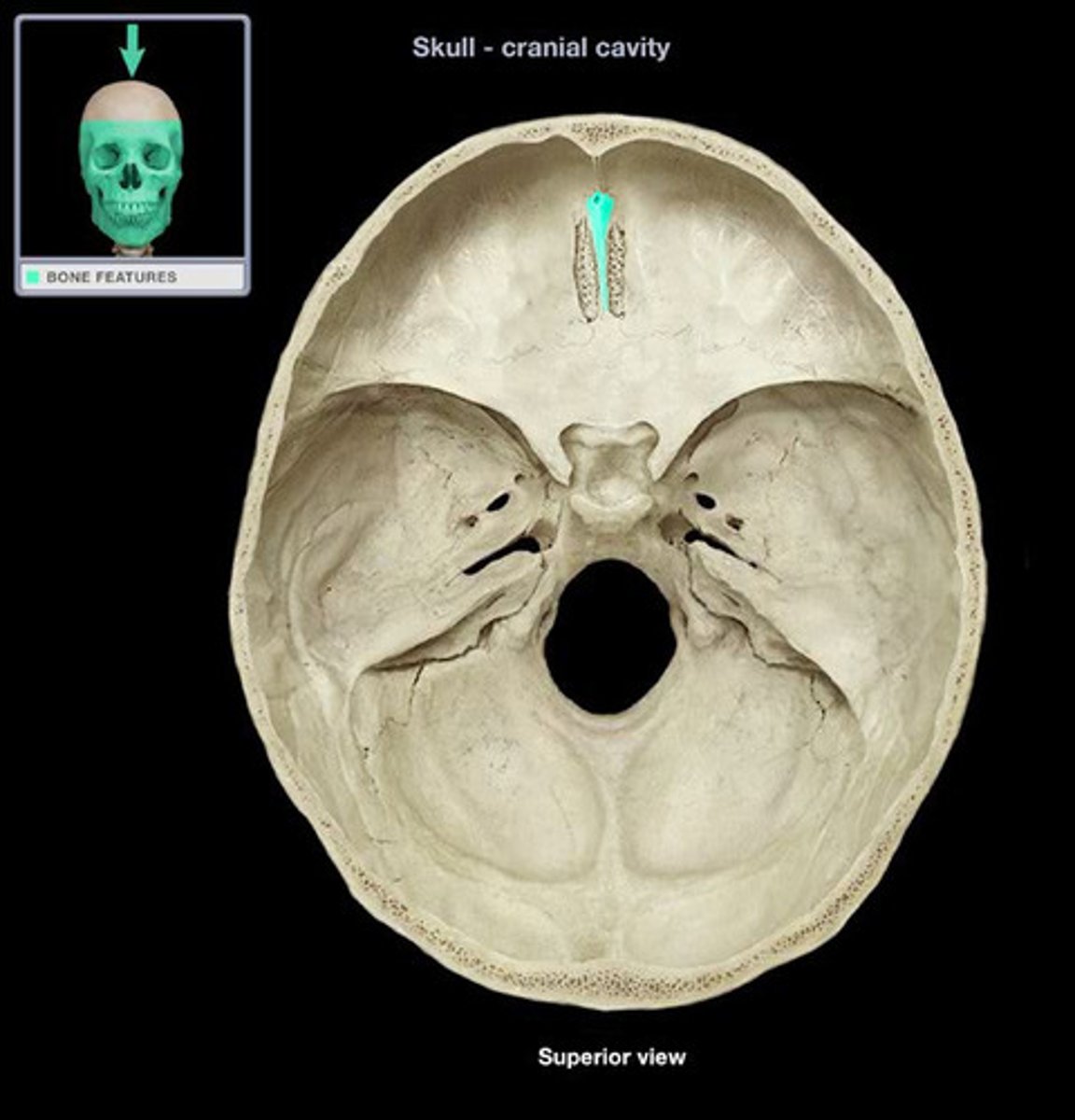
cribriform plate
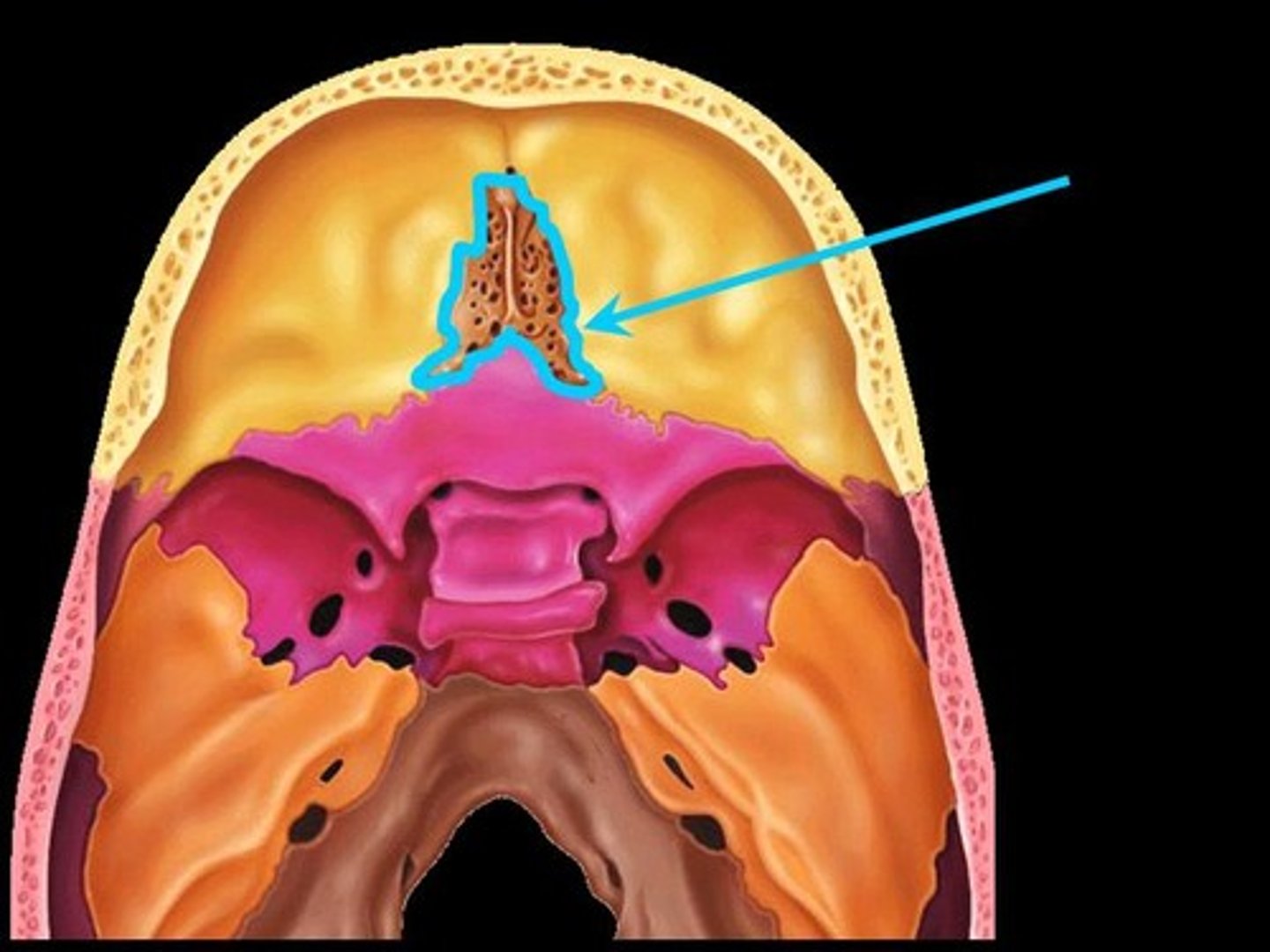
superior nasal concha
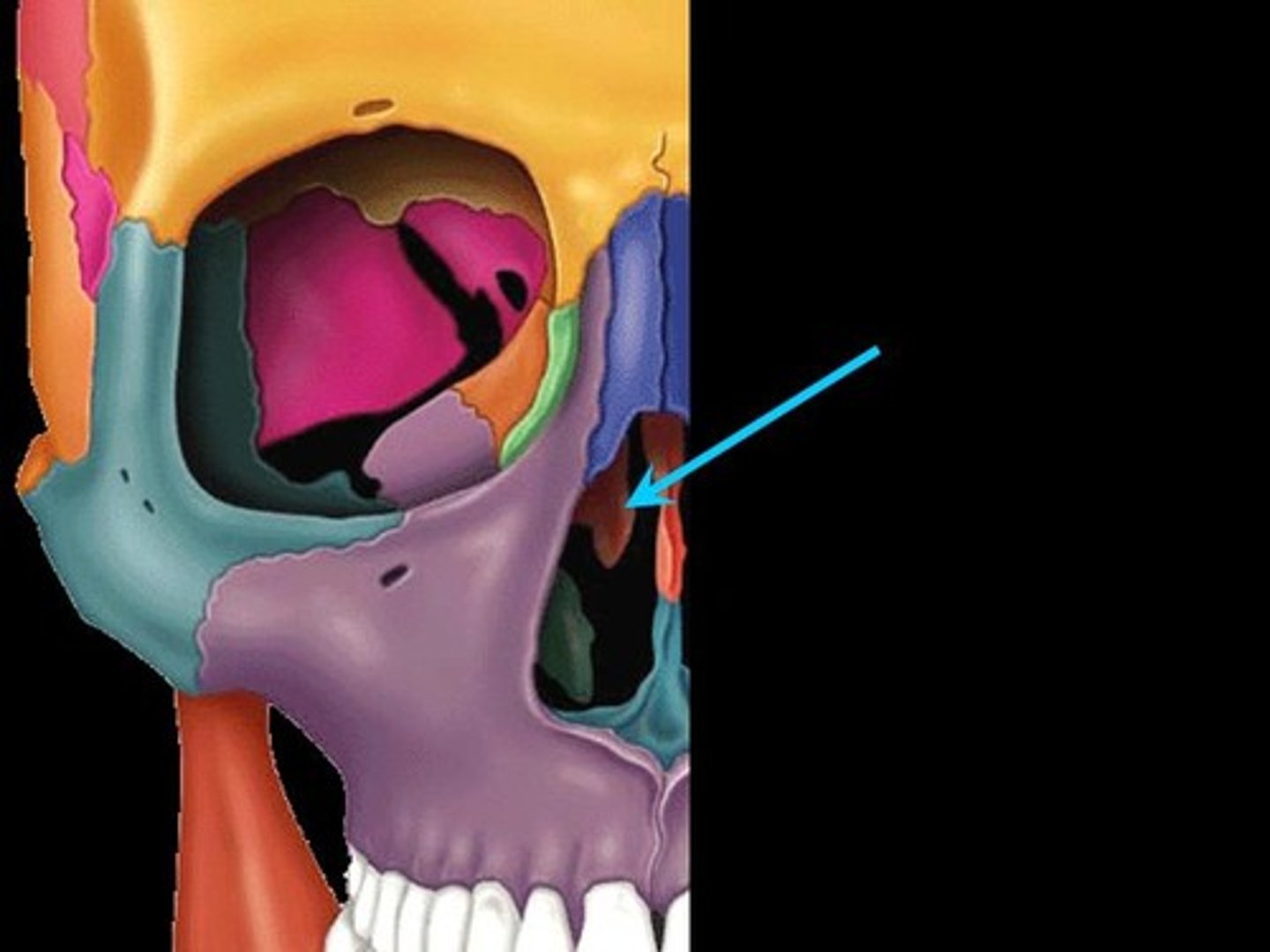
inferior nasal concha
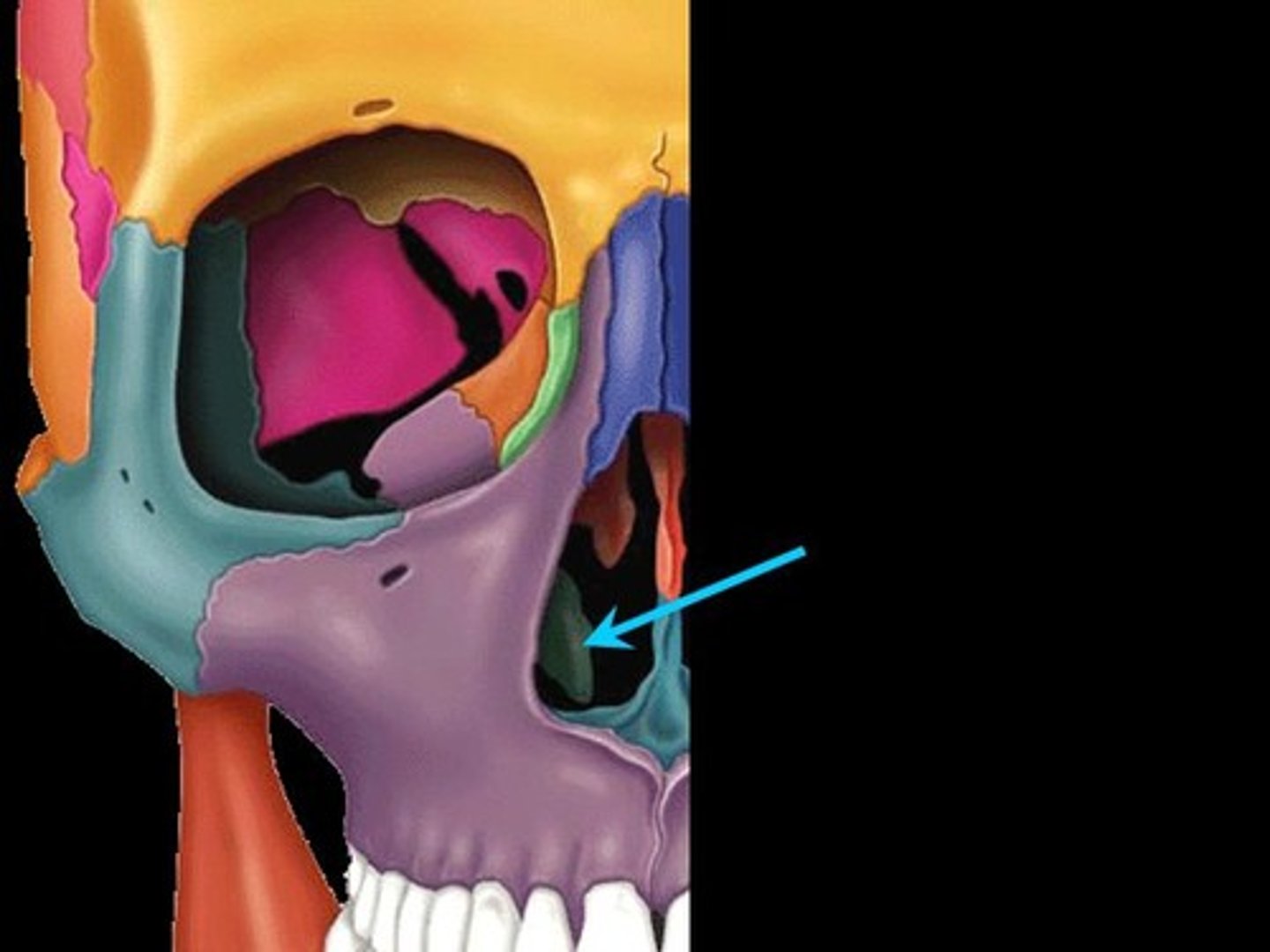
palatine bone
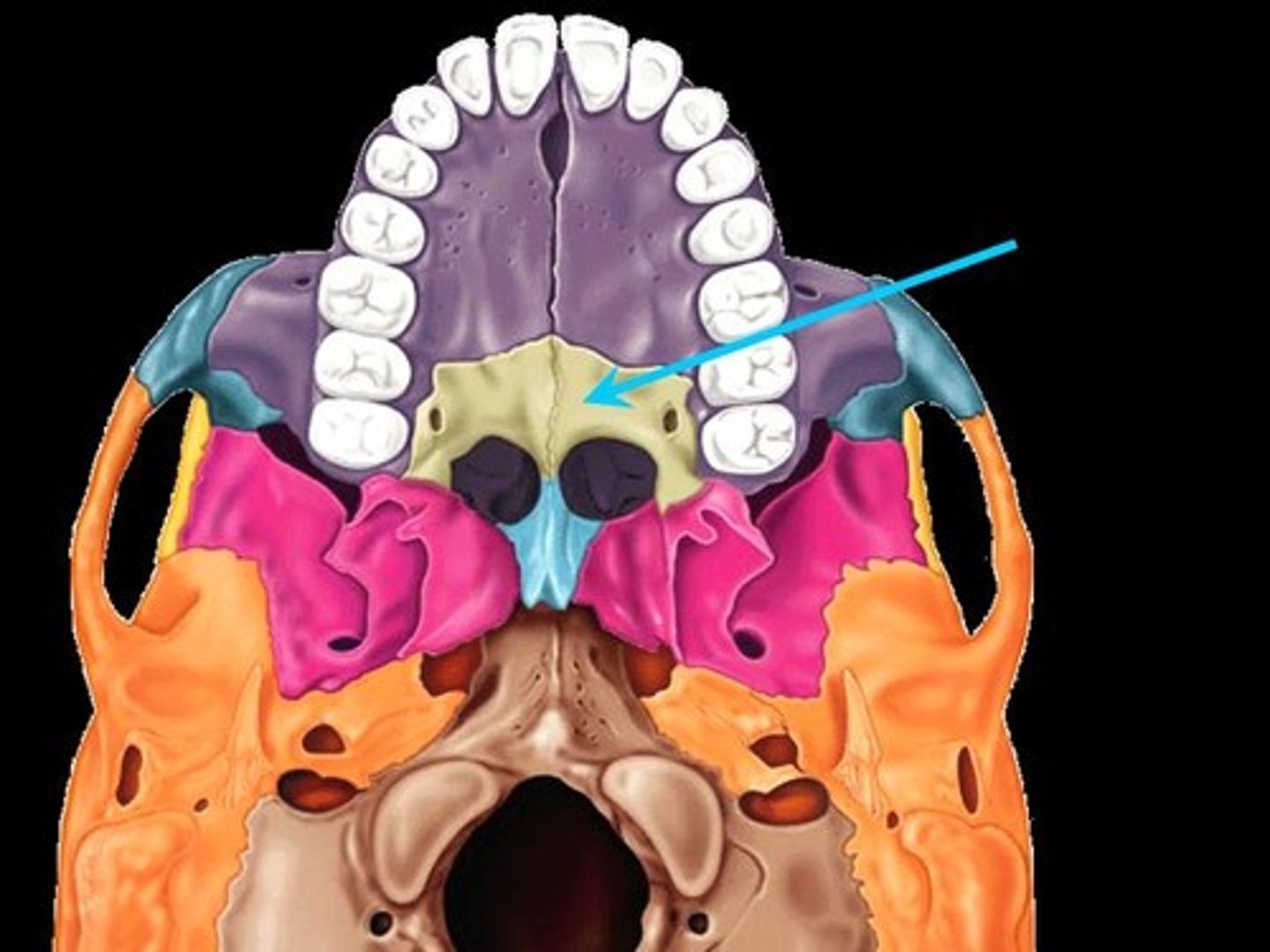
infraorbial foramen
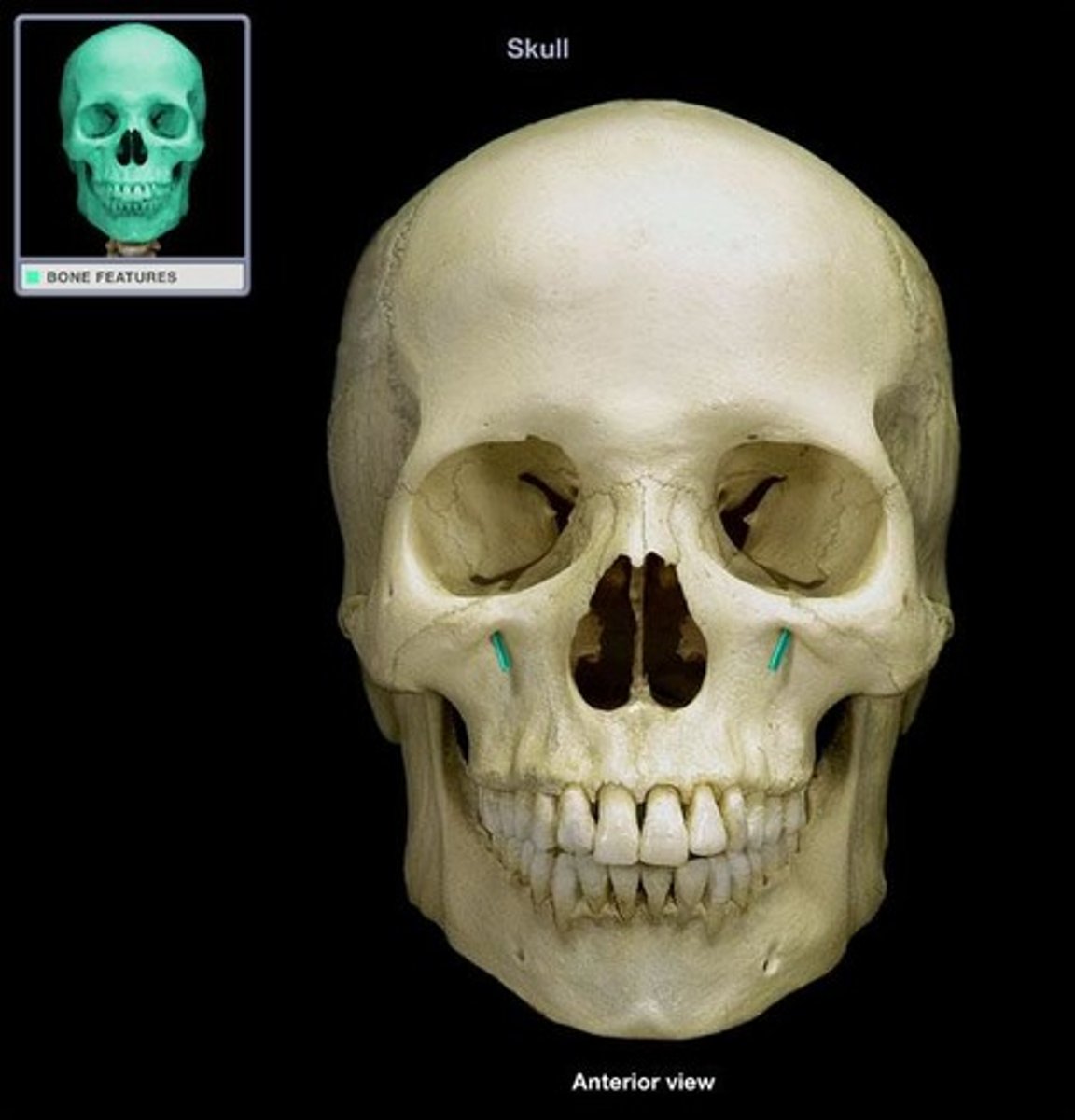
temporal process
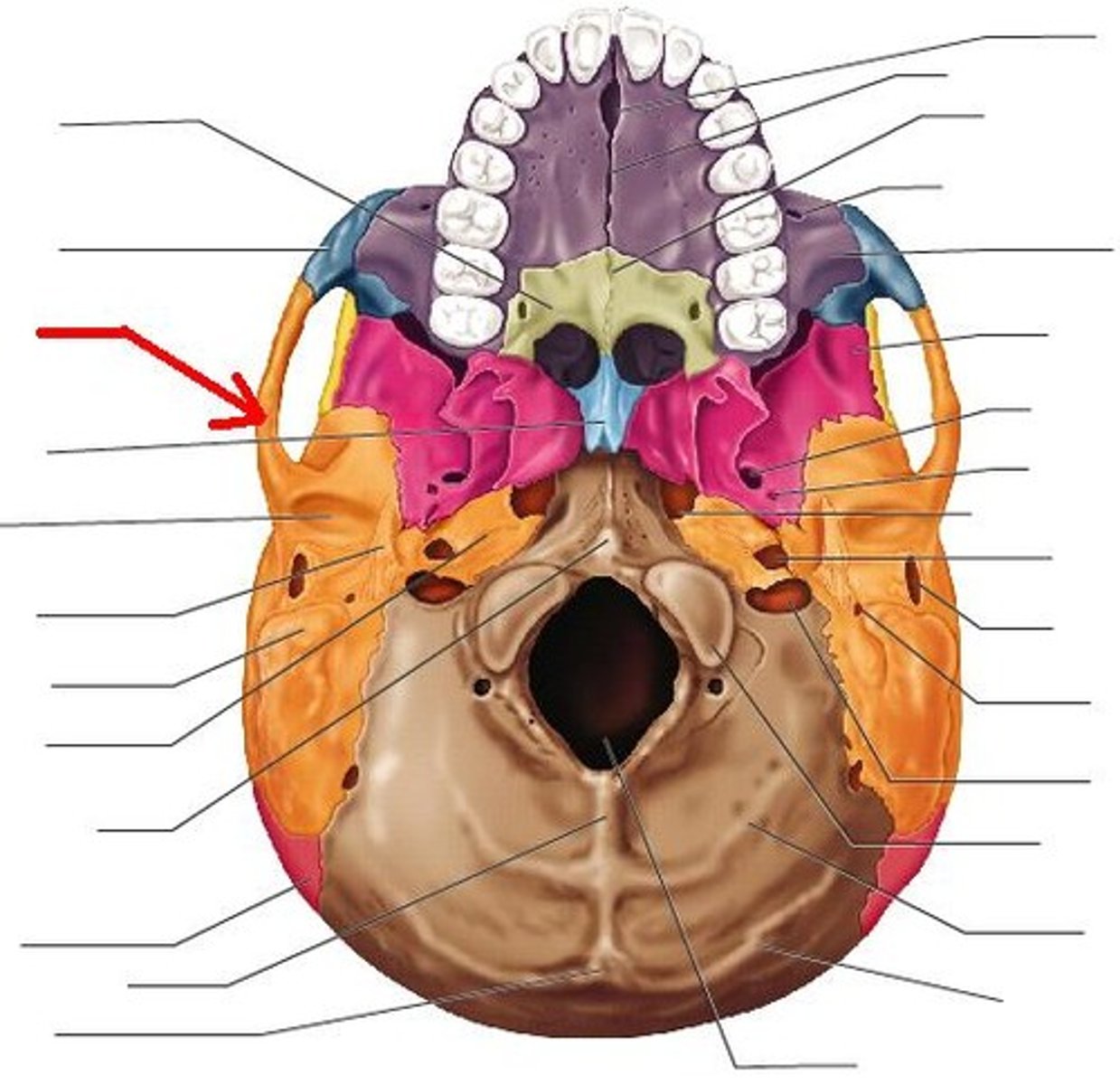
ramus
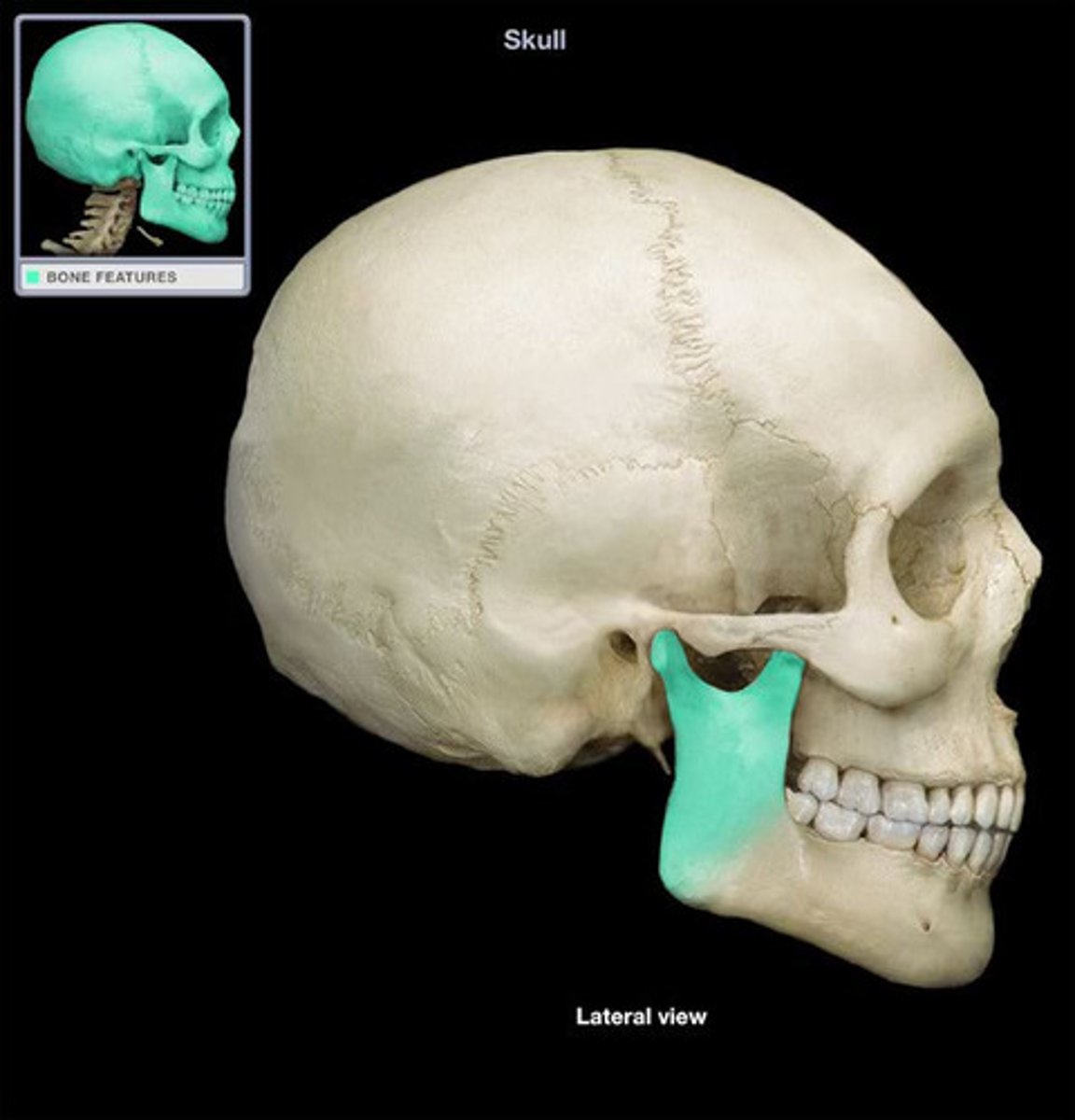
lacrimal
body of mandiblw

mental foramen
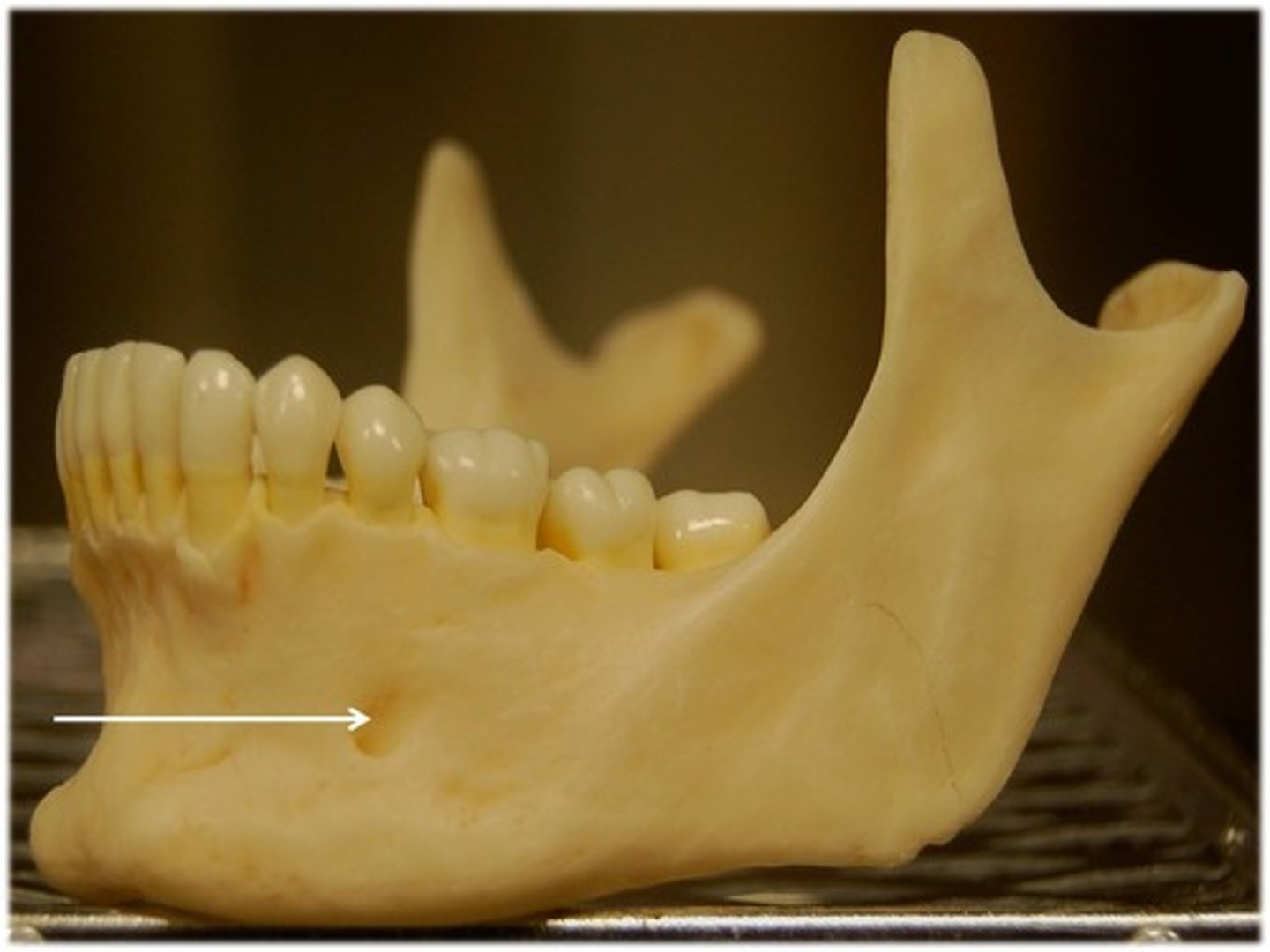
mental protuberance
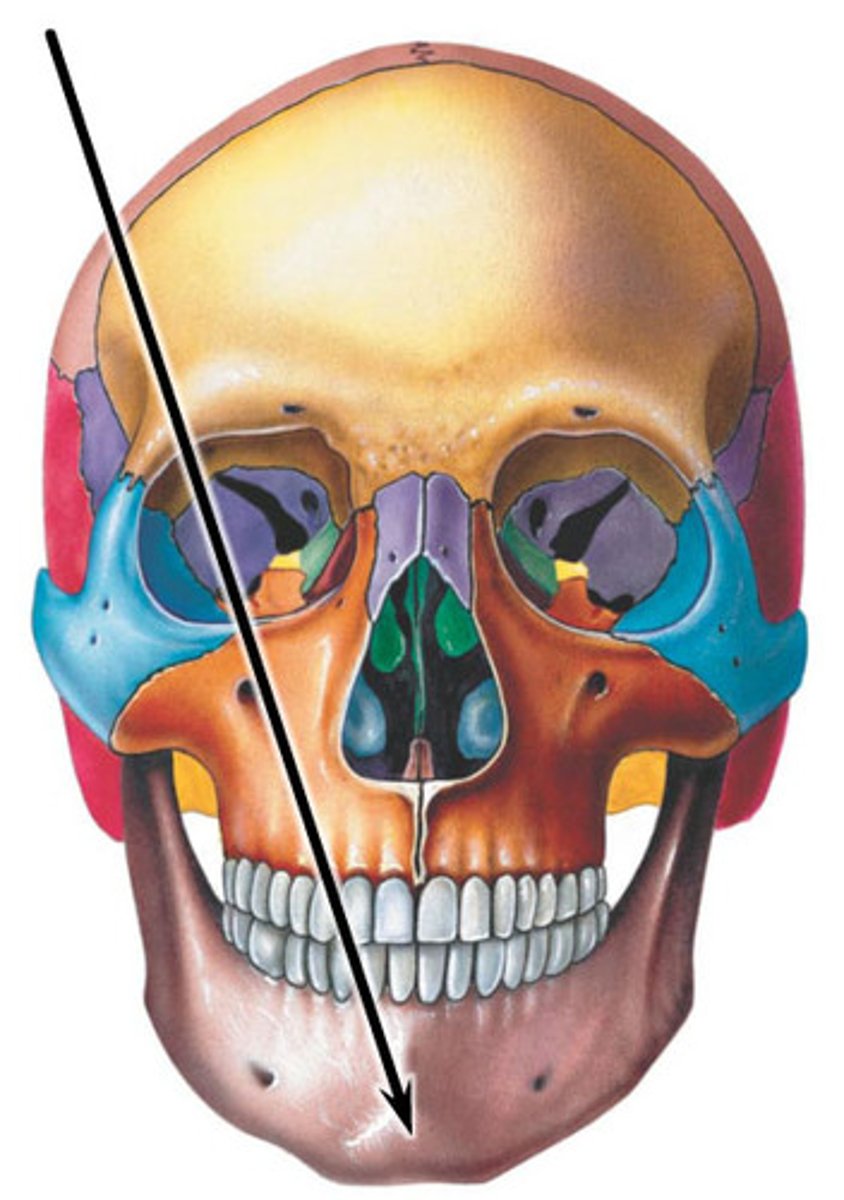
malleus
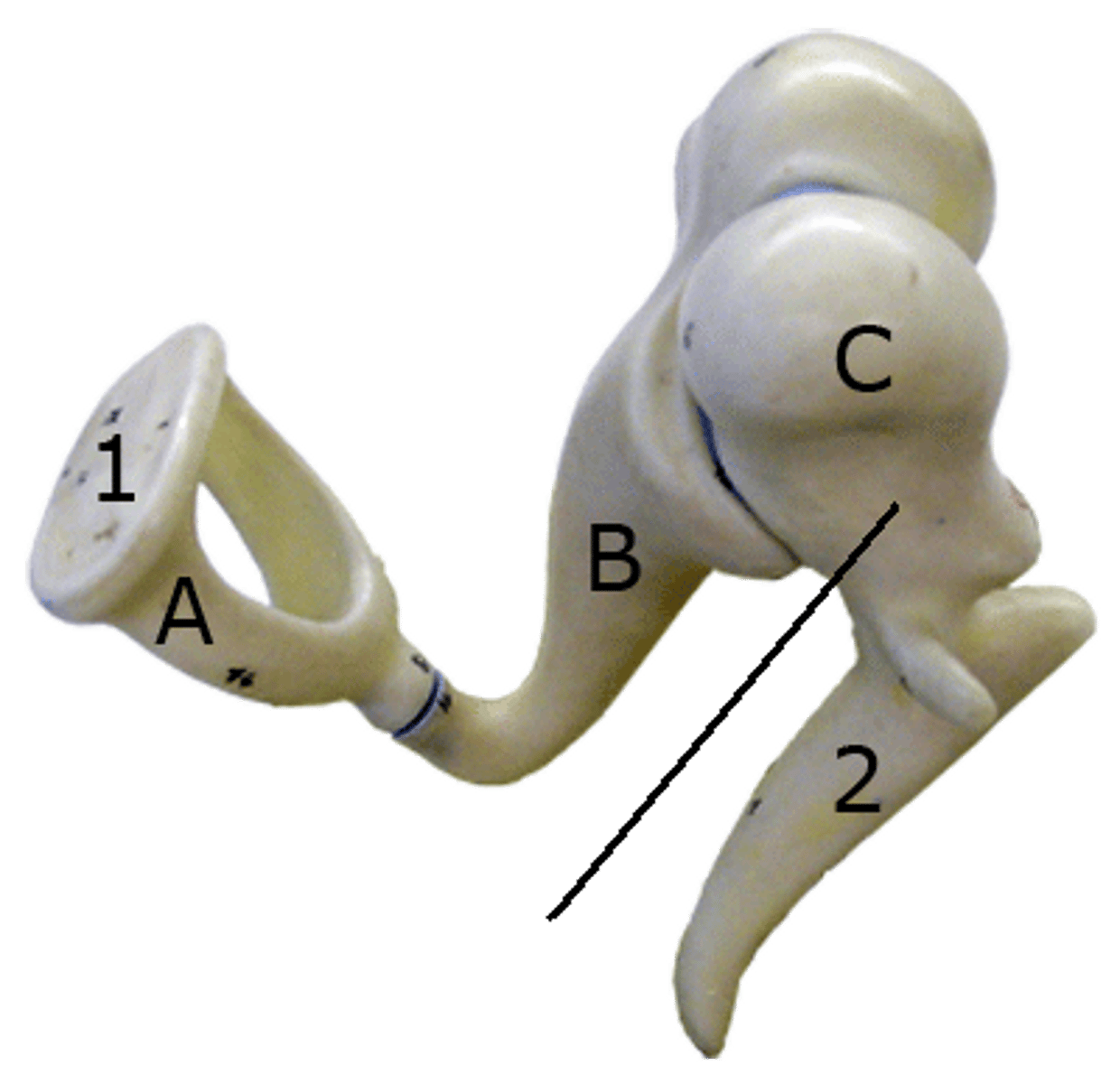
incus
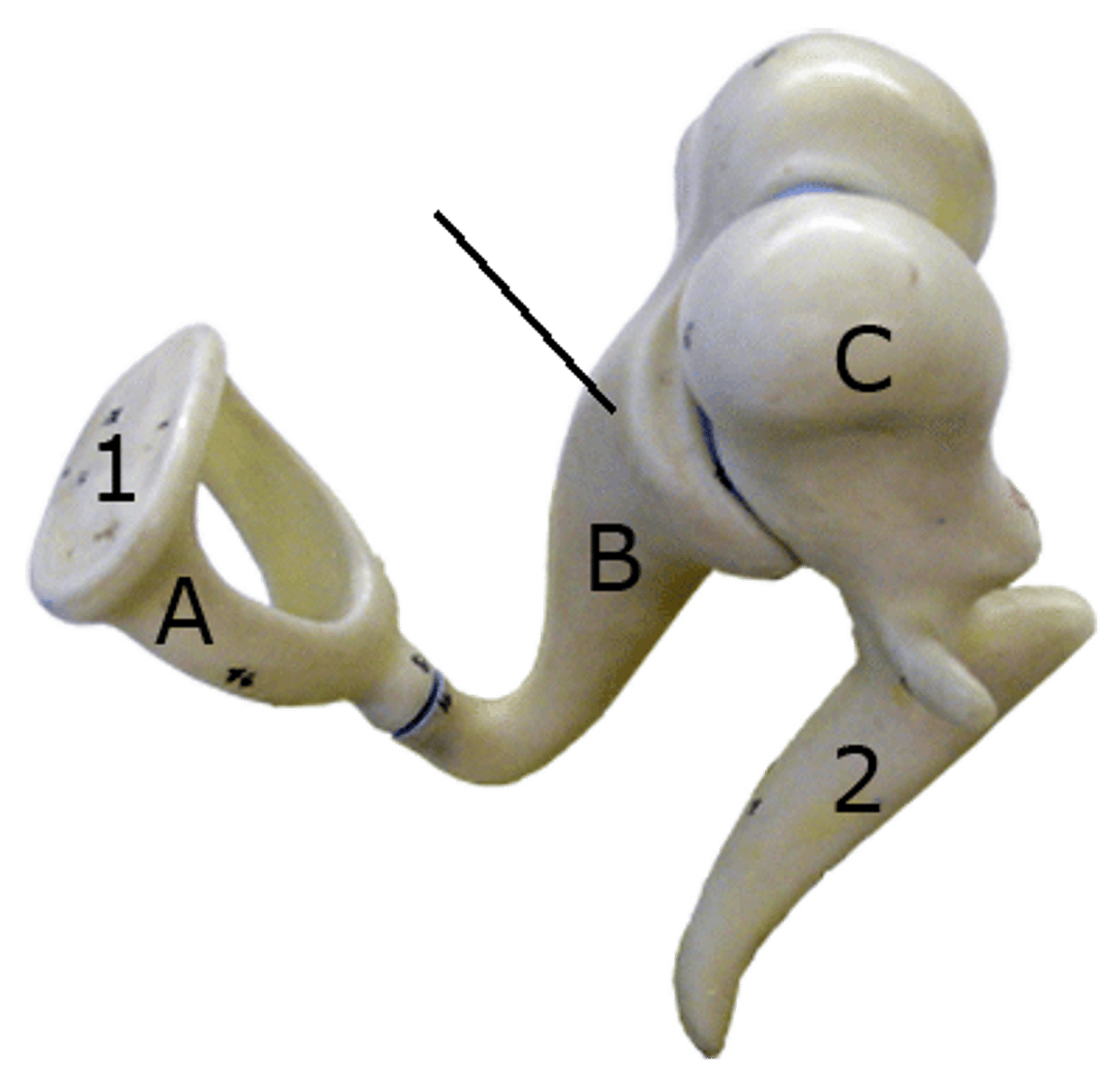
stapes
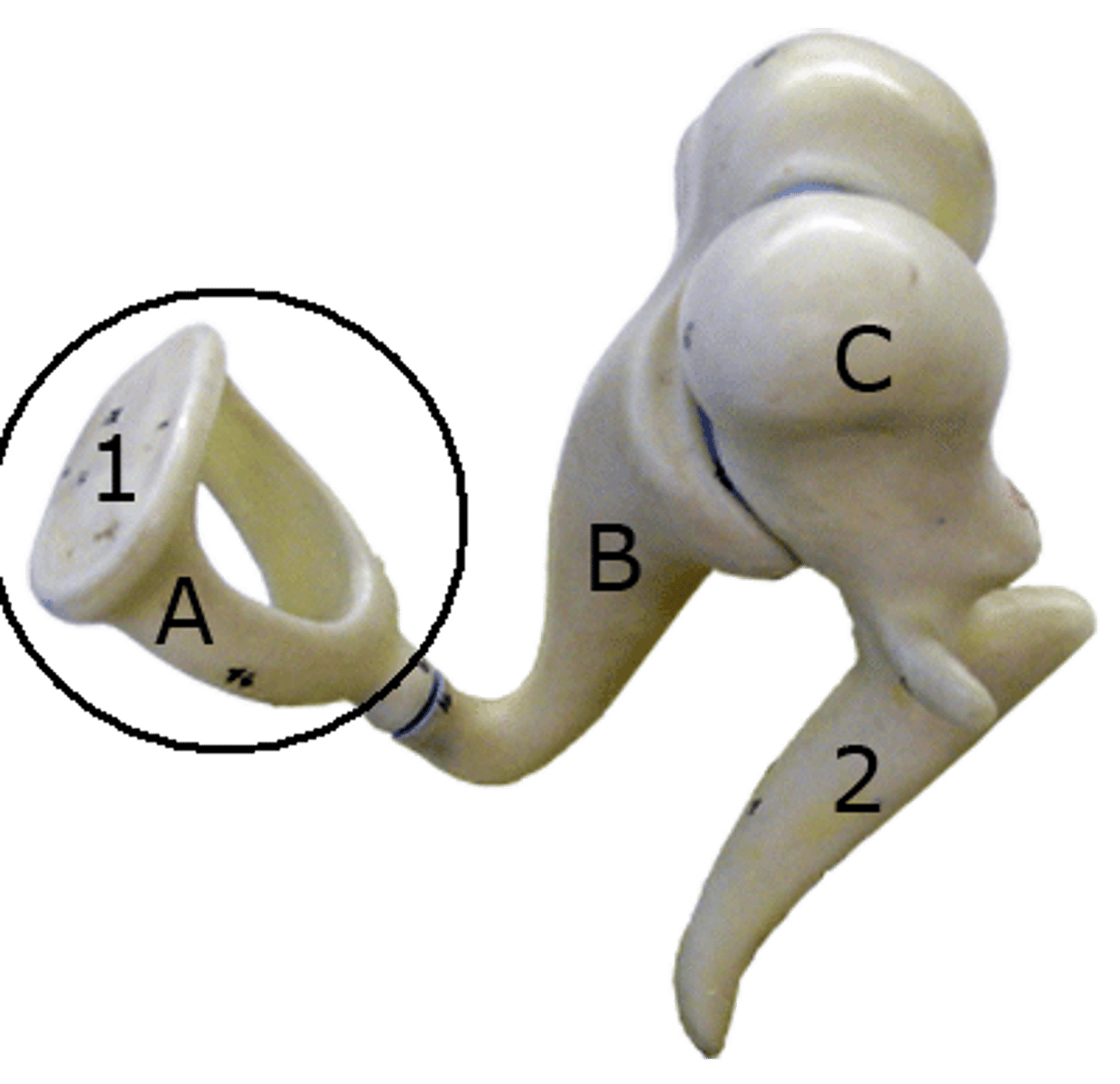
supraorbital margin
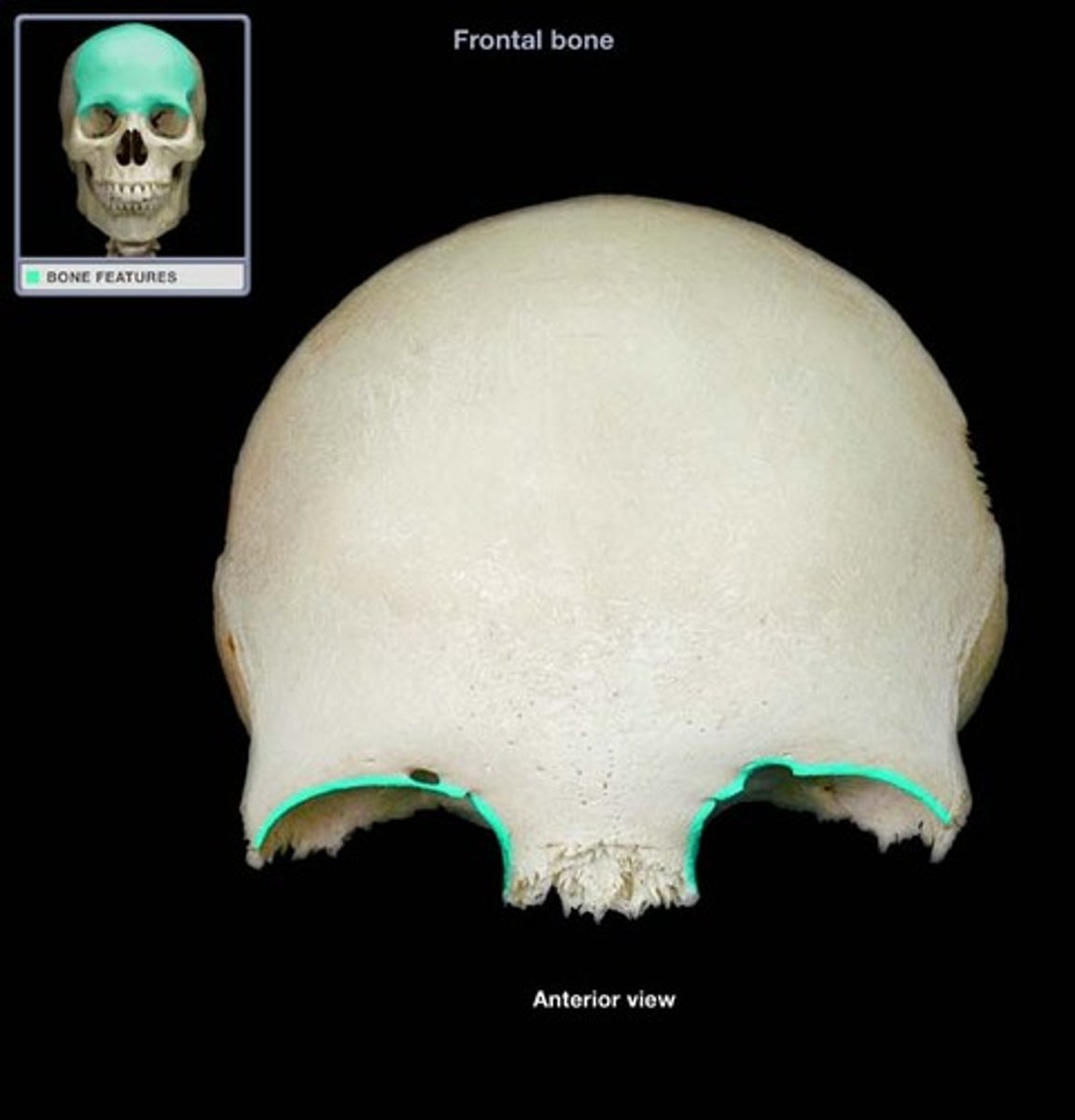
mandibular symphysis
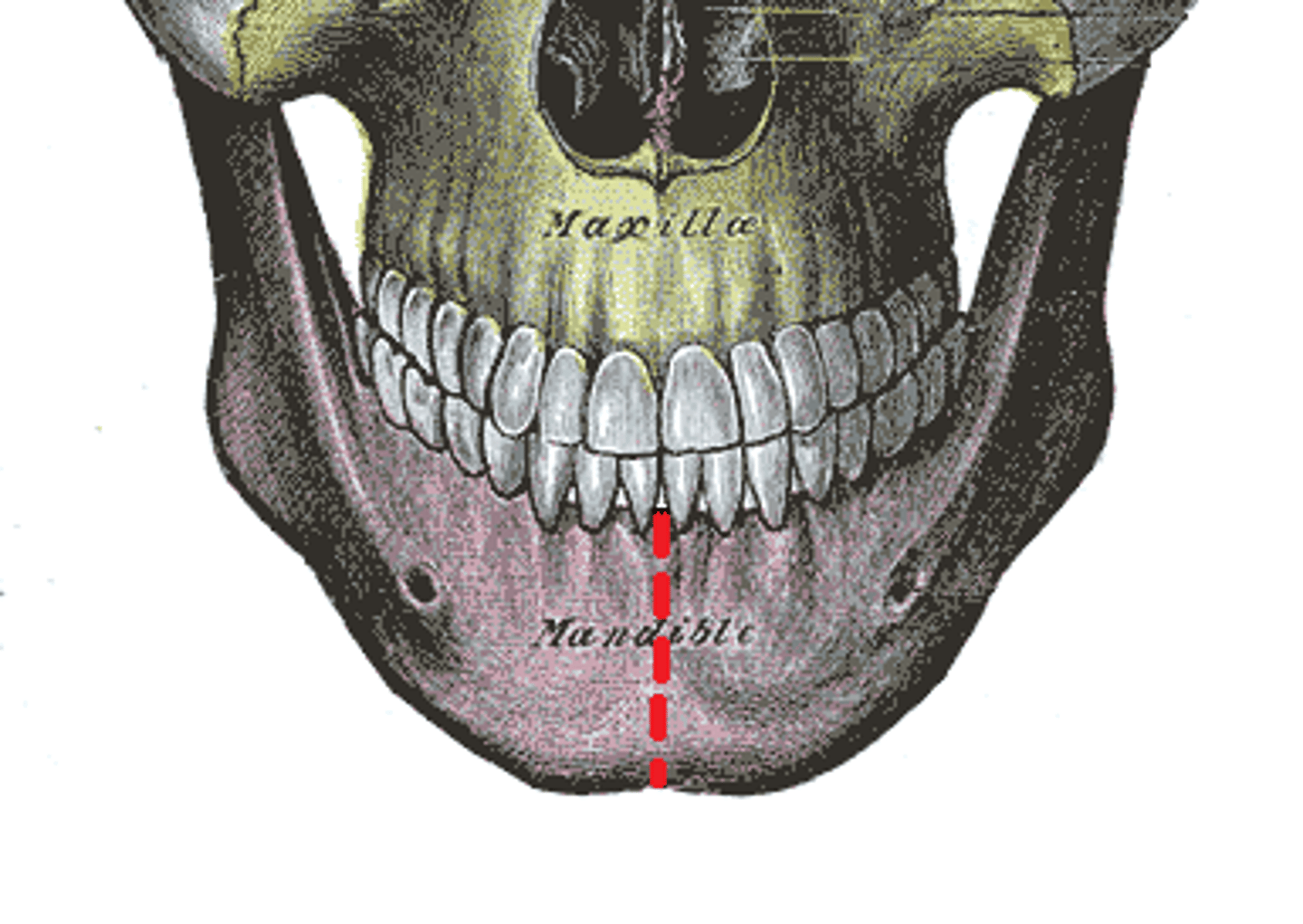
supraorbital notch
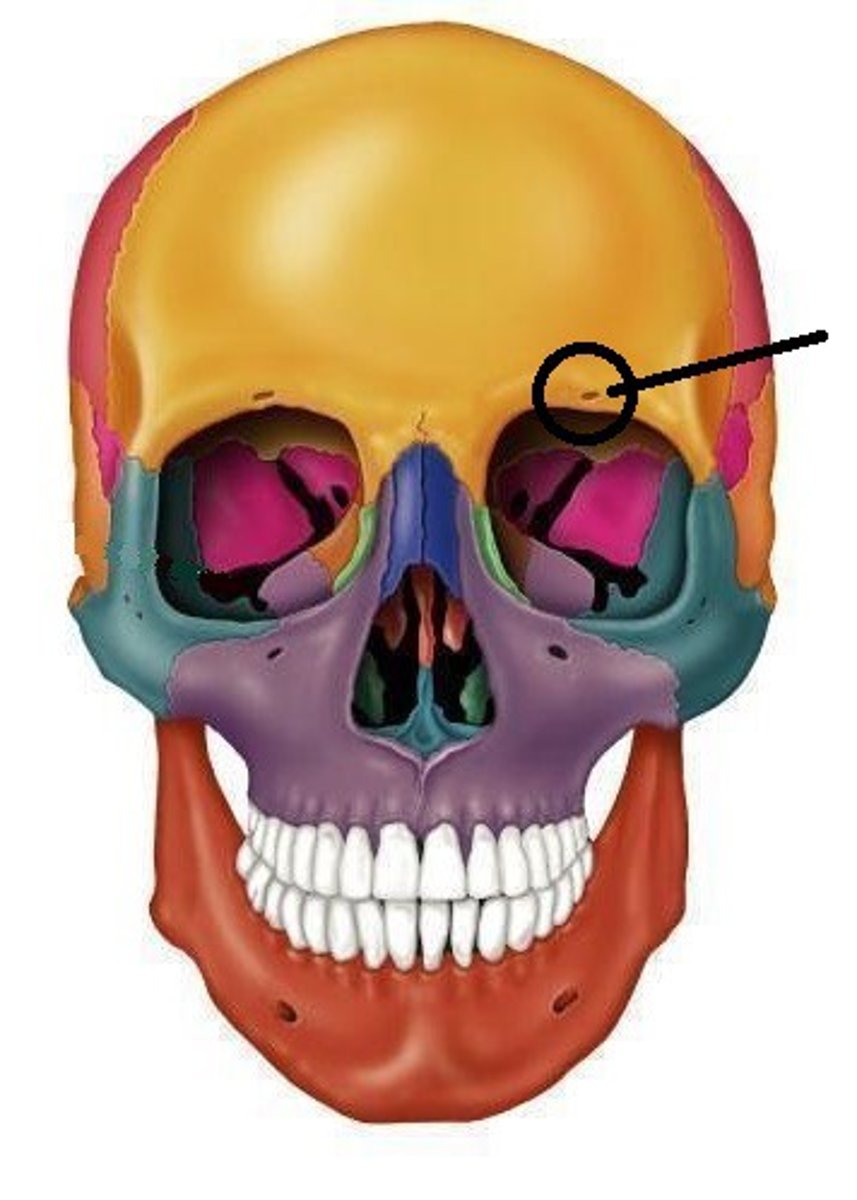
Glabella
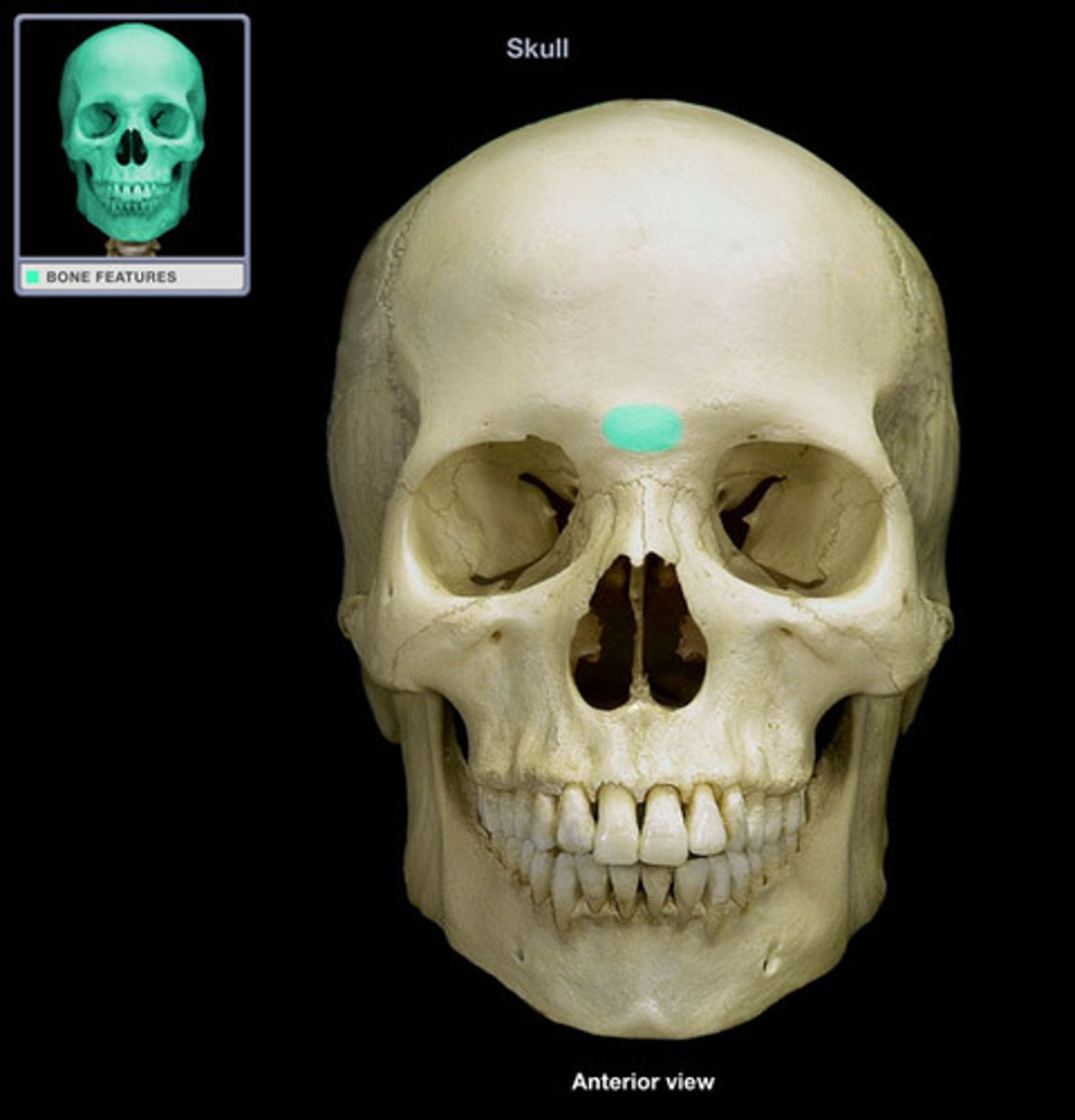
zygomatic process or the temporal bone
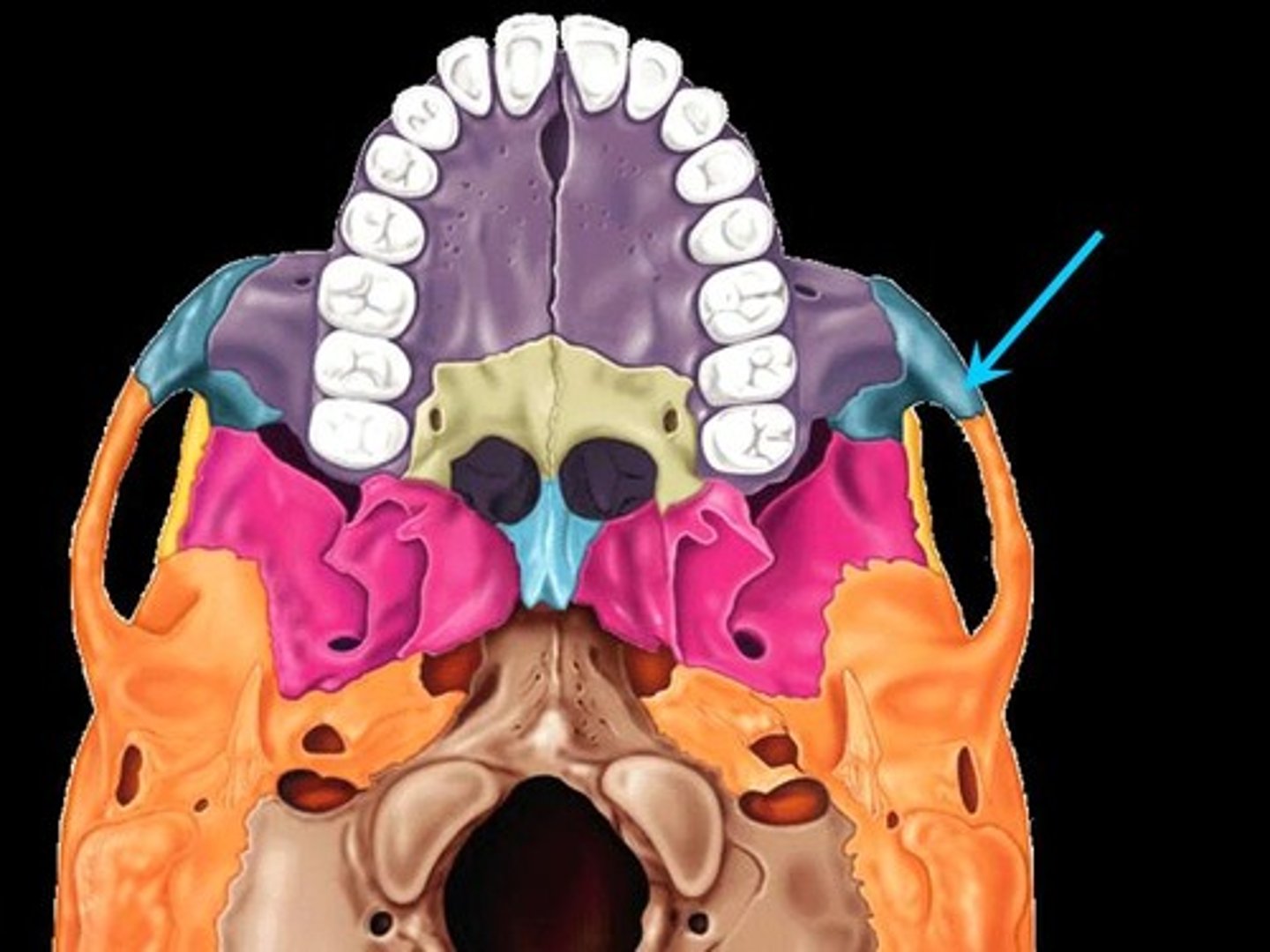
temporal process of zygomatic bone
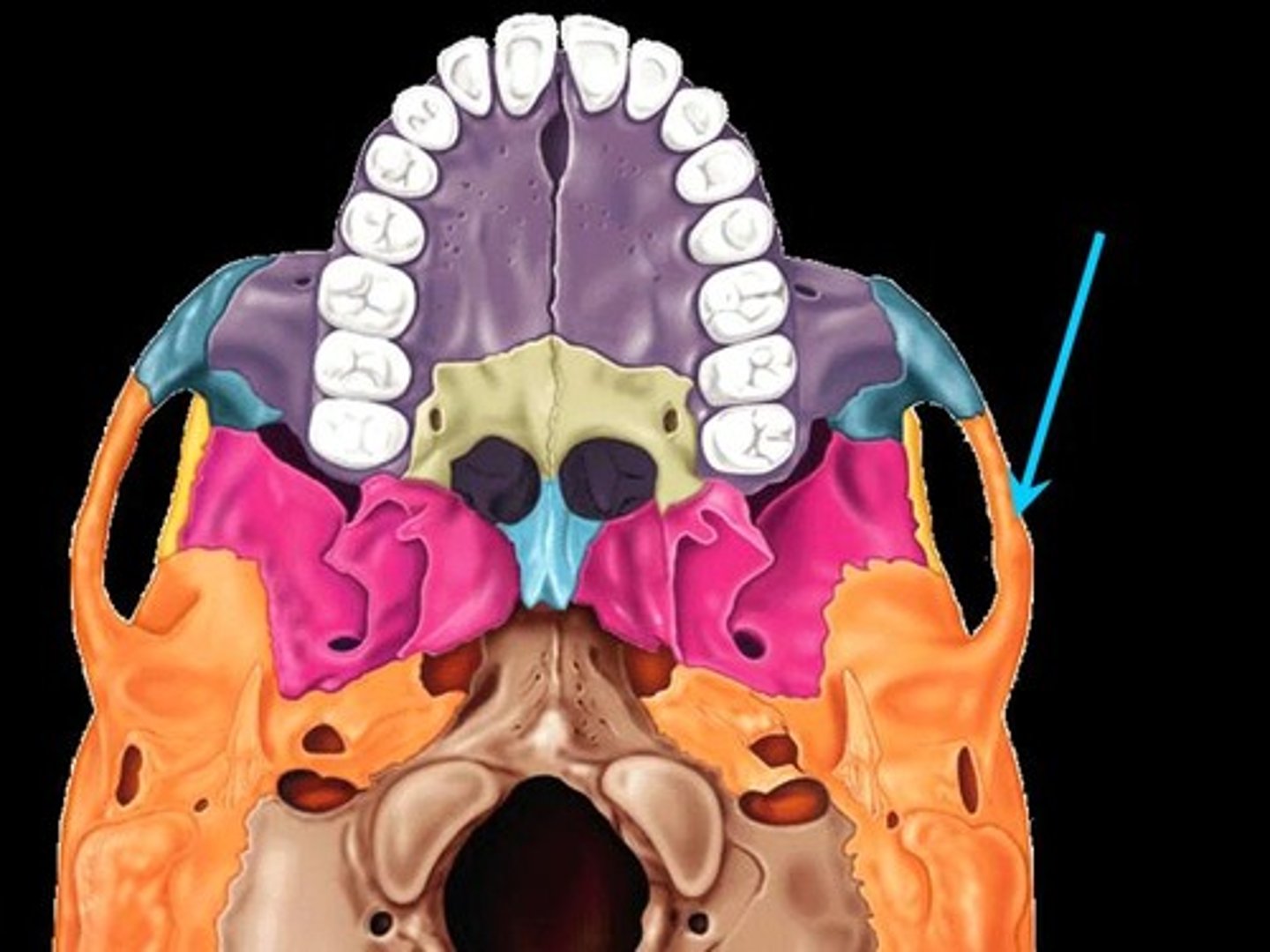
Coronoid process of mandible
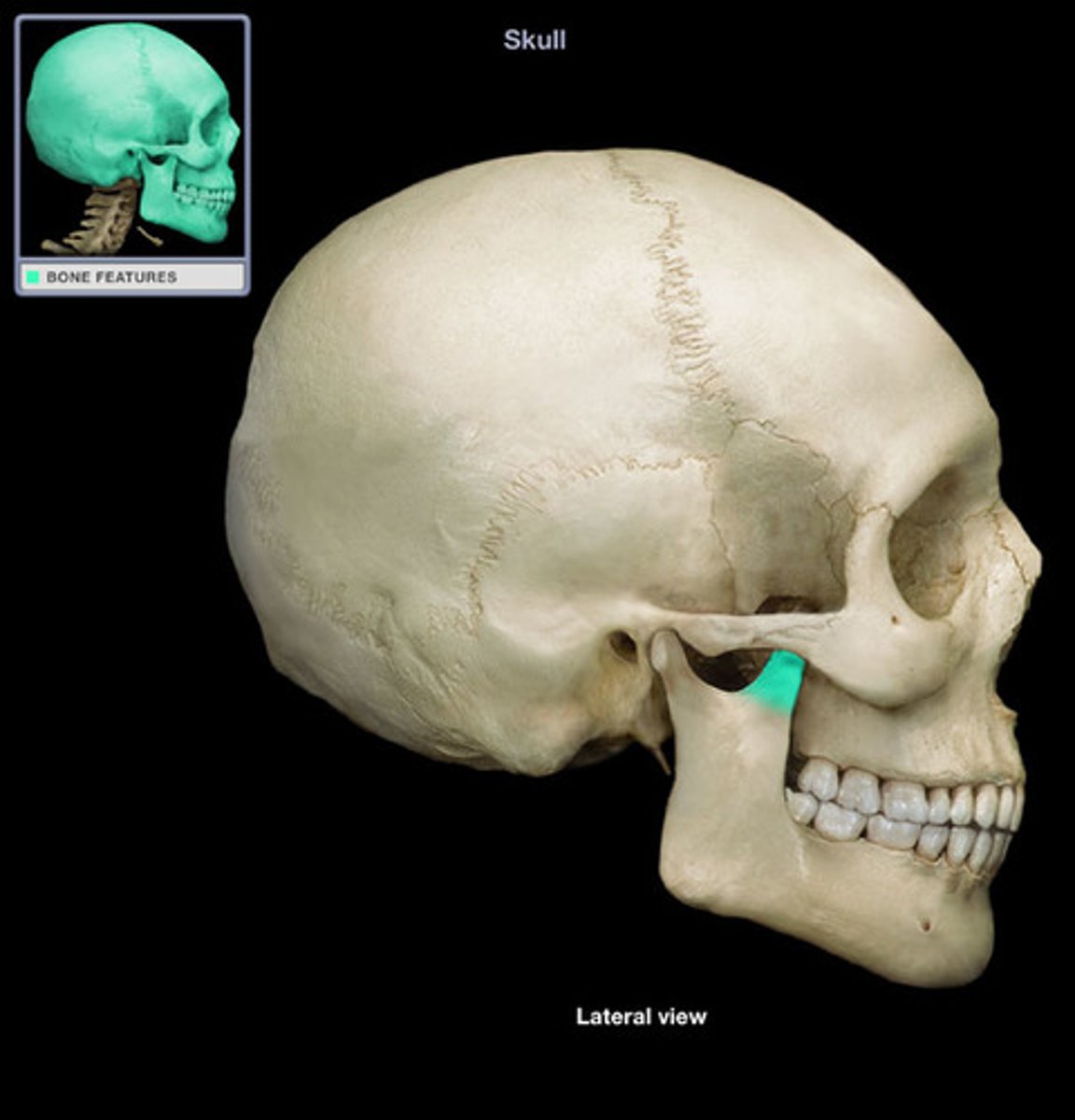
infraorbital foramen
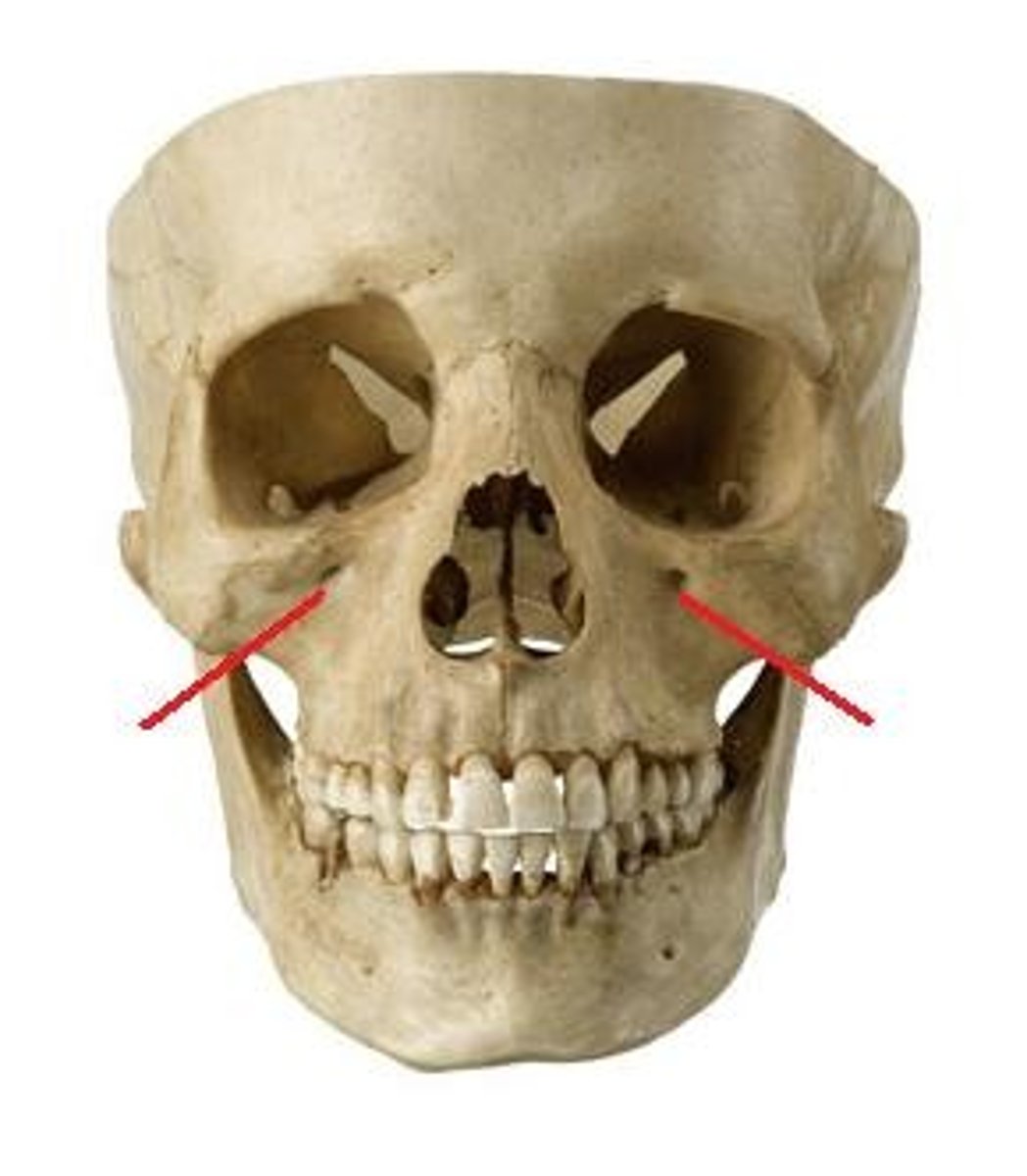
Infraorbital Fissure
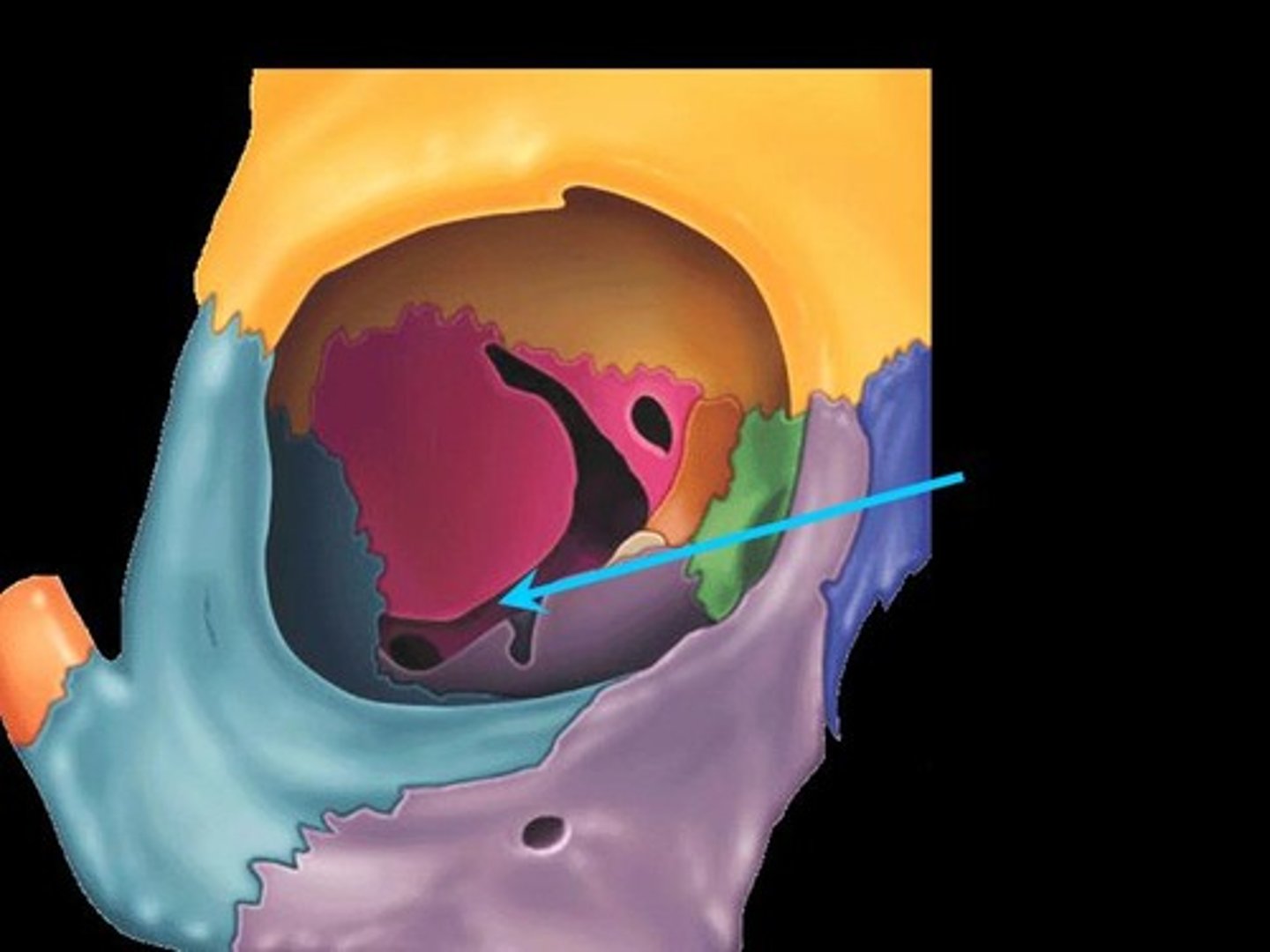
mandibular notch
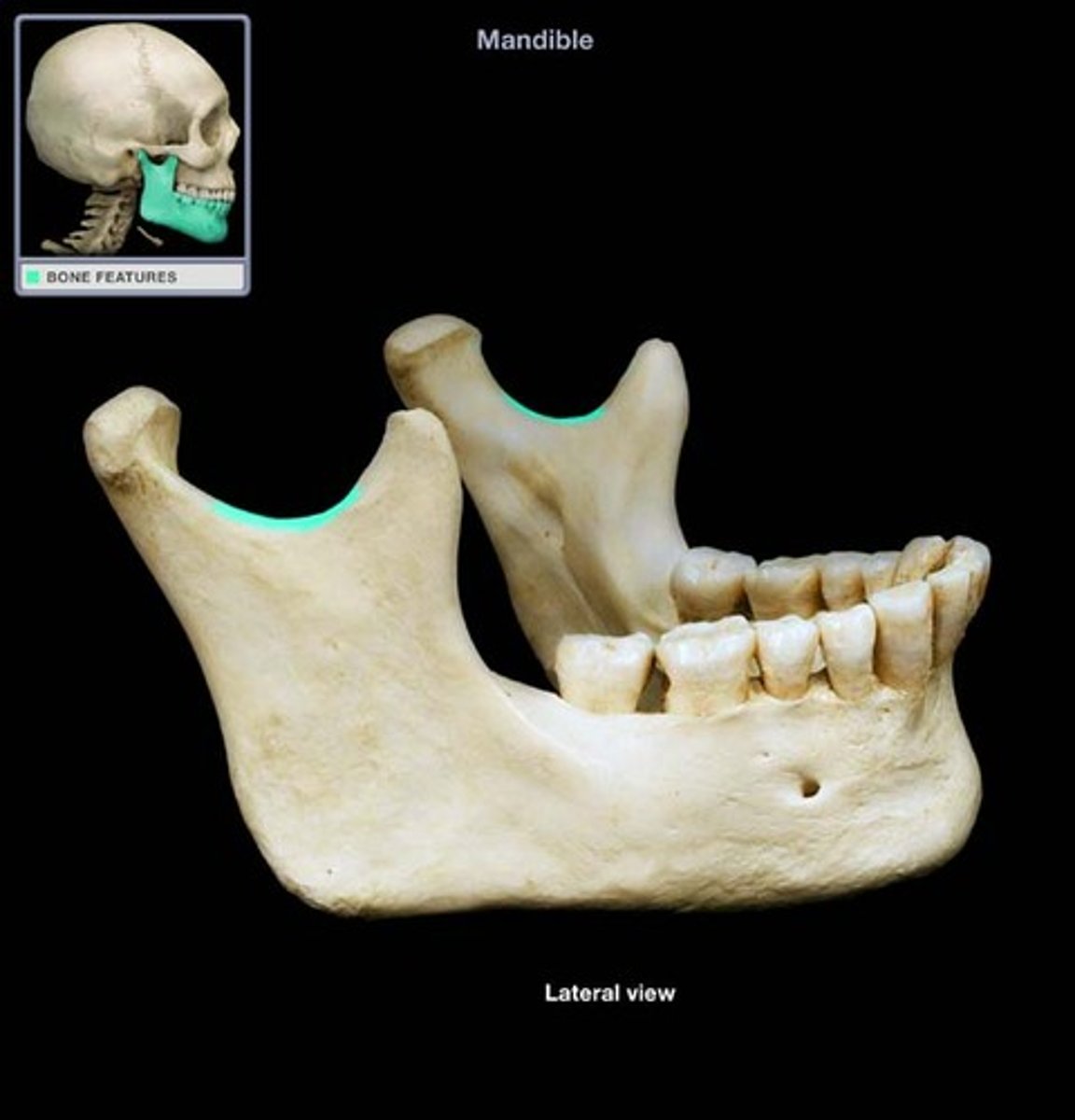
nasal bone
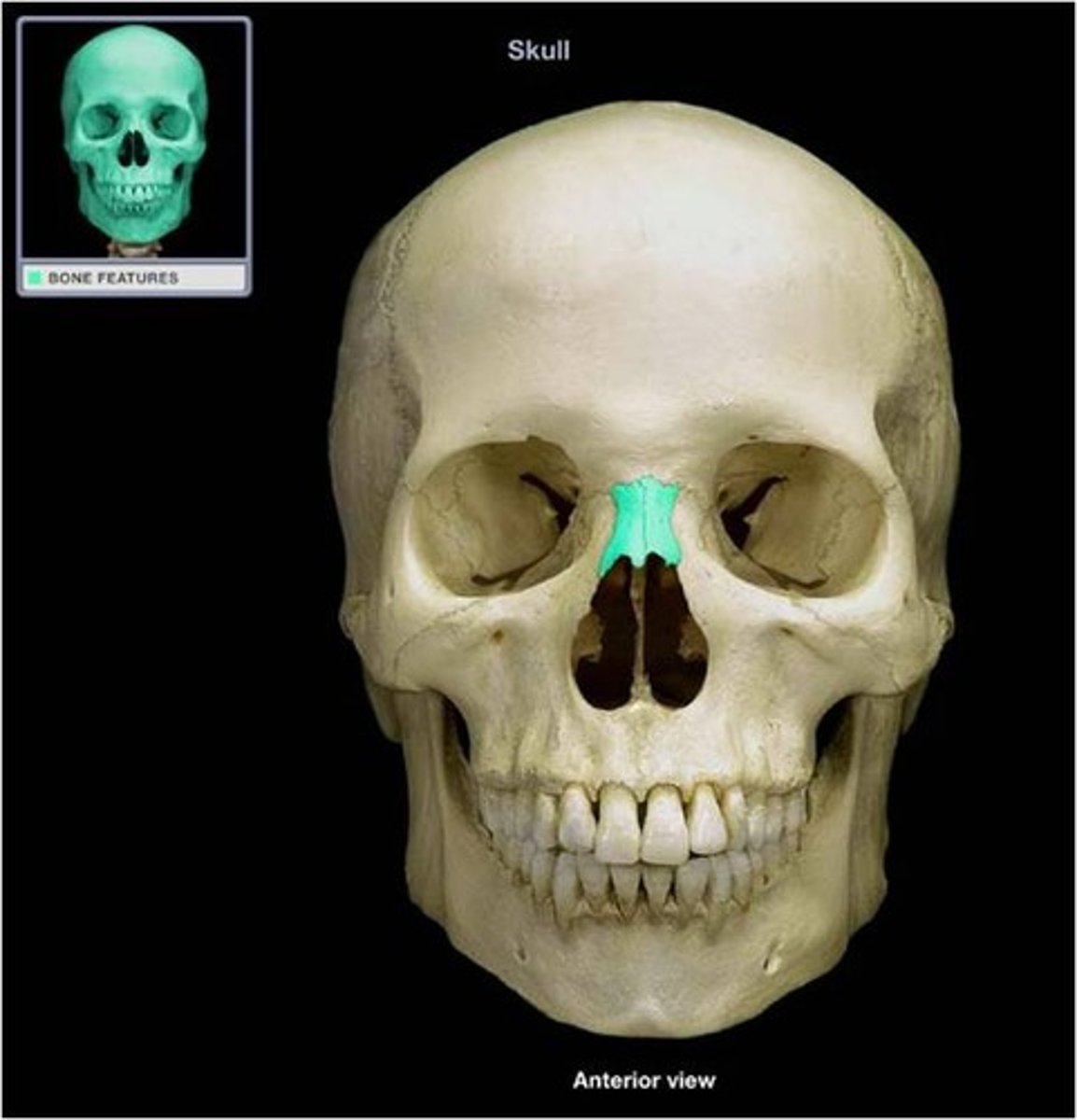
superior border (scapula)
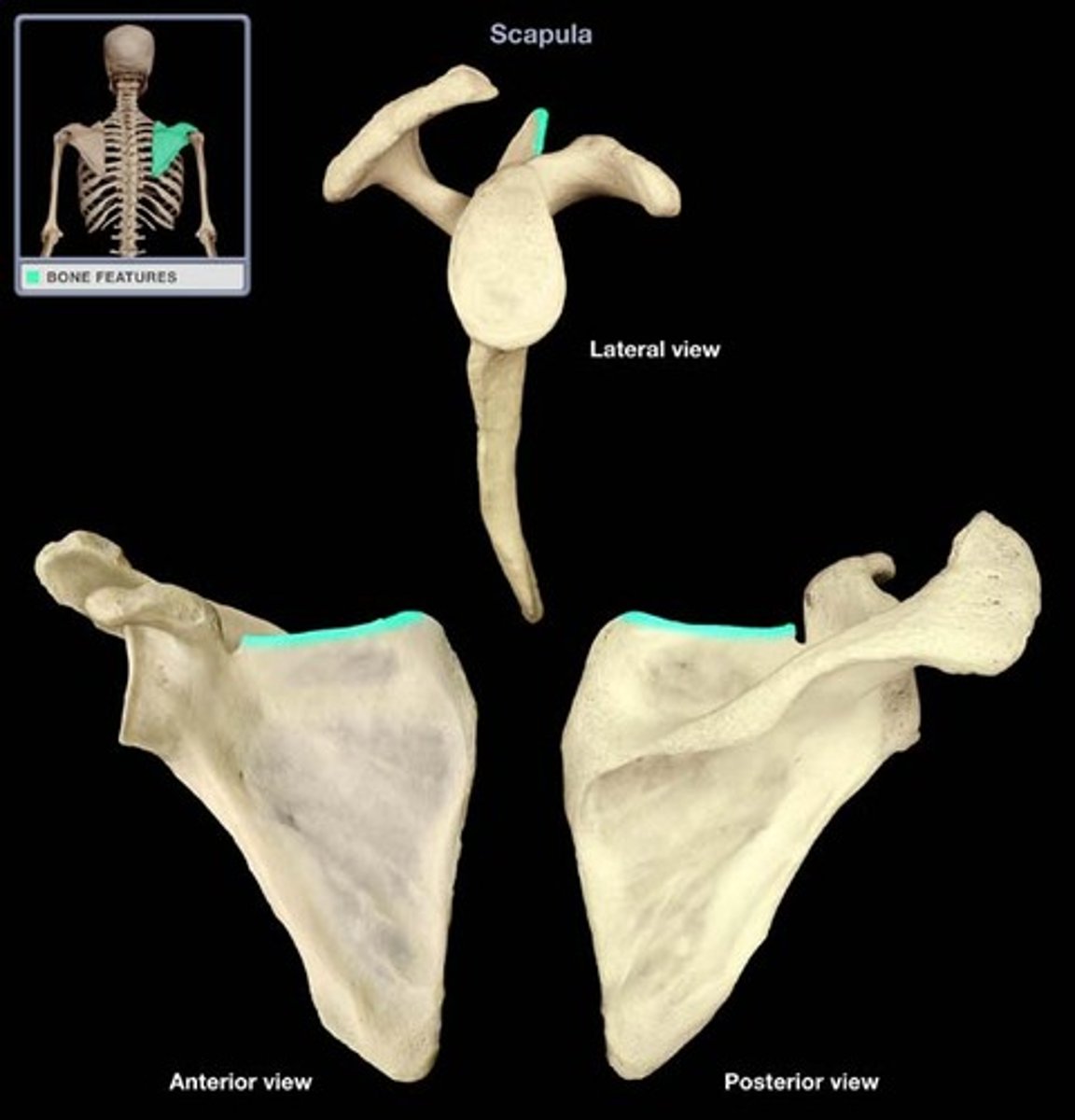
medial border (scapula)
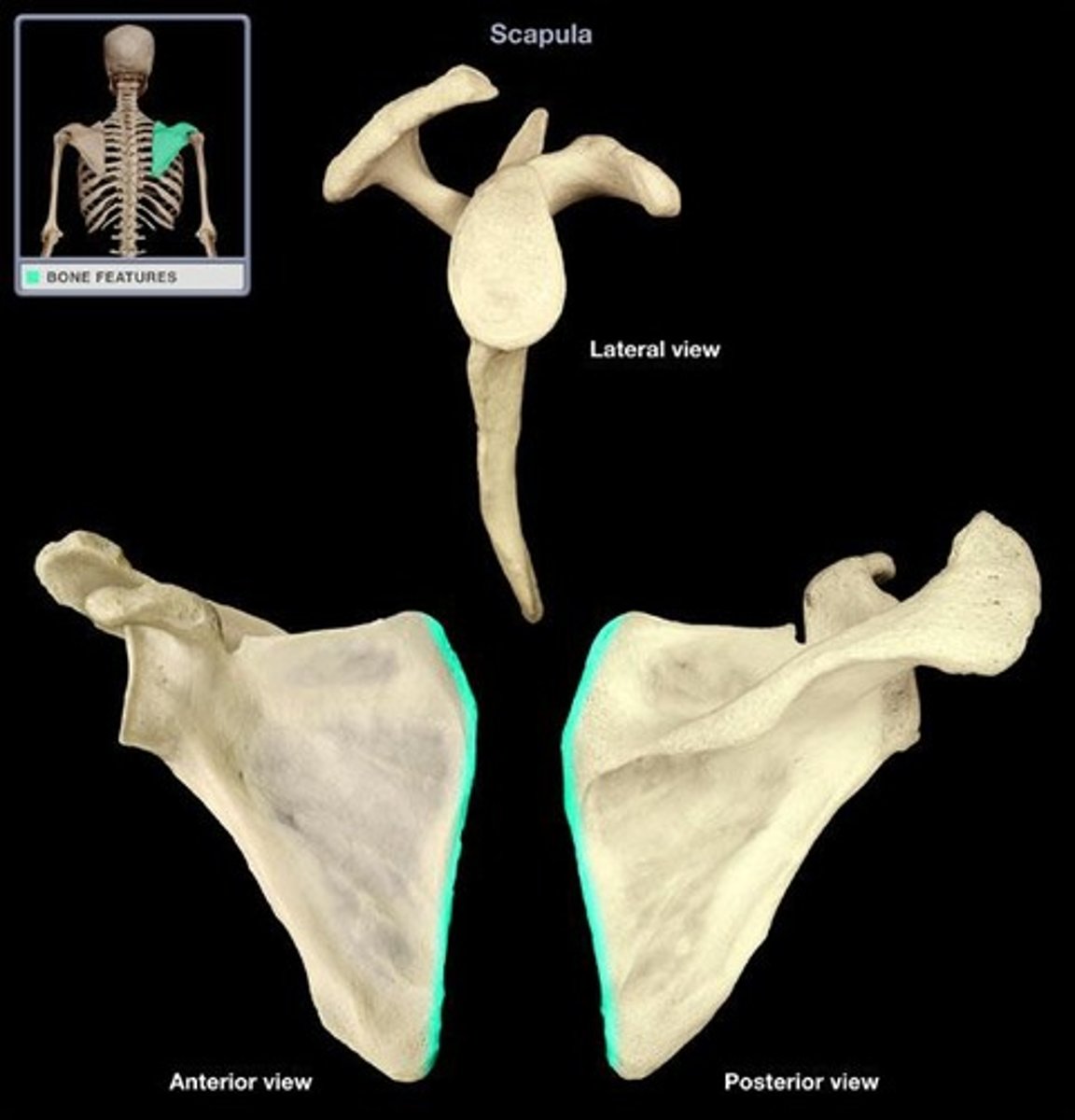
lateral border (scapula)
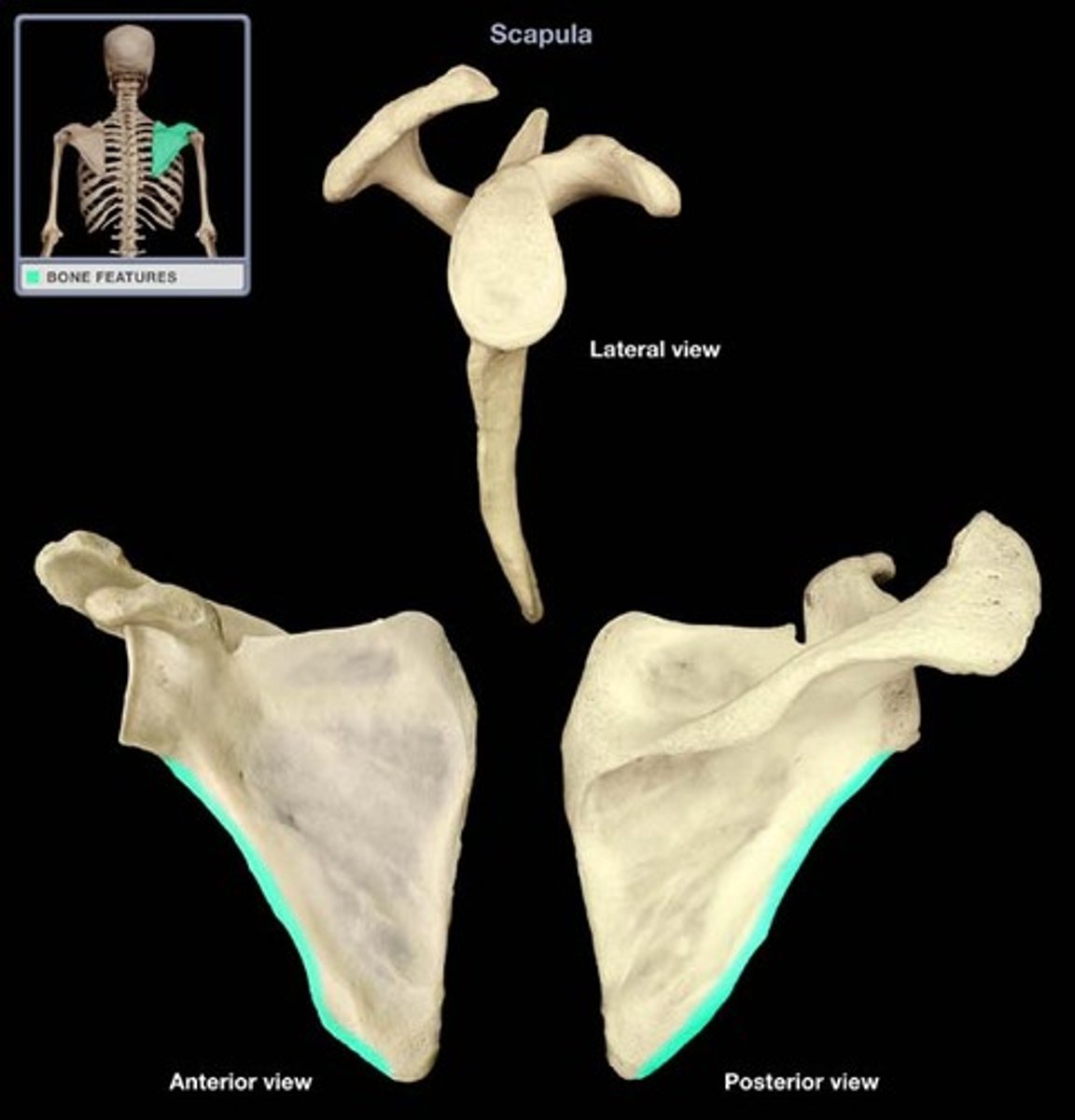
scapular notch (scapula)
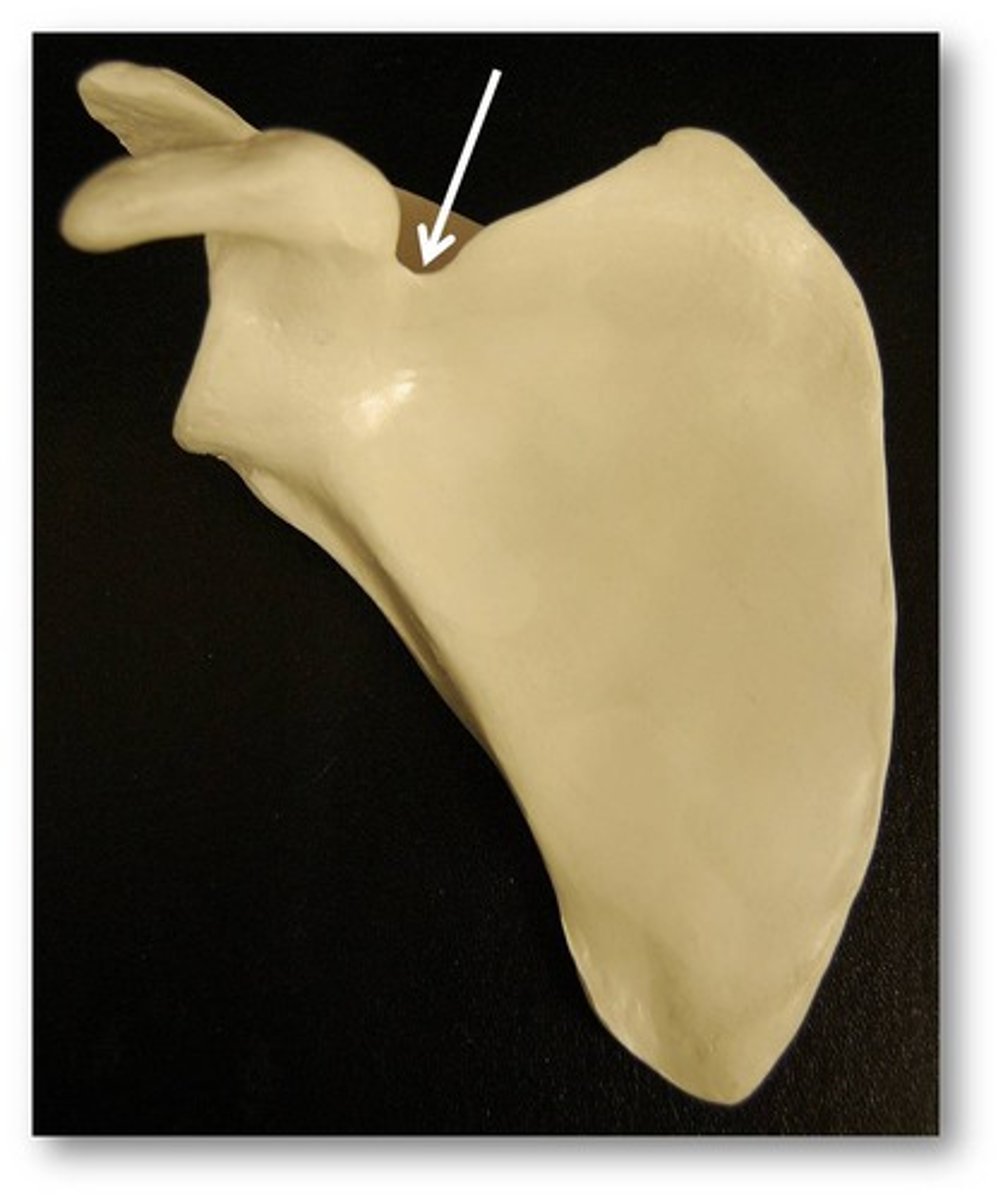
spine (scapula)
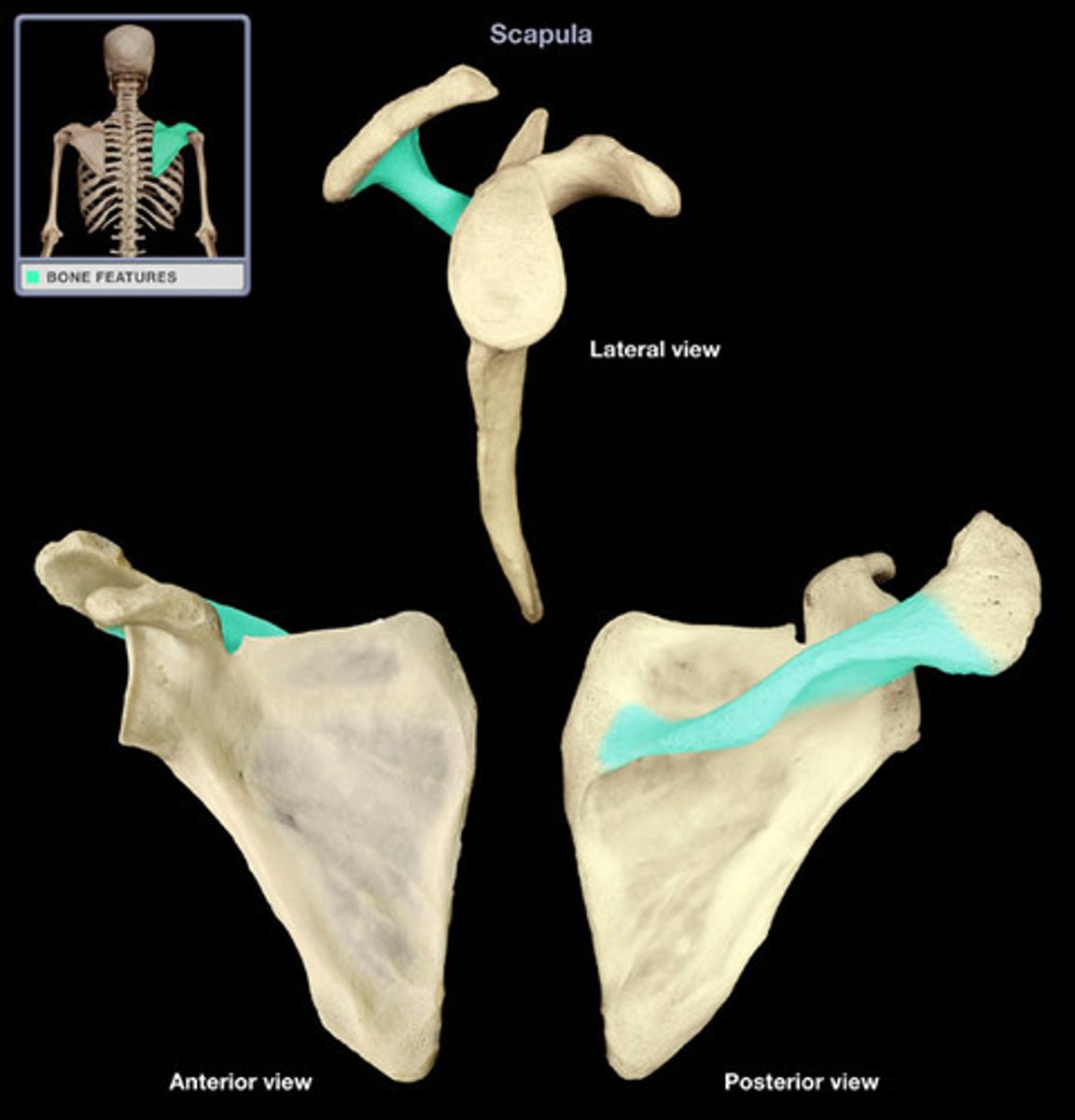
coracoid process (scapula)

acromion process (scapula)
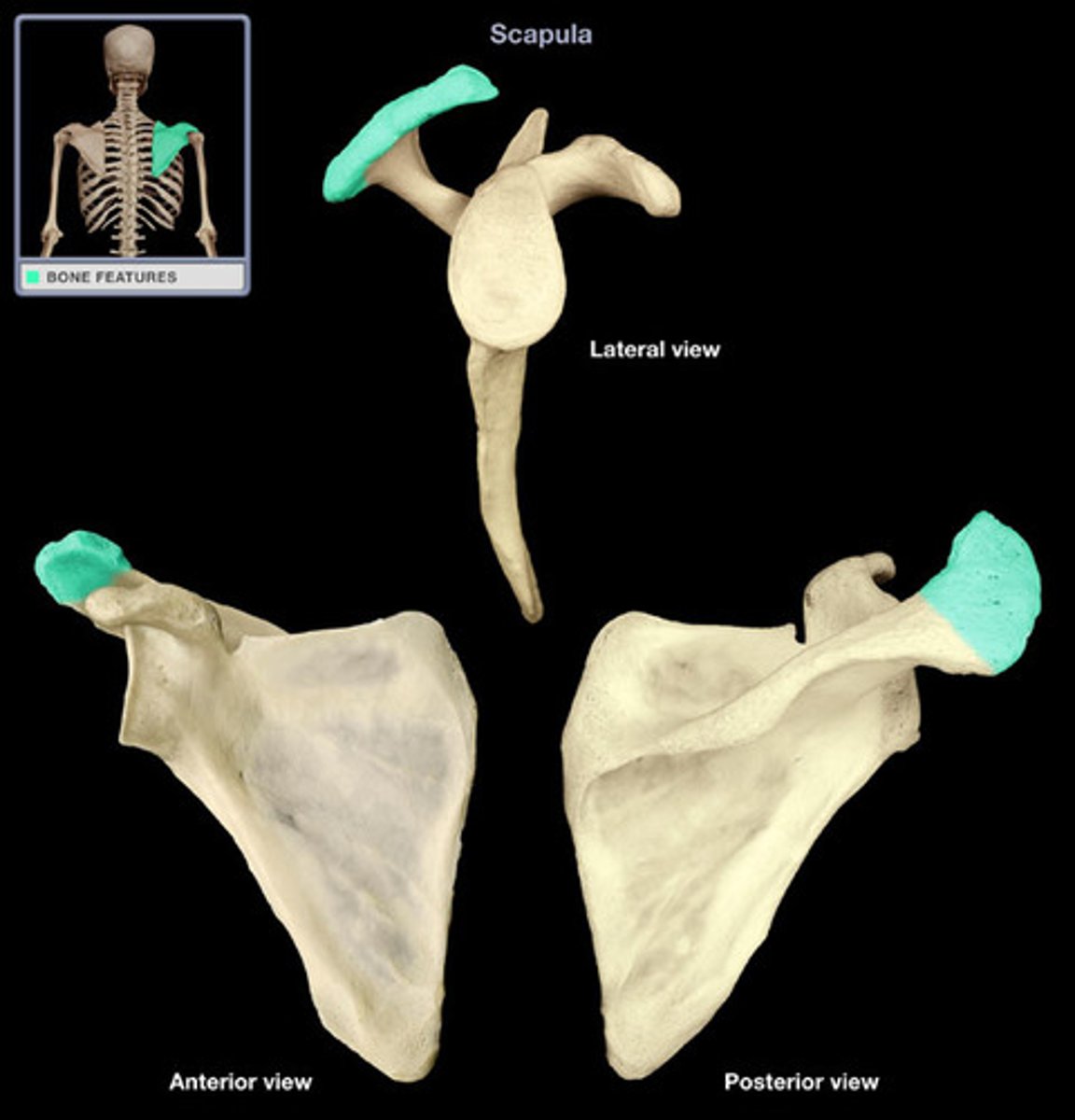
supraglenoid tubercle (scapula)

infraglenoid tubercle (scapula)

glenoid cavity (scapula)
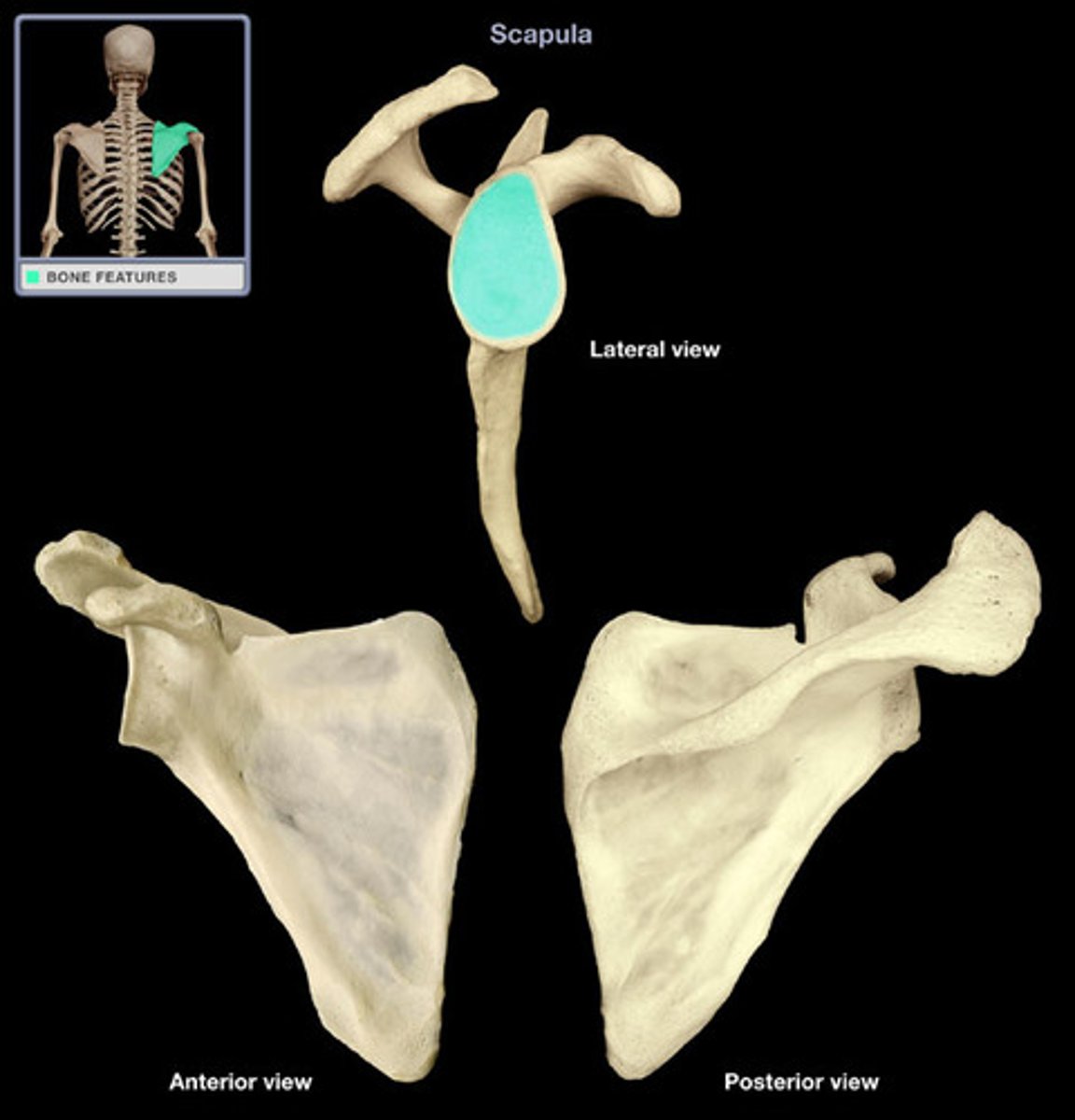
supraspinous fossa (scapula)
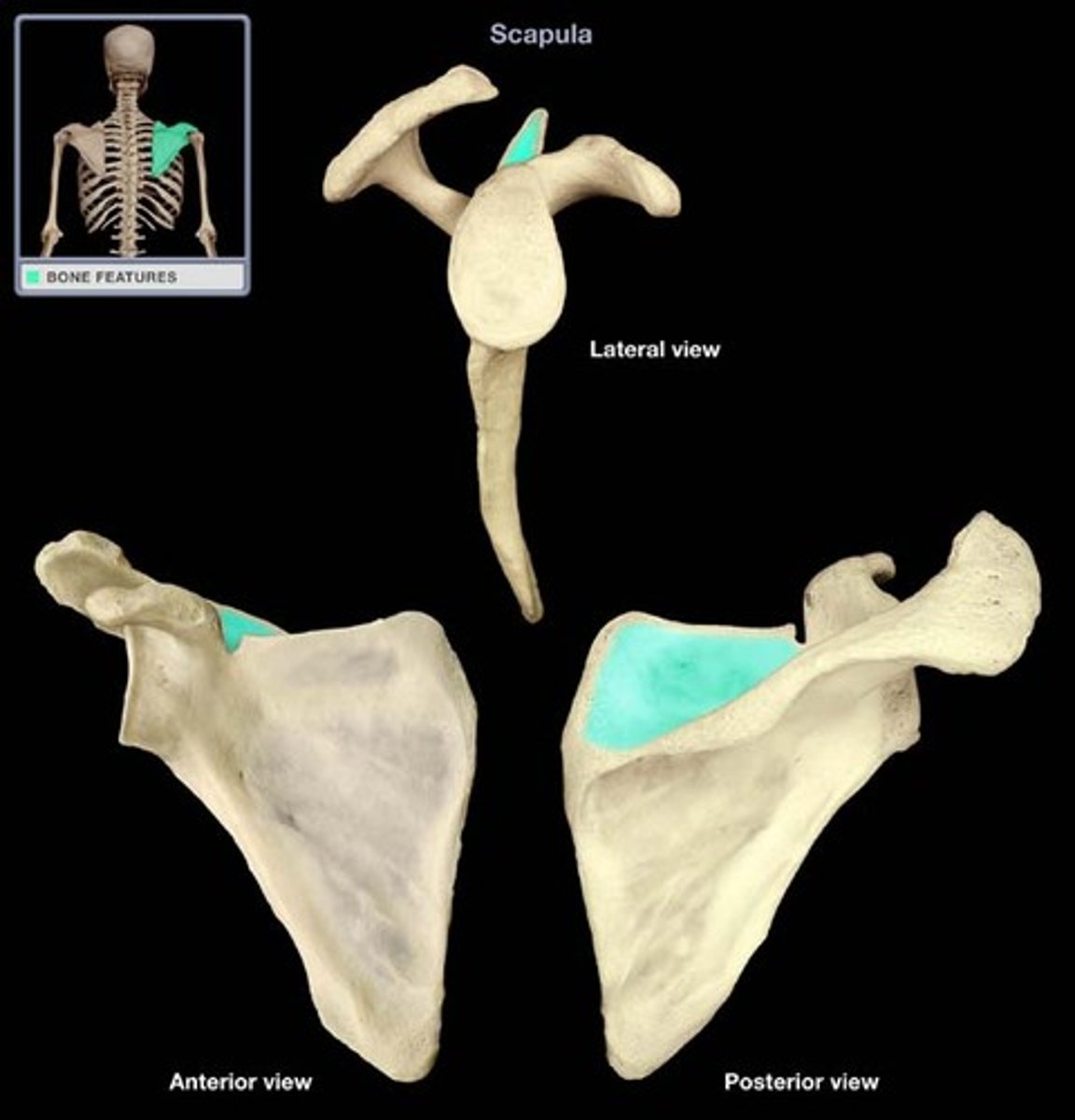
infraspinous fossa (scapula)
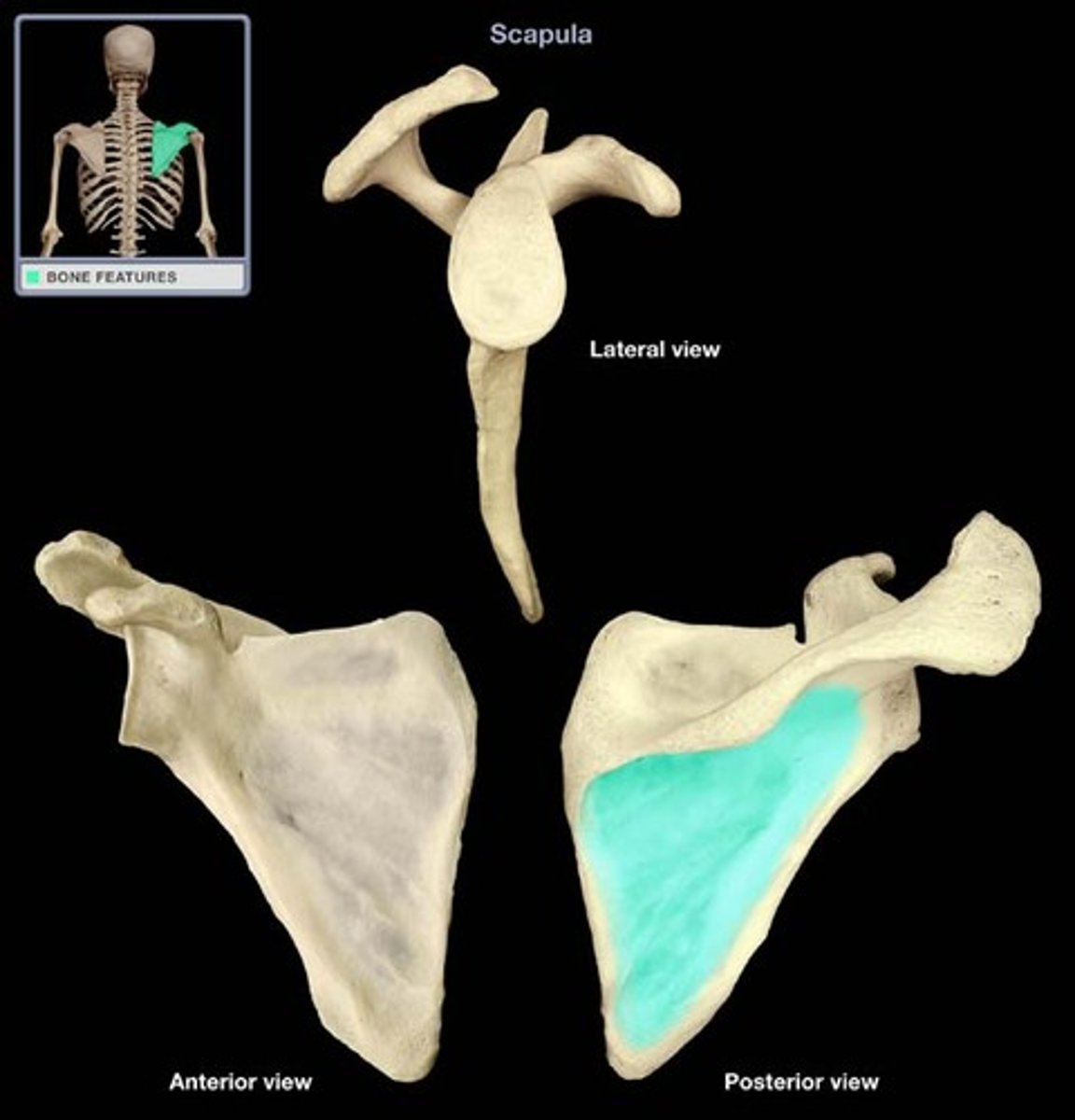
subscapular fossa (scapula)
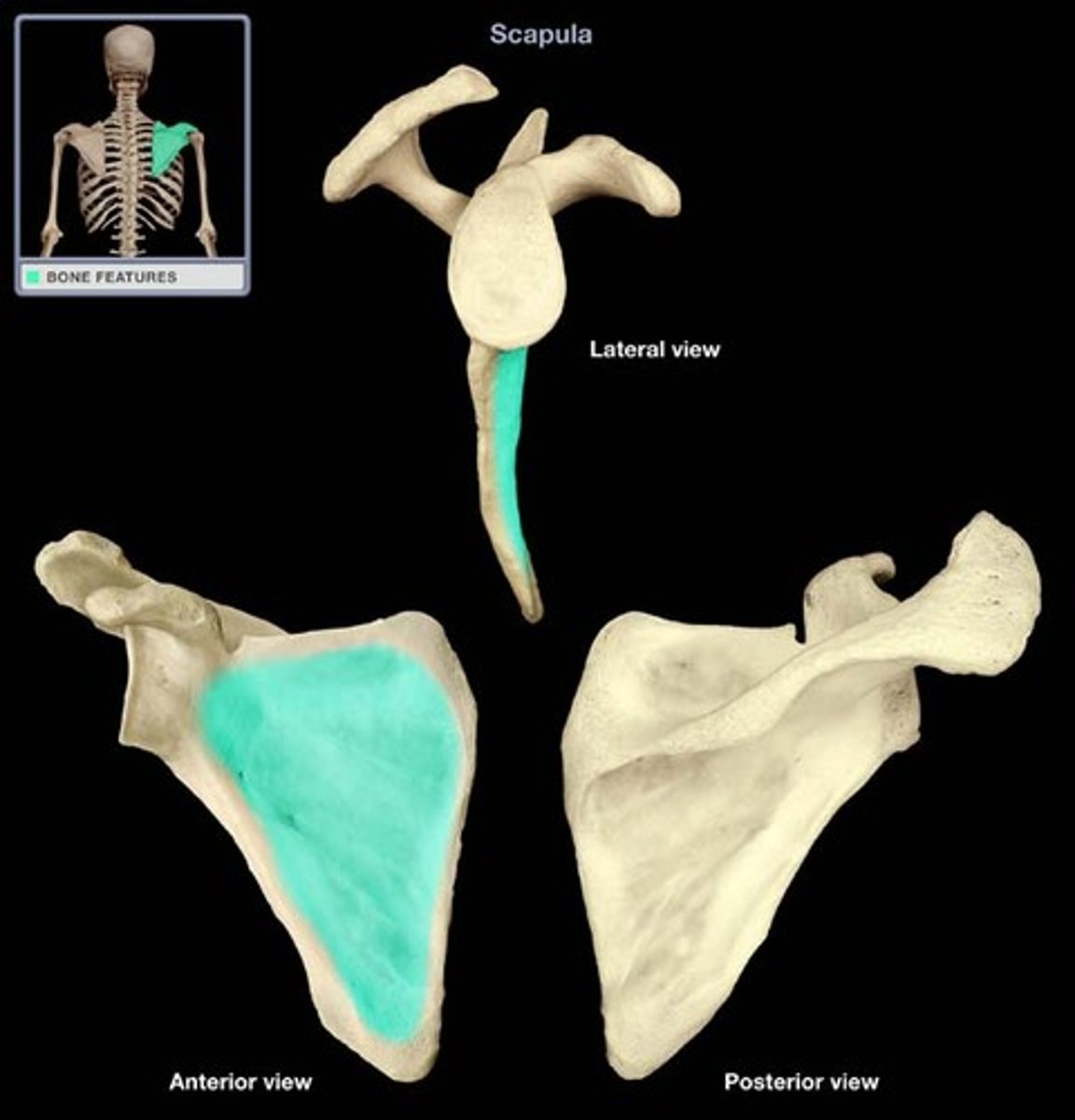
sternal end (clavicle)
